six sigma
description: a set of management techniques aimed at improving business processes by reducing defects
92 results
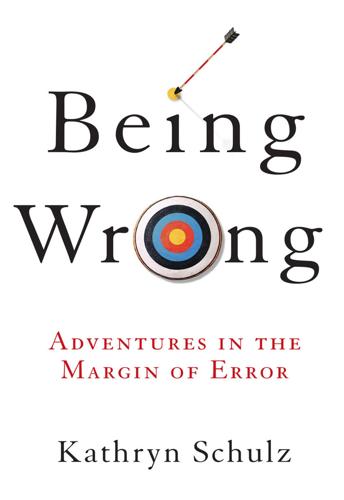
Being Wrong: Adventures in the Margin of Error
by
Kathryn Schulz
Published 7 Jun 2010
In addition to the drop in overall accident rates in commercial passenger service between 1998 and 2007, none of the accidents in 2007 were classified as major. Six Sigma. Most of the background on Six Sigma is drawn from Peter S. Pande, Robert P. Neuman, Roland R. Cavanagh, The Six Sigma Way: How GE, Motorola, and Other Top Companies are Honing Their Performance (McGraw-Hill Professional, 2000). I borrowed (and tweaked) the 300,000 packages example from this book, where it appears on p. 12. My understanding of the “define, measure, analyze, improve, control” process was refined by Forrest W. Breyfogle’s Implementing Six Sigma: Smarter Solutions Using Statistical Methods (John Wiley and Sons, 2003).
…
Another well-known example of corporate efforts to prevent error is the quality-control process known as Six Sigma. Six Sigma was pioneered at Motorola in 1986 and is now used by the majority of Fortune 500 companies, plus countless smaller businesses. The protocol’s name comes from statistics: the Greek letter sigma (s) indicates the amount of standard deviation from a given norm. In this case, all deviation is assumed to be undesirable—an error in a manufacturing process or in its end product. A company that has achieved Six Sigma experiences just 3.4 such errors per million opportunities to err, a laudably low failure rate (or, framed positively, a 99.9997 percent success rate).
…
If some of your brake pads are a half-inch thick and some are a quarter-inch thick, they might not fit with your other components, or they might not pass safety standards, or they might be rejected by the auto manufacturers you supply. With Six Sigma, then, the goal isn’t to improve the average per se, but to reduce the deviation from that average. To do this, Six Sigma analysts make use of a procedure that is usually encapsulated as “define, measure, analyze, improve, control.” In essence, that procedure involves isolating and assessing every single variable pertaining to a given process. Then analysts begin adjusting those variables to achieve and maintain the optimal outcome in terms of a company’s final product, customer satisfaction, and bottom line.* All of these error-prevention techniques—from Six Sigma to the innovations of the airline industry to the efforts at Beth Israel—have three key elements in common.
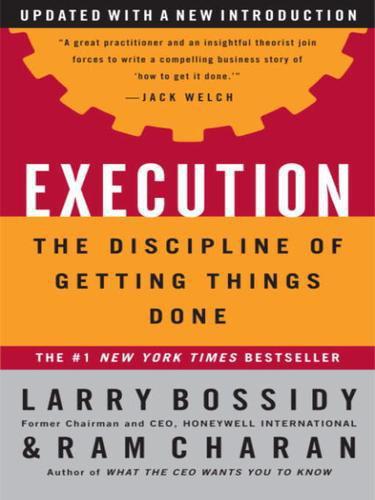
Execution: The Discipline of Getting Things Done
by
Larry Bossidy
Published 10 Nov 2009
Finally, the company had a hodgepodge of systems (a common problem, by the way). I told him he had to make these systems talk to each other without spending a fortune. He told me he’d figure out how. Here’s the good news, though. I was trying to revive the company’s Six Sigma program, which had been let go in my absence. But this manager’s Six Sigma program was right on top of things. It needed a little work, but he had plenty of black belts—people with the highest expertise in the discipline. His people were working on the right projects, and they had all the right metrics for customers. His digitization effort was very nice too.
…
Execution has to be embedded in the reward systems and in the norms of behavior that everyone practices. Indeed, as we will show in chapter 4, focusing on execution is not only an essential part of a business’s culture, it is the one sure way to create meaningful cultural change. One way to get a handle on execution is to think of it as akin to the Six Sigma processes for continual improvement. People practicing this methodology look for deviations from desired tolerances. When they find them, they move quickly to correct the problem. They use the processes to constantly raise the bar, improving quality and throughput. They use them collaboratively across units to improve how processes work across the organization.
…
Leaders who execute look for deviations from desired managerial tolerances—the gap between the desired and actual outcome in everything from profit margins to the selection of people for promotion. Then they move to close the gap and raise the bar still higher across the whole organization. Like Six Sigma, the discipline of execution doesn’t work unless people are schooled in it and practice it constantly; it doesn’t work if only a few people in the system practice it. Execution has to be part of an organization’s culture, driving the behavior of all leaders at all levels. Execution should begin with the senior leaders, but if you are not a senior leader, you can still practice it in your own organization.
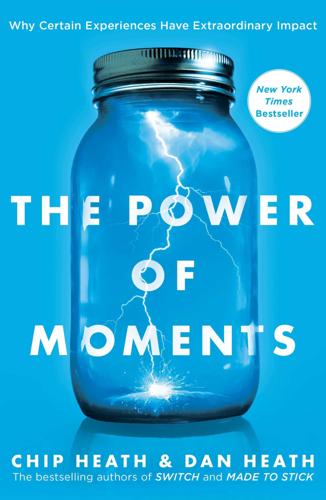
The Power of Moments: Why Certain Experiences Have Extraordinary Impact
by
Chip Heath
and
Dan Heath
Published 2 Oct 2017
In doing his work, Phelps relied heavily on the discipline of Six Sigma. If you manufacture products—let’s say rubber balls—naturally you want them to be free of defects. A “six sigma” process is one that produces only 3.4 defects per million attempts. So if you make a million rubber balls, only 3 or 4 of them will be warped or lopsided. To achieve that level of excellence, you must obsessively monitor the manufacturing process, gathering data to pinpoint problems and to reduce variability. The people who perform these feats of process improvement are practitioners of Six Sigma, and their voodoo can also be practiced on nonmanufacturing situations as well, such as reducing surgical errors or, in the case of Phelps, speeding up engine repair.
…
The most talented practitioners seek out certification as a Six Sigma Black Belt, an honorific that has nothing to do with karate but rather reflects a noble and ultimately hopeless attempt to give the work some sex appeal. Back to the story: Phelps needed a Six Sigma Black Belt to assist him with his work in Albany, New York, and he hired Ranjani Sreenivasan for the role. Raised in India, Sreenivasan had been in the United States for only three years, having come to complete her master’s degree in mechanical engineering. Sreenivasan’s role was to use Six Sigma to help colleagues improve their processes, for instance by reorganizing the service shops so that more frequently used tools were closer at hand.
…
Sreenivasan had a different perspective. She wasn’t introverted—her friends had nicknamed her “Thunder,” because they always knew when she was in the room. Rather, she was overwhelmed. She knew a lot about Six Sigma but almost nothing about servicing diesel engines. In meetings she felt as if her colleagues were “speaking in Greek and Latin.” She’d take notes of all the terms they used and ask someone later what they meant. At her first team meeting for a Six Sigma project, she sat silently, and afterward approached Phelps, distraught. “I was so upset,” she said. “I was seen as this new hire who knew nothing.” There was grumbling about her performance.
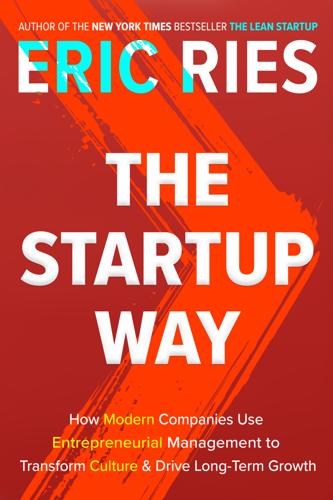
The Startup Way: Making Entrepreneurship a Fundamental Discipline of Every Enterprise
by
Eric Ries
Published 15 Mar 2017
Welch introduced the process to GE with the goal of achieving Six Sigma Quality across the company within five years, stating, “Quality can truly change GE from one of the great companies to absolutely the greatest company in world business.”6 As I traveled around GE training executives, a lot of questions arose, from both fans and skeptics of Six Sigma, as to whether FastWorks was to be GE’s next “big thing.” Did it render past Six Sigma training obsolete? If FastWorks was meant to work alongside Six Sigma, how would you know when to use which? Were there certifications and levels to Lean Startup knowledge akin to the colored belts of Six Sigma? One day, as I was meeting with a Six Sigma black belt from one of GE’s industrial businesses—who was quite skeptical— I found myself distracted by the mug on his desk, which read: FAILURE IS NOT AN OPTION.
…
HOW DO WE DEAL WITH FAILURE? No doubt you’ve heard of Six Sigma, one of the most famous corporate transformations in management history. Introduced to GE in 1995 by CEO Jack Welch, Six Sigma is a process to develop and deliver near-perfect products. Sigma is a statistical term measuring how far a given process deviates from perfection. To achieve Six Sigma Quality, a process must produce no more than 3.4 defects per million opportunities, i.e., it must be defective less than 0.0000034 percent of the time. Welch introduced the process to GE with the goal of achieving Six Sigma Quality across the company within five years, stating, “Quality can truly change GE from one of the great companies to absolutely the greatest company in world business.”6 As I traveled around GE training executives, a lot of questions arose, from both fans and skeptics of Six Sigma, as to whether FastWorks was to be GE’s next “big thing.”
…
There was a time when producing high-quality products on time, on budget, and at scale was one of the preeminent problems of the age. Understanding how to build quality into products from the inside out required mastering the new statistical science of variation, and then devising tools, methodologies, and training programs that could make doing so practical. Standardization, mass production, lean manufacturing, and Six Sigma are all fruits of this hard-won conceptual victory. Baked into these methods is a presupposition that failure can be prevented through diligent preparation, planning, and execution. But the startup part of the management portfolio challenges this assumption. If some projects fail to meet their projections because the underlying uncertainty was extremely high, how do we hold those leaders accountable?
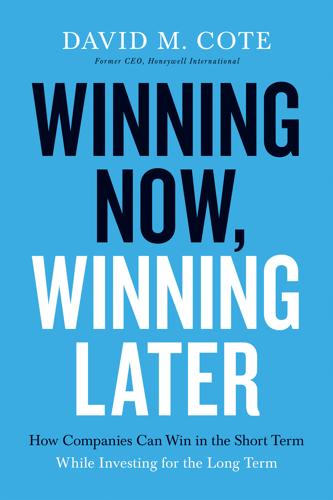
Winning Now, Winning Later
by
David M. Cote
Published 17 Apr 2020
In 2002, we had begun to comprehensively train our workforce in the Six Sigma methodology for both design and manufacturing, hoping to improve the quality of our production processes. Previous Six Sigma training had touched only a small percentage of manufacturing people and products, and no engineers. But I rolled out the program too quickly and hadn’t refined how we presented it to workers and managers so that their mind-set would change, and they’d view it as more than just a training exercise. Plants that had trained in Six Sigma didn’t see appreciable improvements in quality because they hadn’t changed how they did their work.
…
The plant manager proudly showed me charts documenting how teams had improved producibility (the percentage of parts that emerge from production perfect the first time around) from 72 percent to 85 percent. That represented progress, but I couldn’t help but wonder why, after years of Six Sigma, we weren’t at 99-plus percent. Digging into it, I learned that the business had recently shifted production of a number of its poorly designed products to a new facility in Malaysia rather than fix the designs. In other words, they decided to manufacture poor designs in a lower-cost factory rather than fix the designs. Not very “Six Sigma” at all. We went back and implemented Six Sigma again more rigorously. Our Aerospace leader put in place quantifiable, trackable producibility metrics to govern every new design.
…
I would also ask trusted friends and colleagues what they thought about my decisions, knowing that if they saw flaws in my thinking, they wouldn’t hesitate to let me know. I wish I could say I was perfect at questioning my own beliefs, but I wasn’t. One of my greatest regrets from my time at Honeywell concerns how we implemented Six Sigma, a well-known quality improvement methodology.3 While we invested a great deal in the implementation, as I’ll describe in a later chapter, it didn’t work as well as it should have. From what I could tell at the time, the program was working fine. However, the signs of failure were there—I just didn’t pay much attention to them.
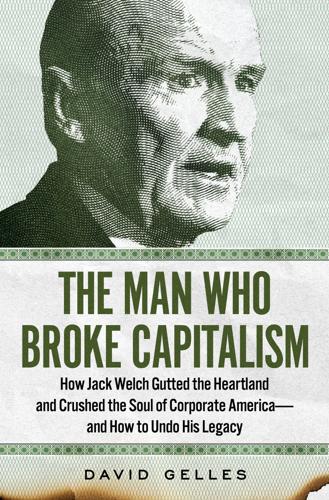
The Man Who Broke Capitalism: How Jack Welch Gutted the Heartland and Crushed the Soul of Corporate America—and How to Undo His Legacy
by
David Gelles
Published 30 May 2022
But McNerney found other ways to ingratiate himself with Welch. In the mid-1990s, McNerney became one of the most zealous champions of Six Sigma, a new quality improvement methodology that Welch was pushing on the company. Inspired by the Japanese notion of kaizen, or continuous improvement, Six Sigma used a complex system of feedback and buzzwords to try and root out any lingering vestiges of inefficiency. Whether it actually helped or just created a lot of paperwork was a subject of fierce debate. But during Welch’s heyday, championing Six Sigma was a must for executives hoping to stay in the boss’s good graces, and McNerney embraced the cause with gusto.
…
But during Welch’s heyday, championing Six Sigma was a must for executives hoping to stay in the boss’s good graces, and McNerney embraced the cause with gusto. “It’s our new global language,” he said. “We’re talking about the same things in India that we’re talking about in Hungary that we’re talking about in the United States that we’re talking about in Brazil. We’re using the same terminology.” Whether it was Six Sigma, favorable market conditions, or McNerney’s own campaign of layoffs and outsourcing, whatever he did worked during his years overseeing the lighting business, and he was subsequently given control of GE’s aircraft engines division. GE was one of the biggest producers of jet engines, and a major part of McNerney’s job involved managing relations with the unit’s two most important customers, Airbus, and especially Boeing.
…
“The mere mention of his name made everyone richer,” Businessweek wrote. Having settled into his new role, McNerney pulled his own Neutron Jack move, announcing the elimination of 5,000 jobs. Before long, that figure grew to 8,000, then 11,000. From there, he continued to bring the Welch playbook to 3M. He implemented Six Sigma and tried to formalize what was at times a freewheeling, creative culture. McNerney said he wasn’t trying to stifle innovation. “The DNA of this company supports idea generation,” he said. “I don’t want to kill that, I want to support that. I just want to make the assessment of our ideas to be more rigorous.”
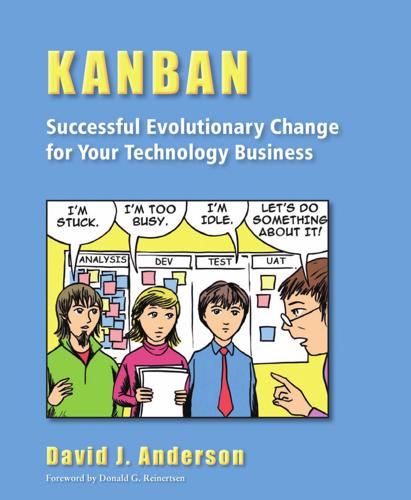
Kanban: Successful Evolutionary Change for Your Technology Business
by
David J. Anderson
Published 6 Apr 2010
While Deming’s ideas were embedded into TPS in Japan at the shop-floor level, where SPC and the System of Profound Knowledge were employed to identify local improvement opportunities, another body of knowledge developed in the U.S. based around Deming’s ideas. Six Sigma started at Motorola, but really came of age when it was adopted at GE under Jack Welch’s leadership. Six Sigma employs SPC to identify common and special cause variation and uses a process similar to that described by Deming to eliminate special cause variations at their root cause and prevent them from recurring; and in addition, to reduce common cause variation and make a process, workflow, or system more predictable. Unlike TPS, which is all about shop-floor initiatives run by empowered workers implementing small kaizen events by the hundreds and thousands, Six Sigma has developed into a much more low-trust, command-and-control method that tends to involve far fewer improvement opportunities, generally implemented at a more strategic level, and run as specific projects in their own right.
…
The project leader carries the title Black Belt and has generally had years of training in the methodology to earn his status. Because Kanban embraces the ideas of Deming and provides the instrumentation and transparency to see variability and its effect, Kanban can be used to enable either a kaizen-style improvement program or a Six Sigma–style improvement program. Fitting Kanban to Your Company Culture If your company is a Six Sigma company, Kanban can help you run Six Sigma initiatives in the software, systems, product development, or IT organization. If your company is a Lean company, Kanban is a natural fit. It can enable an entire Lean initiative in your software, systems, product development, or IT organization.
…
Frequent Releases Build Trust Tacit Knowledge Balance Demand against Throughput Create Slack Prioritize Influence Building Maturity Attack Sources of Variability to Improve Predictability Recipe for Success and Kanban Takeaways Chapter 4: From Worst to Best in Five Quarters The Problem Visualize the Workflow Factors Affecting Performance Make Process Policies Explicit Estimation Was a Waste Limit Work-in-Progress Implementing Changes Adjusting Policies Takeaways Chapter 5: A Continuous Improvement Culture Kaizen Culture Kanban Accelerates Organizational Maturity and Capability Sociological Change Takeaways Part Three: Implementing Kanban Chapter 6: Mapping the Value Stream Defining a Start and End Point for Control Work Item Types Drawing a Card Wall Demand Analysis Allocating Capacity According to Demand Anatomy of a Work Item Card Electronic Tracking Setting Input and Output Boundaries Coping with Concurrency Coping with Unordered Activities Takeaways Chapter 7: Coordination with Kanban Systems Visual Control and Pull Electronic Tracking Daily Standup Meetings Release Planning Meetings Triage Issue Log Review and Escalation Sticky Buddies Synchronizing across Geographic Locations Takeaways Chapter 8: Establishing a Delivery Cadence Transaction Costs of Delivery Agreeing a Delivery Cadence Improve Efficiency to Increase Delivery Cadence Making On-Demand or Ad Hoc Deliveries Takeaways Chapter 9: Establishing an Input Cadence Coordination Costs of Prioritization Agreeing on a Prioritization Cadence Efficiency of Prioritization Transaction Costs of Prioritization Improve Efficiency to Increase Prioritization Cadence Making On-Demand or Ad Hoc Prioritization Takeaways Chapter 10: Setting Work-in-Progress Limits Limits for Work Tasks Buffer Bottlenecks Input Queue Size Unlimited Sections of Workflow Don’t Stress Your Organization Capacity Allocation Takeaways Chapter 11: Establishing Service Level Agreements Typical Class-of-Service Definitions Expedite Fixed Delivery Date Standard Class Intangible Class Policies for Class of Service Expedite Policies Fixed Delivery Date Policies Standard Class Policies Intangible Class Determining a Service Delivery Target Assigning a Class of Service Putting Classes of Service to Use Allocate Capacity to Classes of Service Takeaways Chapter 12: Metrics and Management Reporting Tracking WIP Due Date Performance Throughput Issues and Blocked Work Items Flow Efficiency Takeaways Chapter 13: Scaling Kanban Hierarchical Requirements Decouple Value Delivery from Work Item Variability Introducing Swim Lanes Alternative Approach to Size Variability Incorporating Classes of Service Systems Integration Managing Shared Resources Takeaways Chapter 14: Operations Review Ante Meeting Set a Business Tone from the Beginning Inviting Guests Broadens the Audience and Adds Value Main Agenda Keystone of Lean Transition Appropriate Cadence Demonstrating the Value of Managers Organizational Focus Fosters Kaizen An Earlier Example Takeaways Chapter 15: Starting a Kanban Change Initiative The Primary Goal for Our Kanban System Secondary Goals for Our Kanban System Know the Goals and Articulate the Benefits Steps to Get Started WIP Limits Prioritization Delivery/Release Lead Time and Classes of Service Takeaways Part Four: Making Improvements Chapter 16: Three Types of Improvement Opportunity Bottlenecks, Waste Elimination, and Reduction of Variability Theory of Constraints Five Focusing Steps Lean, TPS, and Waste Reduction Deming and Six Sigma Fitting Kanban to Your Company Culture Takeaways Chapter 17: Bottlenecks and Non-Instant Availability Capacity-Constrained Resources Elevation Actions Exploitation/Protection Actions Subordination Actions Non-Instant Availability Resources Exploitation/Protection Actions Subordination Actions Elevation Actions Takeaways Chapter 18: An Economic Model for Lean Redefining “Waste” Transaction Costs Coordination Costs How Do You Know if an Activity Is a Cost?
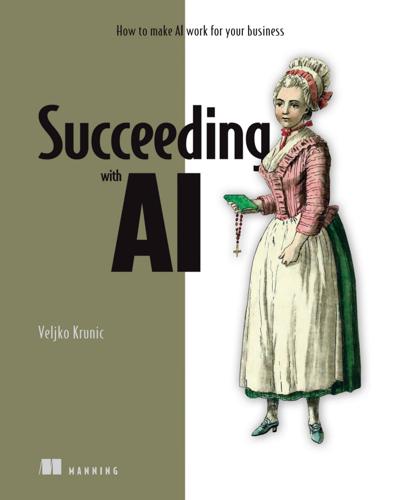
Succeeding With AI: How to Make AI Work for Your Business
by
Veljko Krunic
Published 29 Mar 2020
RMSE is defined by the following formula: RMSE = 1 n n (Yi − Â) Yi 2 i =1 Where: – n = The number of points for which the ML algorithm has predicted the value – Ŷi = The predicted value of point i, according to the ML algorithm – Yi = The actual value of point i Six Sigma—A set of methods that help an organization improve its business pro- cesses [21,22]. While Six Sigma historically has been used to help improve the 224 APPENDIX A Glossary of terms quality of many manufacturing processes, the methods and practices associated with Six Sigma have been used extensively in all fields of business. Practitioners of Six Sigma view all work as processes that are subject to never-ending improvement. Six Sigma has pioneered usage of data and statistical techniques to improve the field of business operations.
…
Communications of the ACM. 2012; 55(10):78–87. Apollo 17 crew. The blue marble. 1972. Available from: https://en.wikipedia.org/w/ index.php?title=The_Blue_Marble&oldid=846541979 ASQ. Six Sigma belts, executives and champions—What does it all mean? [Cited 2018 Jul 5.] Available from: http://asq.org/learn-about-quality/six-sigma/overview/belts-executives-champions.html ASQ. Six Sigma definition—What is lean Six Sigma? [Cited 2018 Jul 5.] Available from: http://asq.org/learn-about-quality/six-sigma/overview/overview.html Whitehorn M. The parable of the beer and diapers. 2006 Aug 15 [cited 2018 Jul 5]. Available from: https://www.theregister.co.uk/2006/08/15/beer_diapers/ ASQ.
…
He holds a PhD in computer science from the University of Colorado at Boulder and an additional MS in engineering management from the same institution. His MS degree in engineering management focused on applied statistics, strategic planning, and the use of advanced statistical methods to improve organizational efficiency. He is also a Six Sigma Master Black Belt. Veljko has consulted with or taught courses for five of the Fortune 10 companies (as listed in September 2019), many of the Fortune 500 companies, and a number of smaller companies, in the areas of enterprise computing, data science, AI, and big data. Before consulting independently, he worked in the professional services organizations (PSOs) of Hortonworks, the SpringSource division of VMware, and the JBoss division of Red Hat.
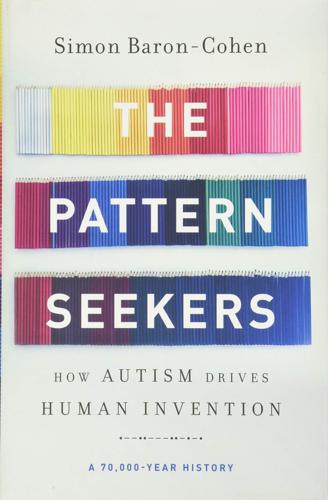
The Pattern Seekers: How Autism Drives Human Invention
by
Simon Baron-Cohen
Published 14 Aug 2020
Galanes (2018), “The mind meld of Bill Gates and Steven Pinker,” New York Times, January 27; and S. Levy (2019), “Inside Bill’s Brain calls BS on Malcolm Gladwell’s outliers theory,” Wired, September 20. 21. The sigma character is taken from Wikipedia, “The common Six Sigma symbol,” en.wikipedia.org/wiki/Six_Sigma#/media/File:Six_sigma-2.svg; see also D. Dusharme, “Six sigma survey: Breaking through the six sigma hype,” Quality Digest, www.qualitydigest.com/nov01/html/sixsigmaarticle.html. The concept of Six sigma is not without its critics but is nevertheless now a powerful byword for making things work to an awesome level of quality. 22. On engineers, see G. Madhavan (2015), Applied minds: How engineers think (London: W.
…
This is reminiscent of how modern engineers check and recheck manufacturing processes to eradicate one-flaw-in-a-million cycles of the system. Indeed, engineers today repeat the cycle of if-and-then patterns not 10,000 times but one million times, to ensure that the new system they have created or assembled delivers a near-identical result every time. They call this “Six sigma,” written like this, using the Greek character sigma:21 It’s called Six sigma because it is six standard deviations from the mean—an extreme outlier. Engineers, who are hyper-systemizers, want 99.99966 percent of the repetitions of a mechanical system to be defect-free, allowing for just 3.4 defects per million opportunities (DPMO).22 That’s pretty close to that definition of perfection.
…
Engineers, who are hyper-systemizers, want 99.99966 percent of the repetitions of a mechanical system to be defect-free, allowing for just 3.4 defects per million opportunities (DPMO).22 That’s pretty close to that definition of perfection. I find it hugely reassuring that, when the plane I’m on takes off, or when I sit on the chairlift at a ski resort, these machines will work flawlessly at least 999,996.6 times out of a million. The Six sigma rule is not just reassuring to us as passengers and consumers, but it can also lead to massive profits. General Electric, for example, announced that when they first used Six sigma, their profits grew by more than $1 billion. Good engineering and invention hinge not just on going through the if-and-then steps but also on the feedback loop, which itself entails the twin processes of iteration and refinement.

Arriving Today: From Factory to Front Door -- Why Everything Has Changed About How and What We Buy
by
Christopher Mims
Published 13 Sep 2021
The foundations of how Amazon would measure its own output and attempt to improve it had been laid by Jeff Wilke, before Marc arrived. Wilke had been trained in the doctrine of Six Sigma, which was invented at Motorola in 1986. In the mid-1990s, it was adopted by General Electric CEO Jack Welch. Six Sigma relies on a system of “continuous improvement,” plus statistical methods for evaluating the outcome of manufacturing processes. The goal of Six Sigma, and the origin of its name, is that 99.99966 percent of the time, whatever you’re doing to a part or accomplishing in a system, it should come out perfect. In some aspects, Six Sigma is Taylorism taken to the nth degree. Like Taylorism, one of its flaws is that it treats the human like just another cog in the machine.
…
Infamously, McNamara demanded mountains of data on how the war was going, all of which only served to obscure the reality on the ground. Six Sigma fell out of fashion as the fortunes of GE declined, and especially as companies moved on to the doctrine of “disruption,” which favored innovation and creative thinking over the relentless pursuit of efficiency. Executives are always on the hunt for the next management fad, and it was kaizen’s turn. Advocates of kaizen, or lean manufacturing, shared with the disciples of Six Sigma an obsession with eliminating defects in the manufacturing process itself, at the moment a thing was made, rather than trying to repair those flaws at the end of the assembly line, as had been common in the Fordist age of mass production.
…
Advocates of kaizen, or lean manufacturing, shared with the disciples of Six Sigma an obsession with eliminating defects in the manufacturing process itself, at the moment a thing was made, rather than trying to repair those flaws at the end of the assembly line, as had been common in the Fordist age of mass production. Six Sigma “black belts” and lean manufacturing consultants also shared a method for accomplishing this defect-free assembly line known as “continuous improvement.” On the foundation of this shared understanding, Marc built trust with Jeff Wilke. “Wilke did a super job in putting some discipline into the system [at Amazon] by doing a lot of Six Sigma work,” says Marc. “When I came, I continued that and supplemented it. We’re very much on the same wavelength.” From the earliest, frenetic days of Amazon’s distribution operation, when the company shipped books out of its first “warehouse”—really a two-hundred-square-foot-basement room in downtown Seattle—the company’s breakneck expansion presented all its chiefs of logistics with a near-impossible task.
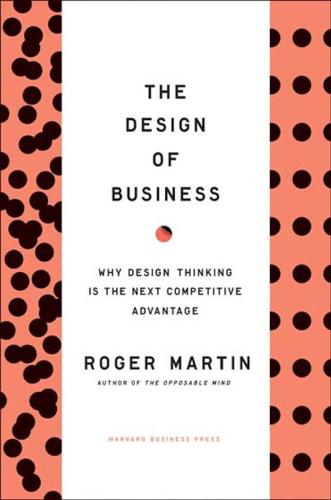
Design of Business: Why Design Thinking Is the Next Competitive Advantage
by
Roger L. Martin
Published 15 Feb 2009
The managerial skills that are built and rewarded are those of running heuristics or algorithms to produce reliable outcomes. Consider the cottage industry that has grown up around Six Sigma. Six Sigma relentlessly simplifies algorithms to the bare minimum, taking reliability to its logical extreme. Its statistical measures plane away from the algorithm any nuance that would sacrifice consistency of result. Many organizations—most famously, General Electric—promote Six Sigma techniques and reward managers who become Six Sigma “Black Belts.” These Black Belts are reliability masters. In even wider use than Six Sigma is a tool that was virtually unknown to corporate boardrooms just a generation ago: linear regression, a tool that is used for “proving” statistically the relationship between one factor (e.g., store hours) and another (e.g., sales per square foot).
…
Enterprise resource planning (ERP) systems keep track of all corporate data in a single database and spit out comprehensive reports on everything from inventory levels to sales by product to cost absorption by area. Customer relationship management (CRM) systems purport to ensure that a company knows exactly who its customers are, what each is buying, and what more it could sell to them. Six Sigma programs and total quality management (TQM) systems knock the waste out of an organization’s systems, and knowledge management (KM) systems (attempt to) organize all the knowledge in a corporation. Those and other tools enable the modern corporation to crunch data objectively and extrapolate from the past to make “scientific” predictions about the future, all part of the quest for reliability.
…
An ERP system can provide useful real-time data to track whether resources are being used efficiently, but it cannot generate a robust strategy. CRM systems put a wealth of data at the fingertips of customer-service reps, but data is no substitute for intimacy, as corporations discover when customers complain that the systems make them feel as if they are buying from Big Brother. Six Sigma and TQM systems drive out waste from the business as currently configured, but they will not generate innovative new business designs. KM systems will (sort of) organize all the knowledge in a corporation, but they cannot produce imaginative breakthroughs. Advances in knowledge emerge from the pursuit of valid results.
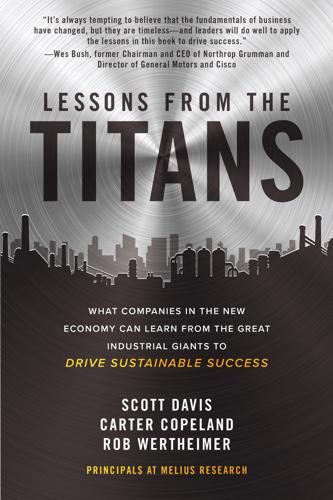
Lessons from the Titans: What Companies in the New Economy Can Learn from the Great Industrial Giants to Drive Sustainable Success
by
Scott Davis
,
Carter Copeland
and
Rob Wertheimer
Published 13 Jul 2020
Welch was a young (mid-forties) and aggressive leader who saw much bigger potential. His first five years were spent cutting layers of management and pushing decision-making down through the organization. He also invested heavily in factory automation and pushed productivity onto the factory floor, a campaign that culminated in the 1990s with the aggressive adoption of Six Sigma (a system for extreme quality control). (See Figure 1.2.) Figure 1.2: The Jack Welch years (1981–2001). Source: General Electric filings, press reports; Bloomberg Meanwhile he pushed his executives to boost market share and find new areas of growth. Divisions had to be number one or number two in key markets to be kept in the mix.
…
It could lend where banks typically didn’t like to go in those days, areas like store-branded credit cards, project and equipment financing, aircraft leasing, railcar leasing, medical equipment leasing, and private equity financing. Anything niche or unique fit the vision. Insurance products were later added to the mix. It wasn’t all perfect, of course. In fact, GE Capital stumbled early on due to the bad decision to purchase Kidder Peabody in 1986—a humbling deal that taught Welch that some businesses just can’t be “Six Sigma’d.” The world of investment banking was just too far afield for GE. In hindsight, the expansion into insurance proved a bad move too, a big setback for GE after Welch retired. Hindsight will also show that GE Capital may not have been the most ethically managed asset that Welch oversaw. The quarter-to-quarter earnings performance eventually revealed a pattern of abuse, notably one-time gains that juiced earnings.
…
His initiatives were never optional, but he sold the merits hard. He took little for granted. In his early years, he endured the extreme unpopularity that comes along with laying off a whopping 100,000 employees, but it’s clear he knew he had no chance unless he fixed the bloated corporate structure. His investments in automation and adoption of Six Sigma kept employees focused for north of a decade, and GE became a world-class manufacturer. The reputation of the company rose steadily, and the results for a broader stakeholder group were largely outstanding. The deals themselves took GE to a different level, but the equal hero here was the operational and management discipline.

Model Thinker: What You Need to Know to Make Data Work for You
by
Scott E. Page
Published 27 Nov 2018
The statistical bar will be lower for a drug that cures a fatal disease and exhibits only minor side effects than for a drug that cures toenail fungus but has a higher-than-expected incidence of bone cancer associated with its usage. The FDA also cares about the power of the statistical test—the probability that the test shows that the drug works. Six Sigma Method As our final application, we show how normal distributions inform quality control through the Six Sigma method. Developed in the mid-1980s by Motorola, the Six Sigma method reduces errors. The method models product attributes as drawn from a normal distribution. Imagine a company that produces bolts for door handles that must fit snugly into knobs made by another manufacturer.
…
If the diameters of the bolts are normally distributed with a mean of 14 millimeters and a standard deviation of 0.5 millimeter, then any bolt that differs by more than two standard deviation fails. Two-standard-deviation events occur 5% of the time—far too high a rate for manufacturers. The Six Sigma method involves working to reduce the size of a standard deviation to lower the probability of a failure. Companies can reduce error rates by tightening quality control. On February 26, 2008, Starbucks closed down over seven thousand shops for over three hours to retrain employees. Similarly, checklists used by airlines and now hospitals reduce variation.7 Six Sigma reduces the standard deviation so that even a six-standard-deviation error avoids a malfunction. In our bolt example, that would require reducing the standard deviation of a bolt’s diameter to one-sixth of a millimeter.
…
In our bolt example, that would require reducing the standard deviation of a bolt’s diameter to one-sixth of a millimeter. Six standard deviations implies an error rate of 2 per billion cases. The actual threshold used assumes an unavoidable rate of one and a half standard deviations. Thus, a six-sigma event actually corresponds to a four-and-a-half sigma event, and an allowable error rate of about 1 per 3 million. The application of the central limit theorem (and therefore an implicit model of additive error) in the Six Sigma method is so subtle as to almost go unnoticed. The bolt manufacturer likely does not perform a precise measurement of the diameter of every bolt. It may sample a few hundred. From that sample, it estimates a mean and a standard deviation.
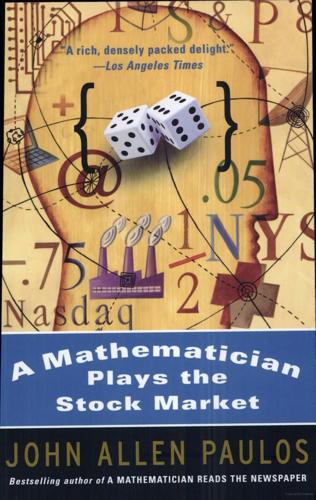
A Mathematician Plays the Stock Market
by
John Allen Paulos
Published 1 Jan 2003
In all cases, the more standard deviations from the expected value, the more unusual the result. This fact helps account for the many popular books on management and quality control having the words “six sigma” in their titles. The covers of many of these books suggest that by following their precepts, you can attain results that are six standard deviations above the norm, leading, for example, to a minuscule number of product defects. A six-sigma performance is, in fact, so unlikely that the tables in most statistics texts don’t even include values for it. If you look into the books on management, however, you learn that Sigma is usually capitalized and means something other than sigma, the standard deviation of a chance-dependent quantity.
…
Chapter 4 - Chance and Efficient Markets Geniuses, Idiots, or Neither Efficiency and Random Walks Pennies and the Perception of Pattern A Stock-Newsletter Scam Decimals and Other Changes Benford’s Law and Looking Out for Number One The Numbers Man—A Screen Treatment Chapter 5 - Value Investing and Fundamental Analysis e is the Root of All Money The Fundamentalists’ Creed: You Get What You Pay For Ponzi and the Irrational Discounting of the Future Average Riches, Likely Poverty Fat Stocks, Fat People, and P/E Contrarian Investing and the Sports Illustrated Cover Jinx Accounting Practices, WorldCom’s Problems Chapter 6 - Options, Risk, and Volatility Options and the Calls of the Wild The Lure of Illegal Leverage Short-Selling, Margin Buying, and Familial Finances Are Insider Trading and Stock Manipulation So Bad? Expected Value, Not Value Expected What’s Normal? Not Six Sigma Chapter 7 - Diversifying Stock Portfolios A Reminiscence and a Parable Are Stocks Less Risky Than Bonds? The St. Petersburg Paradox and Utility Portfolios: Benefiting from the Hatfields and McCoys Diversification and Politically Incorrect Funds Beta—Is It Better? Chapter 8 - Connectedness and Chaotic Price Movements Insider Trading and Subterranean Information Processing Trading Strategies, Whim, and Ant Behavior Chaos and Unpredictability Extreme Price Movements, Power Laws, and the Web Economic Disparities and Media Disproportions Chapter 9 - From Paradox to Complexity The Paradoxical Efficient Market Hypothesis The Prisoner’s Dilemma and the Market Pushing the Complexity Horizon Game Theory and Supernatural Investor/Psychologists Absurd Emails and the WorldCom Denouement Bibliography Index Copyright Page Also by John Allen Paulos Mathematics and Humor (1980) I Think Therefore I Laugh (1985) Innumeracy: Mathematical Illiteracy and its Consequences (1988) Beyond Numeracy: Ruminations of a Numbers Man (1991) A Mathematician Reads the Newspaper (1995) Once Upon a Number: The Hidden Mathematical Logic of Stories (1998) To my father, who never played the market and knew little about probability, yet understood one of the prime lessons of both.
…
For those to whom this is not already Greek, we might say that µL, the mean costs of parking in the lot, and µS, the mean cost of parking on the street, are $13 and $11, respectively. Even though parking in the street is cheaper on average (assuming money was your only consideration), the variability of what you’ll have to pay there is much greater than it is with the lot. This brings us to the notion of standard deviation and stock risk. What’s Normal? Not Six Sigma Risk in general is frightening, and the fear it engenders explains part of the appeal of quantifying it. Naming bogeymen tends to tame them, and chance is one of the most terrifying bogeyman around, at least for adults. So how might one get at the notion of risk mathematically? Let’s start with “variance,” one of several mathematical terms for variability.
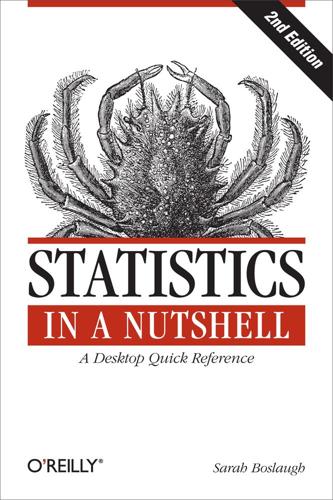
Statistics in a Nutshell
by
Sarah Boslaugh
Published 10 Nov 2012
Pocket Dictionary of Statistics A glossary of terms used in business statistics, written by Hardeo Sahai and Anwer Khurshid and maintained on the website of the Higher Education division of the publisher, McGraw-Hill. Six Sigma Glossary A glossary of terms used in the Six Sigma quality control program, maintained on the website of MiC Quality, a company that provides Six Sigma training courses and educational materials. A Glossary for Multilevel Analysis A glossary of terms relevant to multilevel analysis, written by Dr. Ana V. Diez Roux, a Columbia University professor, and maintained on the website of the Pan American Health Organization.
…
Control chart with a shock or outlier (single extreme value) Figure 14-27. Control chart with a change of level (upward shift of mean) Use of the standard deviation to define acceptable ranges of values for the outputs from a process is the source of the name for the Six Sigma program because sigma (σ) is the symbol for standard deviation. The idea behind the Six Sigma program is to reduce variability sufficiently that output in the range of ±3σ will still be acceptable to the customer. As discussed in Chapter 3, with normally distributed data, the probability of data points within particular ranges is known. The percentage of data from a normal distribution contained in different ranges, defined by standard deviations from the mean, is displayed in Figure 14-28.
…
Ironically, Deming’s approach was initially rejected in his native country (the United States) but enthusiastically embraced in Japan, where QI techniques were applied to manufacturing so successfully that Japanese companies were able to challenge and in some cases surpass the American supremacy in manufacturing. In response, American companies began adopting QI approaches in the 1980s; Motorola and General Electric are among the best-known early adopters. There are multiple approaches to QI, including a popular program known as Six Sigma (6σ), which is part of a general approach known as Total Quality Management (TQM). This section concentrates on the basics of QI, which are common to many such programs, and avoids getting into the specifics of jargon and acronyms of any particular program. It also concentrates on the statistical methodology used in QI, although the reader should bear in mind that most QI programs are multifaceted and include psychological and organizational strategies as well as statistical measurement and analytic techniques.
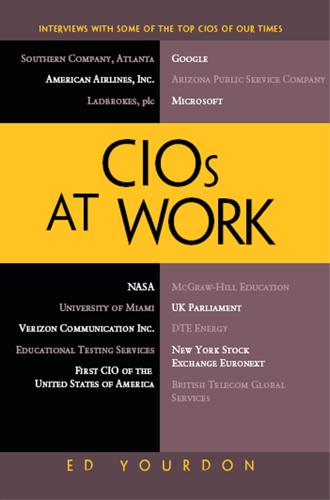
CIOs at Work
by
Ed Yourdon
Published 19 Jul 2011
Yourdon: Some of the numbers you gave me when I was here last time were staggering in terms of the millions of tests that you process. Wakeman: We have to do them all, they have to be done perfectly. So our objectives are 100 percent on-time, 100 percent accurate score reports. And the only way you can get there is to continually improve by learning from mistakes and making use of great quality programs such as Six Sigma. Great process plays a critical role as well, thus the reason we are implementing the ITIL v3 process framework. We continue to train staff in quality methods, defect detection, and continual improvement techniques. And it’s paying off. Defects continue to decrease and our customers are noticing.
…
Yourdon: You know, it’s interesting you mentioned this now. None of the other CIOs I’ve spoken to so far have mentioned scorecards. Wakeman: We worked really hard on getting a simple, one-page scorecard that defines what’s most important from a business perspective of what we do. And we track it. We use Six Sigma techniques to ensure our processes are in control. There is a control chart for each process metric. Yourdon: Interesting. Wakeman: Being a CIO of a big organization like mine, I’m always open to competition. There are many excellent firms out there that would like to run the IT department for ETS.
…
Based in Phoenix, APS serves more than 1.1 million customers and is one of the fastest-growing investor-owned electric utilities in the United States. Bohlen heads APS’s Information Technology department where he oversees the company’s vital electronic infrastructure and manages the digital challenges faced by a major electric utility. Bohlen also leads the Lean Six Sigma improvement process for APS. Before joining APS, Bohlen spent 10 years at Textron, Inc. where he served as Executive Vice President and Chief Innovation Officer. Prior to joining Textron, he served 25 years as an information/supply chain executive at both AlliedSignal Inc. and John Deere. Bohlen is a member of the American Production Inventory Control Society and a senior member of the Society of Manufacturing Engineers, Computer and Automated Systems Association.
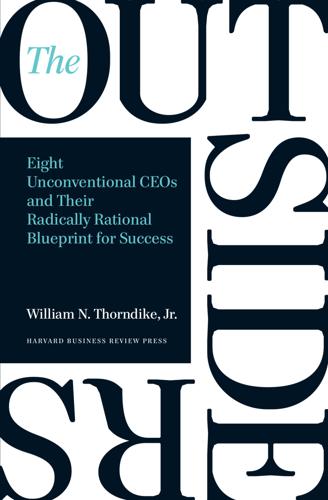
The Outsiders: Eight Unconventional CEOs and Their Radically Rational Blueprint for Success
by
William Thorndike
Published 14 Sep 2012
Welch was both an active manager and a master corporate ambassador. He was legendarily peripatetic, traveling constantly to visit GE’s far-flung operations, tirelessly grading managers and shuffling them between business units, and developing companywide strategic initiatives with exotic-sounding names like “Six Sigma” and “TQM.” Welch had a lively, pugnacious personality and enjoyed his interactions with Wall Street and the business press. He was very comfortable in the limelight, and during his tenure at GE, he frequently appeared on the cover of Fortune magazine. Since his retirement, he has remained in the headlines with occasional controversial pronouncements on a variety of business topics including the performance of his successor.
…
So, how does Buffett achieve these operating results? Beneath his avuncular exterior, Buffett is a deeply unconventional CEO, which is perhaps best seen by comparing his approach with that of Jack Welch (see table 8-3), who thrived at GE with a system that emphasized centralized strategic initiatives (Six Sigma, and so on), rotating CEOs, and a frenetic pace of travel and meetings. The contrast in management styles could hardly be more dramatic (although Buffett has deep admiration for Welch’s abilities). Buffett came to the CEO role without any relevant operating experience and consciously designed Berkshire to allow him to focus his time on capital allocation, while spending as little time as possible managing operations, where he felt he could add little value.
…
See stock performance Sias, John, 26, 32–33 Sie, John, 92, 93 Simmons, Dick, 114–115, 116, 117, 118, 124–125 Singleton, Henry, 1, 37–58, 107 —acquisitions by, 11, 39–41, 42 —background and education of, x–xi, 39, 41 —board members and, 54 —Buffett compared with, 56–58 —Buffett on, 37 —capital allocation by, xii, xiv, 38, 42, 55, 57, 207 —cash flow and, 11, 44–45 —closing of underperforming business unit by, 45 —decentralized approach of, 43–44, 57 —diversification by, 40–41, 151 —dividend policy of, 37–38, 46, 51, 57 —early career of, 39 —intelligent iconoclasm of, 4, 10–11 —investment philosophy of, 48–49, 50f, 57 —investor relations and, 53, 54, 57 —negotiating style of, 51–52 —nuts and bolts of approach of, 53–56 —spin-offs used by, 50–51, 96 —stock performance under, xi–xii, 38–39, 42, 42t, 47, 52–53, 52f —stock repurchase programs of, xi, 10, 45–48, 48t, 54–56, 142 —stock splits and, xi, 57 Sirius Broadcasting, 212 Six Sigma, viii, 190 Smith, Dick, 149–166 —acquisitions by, 8, 150–151, 165, 203 —asset sales by, 162, 164 —background and education of, 149–150, 151 —capital allocation by, 161, 162–163, 164, 165–166 —cash flow under, 150, 152, 157, 162–163, 165–166 —debt used by, 156, 162, 163, 164, 165 —diversification by, 150–151, 152, 154–155, 157 —divestitures by, 151 —investment with involvement strategy of, 154–155 —lease financing used by, 151–152 —nuts and bolts of approach of, 159–166 —office of, xvii, 161 —stock performance under, 150, 159, 160f —stock repurchase program of, 165 —tax minimization and, 163–164 —top executives and management of, 159–161, 166 Smith, Frank, 16–18, 24, 27 Smith, Phillip, 149–150, 151 Smith Barney, 157 Smits, Marcel, 147 Sokol, David, 188 Southeastern Asset Management, 121 Southwest Airlines, xviii Sparkman, J.
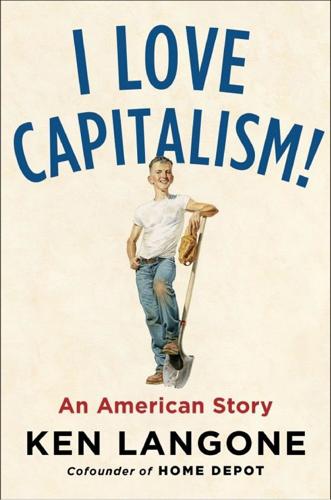
I Love Capitalism!: An American Story
by
Ken Langone
Published 14 May 2018
He consolidated division executives’ responsibilities, which allowed him to cut a number of managers loose. He had a computerized inventory system installed at our Atlanta headquarters. There was a management method at GE called Six Sigma, a set of statistical tools for maximizing output and minimizing variability; to Jack Welch it was gospel, and Nardelli (whom some people used to call Little Jack) was Jack’s most passionate disciple. Nardelli brought Six Sigma to Home Depot. He also brought along his own general counsel, Frank Fernandez: I thought that was an unusual move, maybe a little worrying. He also brought in a former HR guy from General Electric, Dennis Donovan, a guy who lived on charts and percentages.
…
Walker, 92, 95–96 Garden City, Michigan, 257–58 garment business, 64–67 Gault, Stanley, 183 General Electric (GE), 223, 256–57 board of, 181–82, 190, 205–10 CEO of, 181–82, 190, 205–10, 220–22 and Frank Blake, 226, 230, 232 imaging equipment of, 181–82 pension fund of, 67–69 Power Systems division of, 209, 213, 226 Six Sigma method of, 214 stock of, 208, 210, 255 General Motors, 56, 143, 147, 183–84 Georgia-Pacific, 82–83 Gillespie, Bob, 166–67 Giuliani, Rudy, 201 Glaspie, April, 172 Glassman, Jerry, 148 Glenn, Duke, 91–92 Glickman, Bob, 177–78, 182, 196 Goldman Sachs, 32, 41, 65, 71, 91–92, 97, 172–73, 187–88 Goodes, Mel, 116 Gould, Gordon, 164–66 Grace, Peter, 150 Grasso, Dick, 182–92, 195, 198–99, 201–3, 217, 261 Great Depression, 4, 52–53, 56, 244 Green, Roger, 91–92 Greenberg, Hank, 198 Greenville, South Carolina, 208 Grossman, Bob, 181–82, 196–97, 203, 265 Grossman, Maura, 194 Gruenstein, David, 193–94 Guggenheim Partners, 115 Handy Dan, 130–42, 145–56, 158 Harbison-Walker Refractories, 67–69, 89 Harlem Children’s Zone, 243 Hart, Maurice, 32 Hart, Mitch, 155–56 on Home Depot board, 211, 223, 227 works for Perot, 94, 96, 104, 107, 123 Hausman, Jack, 116 Headley, Russell, 13–15, 265 health-care field, 121–22, 124, 130, 135, 178.
…
Patrick’s Cathedral (New York City), 239, 243 Salem Leasing, 241, 252–53 salesmen, 54–64, 75–79, 105, 111, 125, 180, 250–51 Salomon Brothers, 90, 92, 112, 175, 247 Samuelson, Paul, 13 San Diego, California, 117–19, 121, 137, 144–45, 222 San Jose, California, 147–48 Sanders, Bernie, 249 Sands Point, Long Island, 117, 197 Sato, Steve, 121, 144, 235 Schapiro, Mary, 194–95, 200 Schenectady, New York, 209–10, 213 Schwartz, Alan, 114–15 Scott, Blaine, 98–99 Scruggs, Leonard Coe, 125 Sealy, 124, 139 Sears, 64, 254, 258 Seaver, Harry, 73 securities, 33, 41, 45, 50, 55, 57, 81, 117, 183, 192, 248 Securities and Exchange Commission (SEC), 59, 102–7, 119–21, 183 Security Pacific Bank (Los Angeles), 158–59 September 11, 2001, 185 Sexton, John, 197 Shearson, 163 Shearson, Hammill, 26–27, 69 Showalter, Paul, 17 Shroyer, Bruce, 78 Siemens, 181, 196–98 Sigma Chi fraternity, 13, 15–17, 24–25 Sigoloff, Sanford “Sandy,” 132, 138, 140–43, 145–52, 155 Silverman, Henry, 176–77 Singer, Paul, 223 Six Sigma management, 214 Skadden, Arps, 141 Sleeper, Matt, 24–26 Smilow, Joel, 179 Smith, Austin, 124 Smith, Bryan, 153 Smith, Derek, 168 Smutny, Rudy, 90, 108–10, 112, 122 Snowden, Herb, 124 socialism, 249–50 Somerville Lumber, 130 Southeast Bank (Miami), 155 Soviet Union, 46 Specter, Arlen, 171 Spector, Joe, 40–41 Spencer, Frank, 178–79 spirituality, 237–39, 242 Spitzer, Eliot, 187–88, 190–93, 195–96, 198–203, 217 Sporkin, Stanley, 105–7 stabilization rule, 103, 106–7 Standard Oil of New Jersey, 69–74 Standel, Paul, 124 statistics, 36–38 steel industry, 18–19, 56, 68–69, 184 Stein, Howard, 169 Steiner, Al and Phil, 58–63, 65 Steinhaus, Al, 166 Stern, Leonard, 175 Stirling Homex, 111–12 stock market, 161 analysts of, 71–75 “bear,” 124–25 “bull,” 192 computerization of, 183–84 downturns in, 52, 56–57, 59, 112, 188 rises in, 56, 192 See also New York Stock Exchange (NYSE) stocks common, 128–29, 155, 161 and “cram down,” 141 dividends for, 123, 144 inflating prices of, 187 large-cap, 255–56 nonqualified owners of, 119–21 options, 208, 210, 217, 219–20, 231, 245–46 preferred, 129, 155, 160–61 and proxy dispute, 119, 121, 223–25 publicly held, 131, 133–34, 139–40 secondary offerings of, 103 short selling of, 112–13 small float for, 112 strike price of, 208, 219–20, 246 value of, 93, 95, 98, 112–13, 131, 139–40, 144, 217 See also initial public offerings (IPOs); New York Stock Exchange (NYSE); specific companies subprime finance companies, 166 Summers, Bill, 189 Suozzi, Tom, 199 supply and demand, 14, 22–24, 57 Taft Stettinius & Hollister, 62–63 takeovers, unfriendly, 101–2, 150–51 Taussig, Andy, 224–25 taxes, 2, 86, 96–97, 138, 185, 200, 220, 252 Teague, Tommy, 241, 252–53 technology companies, 101, 118, 164, 167–68, 181, 185, 196–98, 244, 255–57.
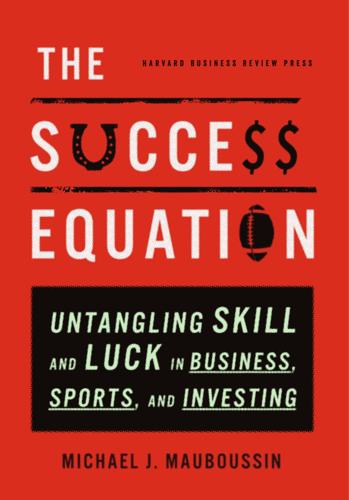
The Success Equation: Untangling Skill and Luck in Business, Sports, and Investing
by
Michael J. Mauboussin
Published 14 Jul 2012
World-class manufacturers develop very clear processes that are highly repeatable and have very low error rates. There is a rich literature that applies statistical methods to manufacturing, with a goal of reducing costs.5 One well-known case in point is the Six Sigma method, designed to reduce variation in production. A company that achieves Six Sigma ability will have fewer than 3.4 defects for every million units of goods or services. General Electric and Honeywell, among others, have saved billions of dollars by implementing the method. Manufacturing is an activity that falls near the all-skill side of the continuum.
…
See Eric Bonabeau, “Don't Trust Your Gut,” Harvard Business Review, May 2003, 116–123; David G. Myers, Intuition: Its Powers and Perils (New Haven, CT: Yale University Press, 2002). 5. Walter A. Shewhart, Statistical Method from the Viewpoint of Quality Control (1939; rept. New York: Dover, 1985). 6. Young Hoon Kwak and Frank T. Anbari, “Benefits, Obstacles, and Future of Six Sigma Approach,” Technovation 26, nos. 5–6 (May–June 2006): 708–715. 7. Christopher Chabris and Daniel Simons, The Invisible Gorilla: And Other Ways Our Intuition Deceives Us (New York: Crown, 2010), 83. 8. Philip E. Tetlock, Expert Political Judgment: How Good Is It? How Can We Know? (Princeton, NJ: Princeton University Press, 2005); Dan Gardner, Future Babble: Why Expert Predictions Are Next to Worthless, and You Can Do Better (New York: Dutton, 2011); and Dan Gardner and Philip Tetlock, “Overcoming Our Aversion to Acknowledging Our Ignorance,” Cato Unbound, July 2011. 9.
…
Review of Economics and Statistics 93, no. 1 (February 2011): 244–265. Kovenock, Dan, Michael J. Mauboussin, and Brian Roberson. “Asymmetric Conflicts with Endogenous Dimensionality.” Korean Economic Review 26, no. 2 (Winter 2010): 287–305. Kwak, Young Hoon, and Frank T. Anbari. “Benefits, Obstacles, and Future of Six Sigma Approach.” Technovation 26, nos. 5–6 (May–June 2006): 708–715. Langer, Ellen J., and Jane Roth. “Heads I Win, Tails It's Chance: The Illusion of Control as a Function of the Sequence of Outcomes in a Purely Chance Task.” Journal of Personality and Social Psychology 32, no. 6 (December 1975): 951–955.
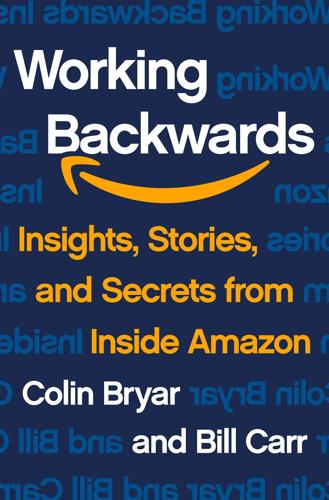
Working Backwards: Insights, Stories, and Secrets From Inside Amazon
by
Colin Bryar
and
Bill Carr
Published 9 Feb 2021
Madeline Stone, “A 2004 Email from Jeff Bezos Explains Why PowerPoint Presentations Aren’t Allowed at Amazon,” Business Insider, July 28, 2015, https://www.businessinsider.com/jeff-bezos-email-against-powerpoint-presentations-2015-7 (accessed May 19, 2019). 3 Ibid. Chapter 6: Metrics 1 “What Is Six Sigma?” https://www.whatissixsigma.net/what-is-six-sigma/. 2 Donald J. Wheeler, Understanding Variation: The Key to Managing Chaos (Knoxville, TN: SPC Press, 2000), 13. 3 XMR or individual/moving-range charts are a type of control chart used to monitor process quality and the limits of variability. See more at https://en.wikipedia.org/wiki/Control_chart.
…
Though we focus on the WBR in this chapter, the same principles and techniques can be applied wherever you need to look at data to help make informed decisions. The Metrics Life Cycle When the retail, operations, and finance teams began to construct the initial Amazon WBR, they turned to a well-known Six Sigma process improvement method called DMAIC, an acronym for Define-Measure-Analyze-Improve-Control.1 Should you decide to implement a Weekly Business Review for your business, we recommend following the DMAIC steps as well. The order of the steps matters. Progressing through this metrics life cycle in this order can prevent a lot of frustration and rework, allowing you to achieve your goals faster.
…
See Amazon Prime Video product development Pushbutton Rachmeler, Kim Ravindran, Vijay rebuffering Reference Check (Bar Raiser step) RemoteLoad Résumé Review (Bar Raiser step) rights management software (DRM) Ring Doorbell Ringewald, Erich Risher, David risk-taking Roku Rose, Dan Roseman, Neil S-Team annual planning role compensation as foundational mechanism of Leadership Principles four-hour meetings goals Kindle and members PowerPoint and Prime and single-threaded leadership six-pagers and two-pizza teams and S-Team goals Amazon Digital and annual planning process Dive Deep leadership principle and finance team’s tracking of growth and evolution of high bar for input-focused metrics multiple SMART (Specific, Measurable, Attainable, Relevant, and Timely) Scott, MacKenzie Search Inside the Book feature Self-Service Order Fulfillment (SSOF) Sequoia Capital sideloading Siegel, H. B. single-threaded leadership being Amazonian and flexibility of size Fulfillment by Amazon and history and origins of rewards of separability and two-pizza teams and See also dependencies; New Project Initiatives (NPI); two-pizza teams (2PTL) Six Sigma six-pager advantages for presenters advantages for readers conducting meetings with FAQ feedback and ideas prioritized over presenters varied structure and content of writing an effective six-pager See also Tufte, Edward Slack smart lock technology SMART (Specific, Measurable, Attainable, Relevant, and Timely) S-Team goals Socratic method Sony Bravia Sony Reader Spacey, Kevin Spiegel, Joel Spillman, Sarah STAR (Situation, Task, Action, Result) interviewing method Starz Strout, Kristin Super Saver Shipping Szkutak, Tom Taylor, Tom technical program managers (TPMs) Think Big leadership principle timeline TiVo Toyota transactional video on demand (TVOD) Tufte, Edward Twitch two-pizza teams (2PTL) Amazon Digital and autonomous teams challenges of characteristics, workflow, and management of course correction and history and origins of Inventory Planning team Mobipocket team Order Pipeline and Payments teams Picking Team example single-threaded leadership and Universal Music Group urgency bias U.S.
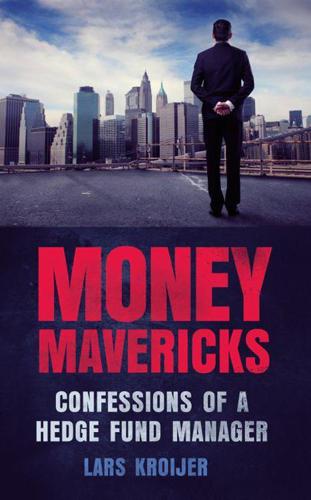
Money Mavericks: Confessions of a Hedge Fund Manager
by
Lars Kroijer
Published 26 Jul 2010
XYZ happened – that is a one-in-a-million event.’ Equally self-deluding are those who insist rather more pretentiously that they were the victims of a ‘six-sigma event’. The only advantage of this expression is that it may scare away the follow-up question. Who wants to sound stupid by admitting that they don’t know what ‘six sigma’ means even if the guy in front of them has just cost them a fortune? Sigma (standard deviation) is a measure of how frequent various outlying events (or numbers) are relative to an average occurrence. A six-sigma event is something that should happen so infrequently that you might have heard about a guy who had heard about a guy who knows someone that it happened to; and that should happen about every 100 years.

Vassal State
by
Angus Hanton
Published 25 Mar 2024
Drucker, ‘The rise of the knowledge society’ [PDF], Wilson Quarterly 17/2 (1993), http://archive.wilsonquarterly.com/sites/default/files/articles/WQ_VOL17_SP_1993_Article_02_1.pdf. 33 ‘Hawthorne effect’, Wikipedia [website], https://en.wikipedia.org/wiki/Hawthorne_effect. 34 See, for instance, ‘Lean manufacturing’, Wikipedia [website], https://en.wikipedia.org/wiki/Lean_manufacturing; ‘Six Sigma’, Wikipedia [website], https://en.wikipedia.org/wiki/Six_Sigma; ‘What are performance metrics?’, Sage [website], http://tinyurl.com/3zfxv9zb. 35 See, for instance, Helen Gray, ‘What is continuous improvement? (And how to include it in your company culture)’, eLearning Industry [website] (19 January 2021), http://tinyurl.com/4vwuht4z; Sarah Laoyan, ‘What is agile methodology?
…
In another counter-intuitive study involving lighting, a group of workers was given the choice of the level of lighting, and this increased productivity significantly: being given some control over their environment was enough to improve their output. The cat was out of the bag for treating work seriously and producing outsized returns in relation to effort. Right through the twentieth century America developed many new systems for better processes and management. ‘Lean manufacturing’ sought to streamline production and reduce waste; ‘Six Sigma’ was developed by Motorola to improve quality in a systematic way; and ‘performance metrics’ made sure that key performance indicators (KPIs) were measured.34 American businesses developed a ‘continuous improvement culture’ encouraging all employees to look for opportunities to solve problems and improve efficiency, and ‘agile methodologies’ allowed iterative and incremental improvements to efficiency.35 Other countries copied, but only very slowly, and they were almost always behind the US curve and forced to play catch-up.
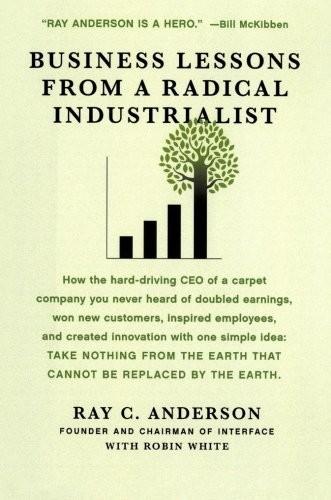
Business Lessons From a Radical Industrialist
by
Ray C. Anderson
Published 28 Mar 2011
Yet there is a pleasant harmony in the disorder. They return to their studios and design a carpet tile in which no two tile faces are alike. All are similar, but none are identical, contrary to the prevailing industrial paradigm that demands cookie-cutter perfection from every mass-produced item—Six Sigma uniformity. Nature, the inspiration, is anything but uniform. She doesn’t know Six Sigma, but she is very effective. This new product is given a name, Entropy,® and in a year and a half it rises to the top of the bestseller list, faster than any other product ever has before. I have seen another design team dream up and address a weird challenge: How does a gecko cling upside down to a ceiling?
…
Matthew Island (off Alaska) sales associates/employees, car travel by Sam’s Club SARA 313 chemicals Saudi Arabia Scherpenzeel (Holland) Interface facility science, and religion SC Johnson Scott, Graham Scott, Lee scrubbing sea, transportation by Seiko Epson self-interest sequestering of carbon Serreze, Mark Shaw Industries sick building syndrome Six Sigma Small Business Administration SmartWay Transport program (EPA) Smith and Hawken smokestacks cutting emissions from inventory of (Interface) inventory of emissions from (Interface) social equity, measuring social sustainability Sociometrics solar cells solar concentrators solar energy cost of not a bubble, but a revolution Solar-Made carpet solar photovoltaics, growth of industry solar units, on customers’ roofs solid waste, volume, from Interface factories “Someday they’ll send people like me to jail” South Bronx Southern California Gas Company species extinction Speth, Gus spirituality, and sustainability stack scrubbers Stahel, Walter stakeholders sensitizing them Staples state governments, environmentalism of stewardship of the earth (Biblical) Stigson, Björn STMicroelectronics Stonyfield Farm stuff, infatuation with Subaru of America subprime mortgage crisis suggestions from employees, rewards for sun, terawattage of Superfund Amendment and Reauthorization Act (SARA) supersaturated solutions sustainability competitive edge and goodwill from definition of framework for pursuing how to start planning for ignoring the laws of and profit seven paths to skepticism about and survival training course in university courses in sustainability programs, so-called, of some companies “Sustainable America: A New Consensus” sustainable society Sustainable South Bronx Sustainable Strategies Group SUVs TacTiles take-make-waste economy Tandera, Giulio Tau Beta Pi team-building exercises TEAM-UP program (DOE) technology environmental impact of improvements in, from market stimulus over-reliance on technophiles vs. technophobes technosphere TerraChoice Environmental Marketing textile industry thinking in the round third parties, damage to Thomas, Glenn, poem by, “Tomorrow’s Child” Thoreau, Henry David three crises (environmental, financial, and security) TI:GER program Toxic Chemical Elimination Team (Interface) toxic emissions, five principles for eliminating toxic minerals, that never should have been extracted Toyota traditional-craft skills transportation cost of GHG cost of transportation system, need to reengineer trash pickup trees nature’s technology of planted for environmental restoration planted to offset CO2 emissions Trees for Travel(tm) triple bottom line trucks efficiency of GHG emissions loading of transportation by trust, need for, in banking tyrants, in oil-producing states, American tolerance of unemployed people Unilever United Kingdom, Interface facilities in United States balance of trade economy, importance of oil to United States Green Building Council (USGBC) University of California University of Pennsylvania, Wharton School, Institute for Global Environmental Leadership University of Texas at Houston unsustainability, examples of UPS Ground vs.
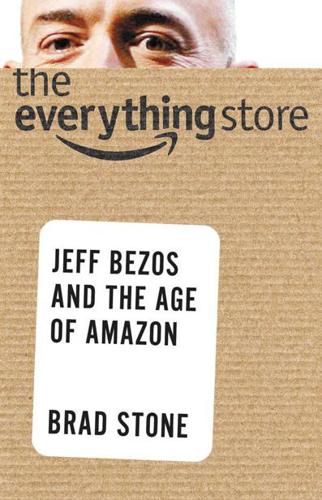
The Everything Store: Jeff Bezos and the Age of Amazon
by
Brad Stone
Published 14 Oct 2013
Wilke began his career at Andersen Consulting and then joined AlliedSignal, the manufacturing giant, which was later acquired by Honeywell. He quickly climbed the ranks to vice president, reporting directly to CEO Larry Bossidy and running the company’s $200-million-a-year pharmaceutical business. In AlliedSignal’s headquarters in Morristown, New Jersey, Wilke was immersed in the corporate dogma of Six Sigma, a manufacturing and management philosophy that seeks to increase efficiency by identifying and eliminating defects. Back in 1999, Scott Pitasky, an Amazon recruiter who later became the head of human resources at Microsoft, was put in charge of finding a replacement for Jimmy Wright. Pitasky had previously worked with Wilke at AlliedSignal, so he thought of his former colleague after concluding that Amazon needed someone who was smart enough to go toe to toe with Jeff Bezos, who delighted in questioning how everything was done.
…
Before Wilke joined Amazon, the general managers of the fulfillment centers often improvised their strategies, talking on the telephone each morning and gauging which facility was fully operational or had excess capacity, then passing off orders to one another based on those snap judgments. Wilke’s algorithms seamlessly matched demand to the correct FC, leveling out backlogs and obviating the need for the morning phone call. He then applied the process-driven doctrine of Six Sigma that he’d learned at AlliedSignal and mixed it with Toyota’s lean manufacturing philosophy, which requires a company to rationalize every expense in terms of the value it creates for customers and allows workers (now called associates) to pull a red cord and stop all production on the floor if they find a defect (the manufacturing term for the system is andon).
…
Bezos wanted Wilke to take over the entire North American retail division, and Wilke was charged with finding his own replacement. Wilke thought that Amazon’s progress in its FCs had plateaued, so instead of promoting from within the ranks of Amazon’s logistics executives, all of them molded, as he was, by the dogma of Six Sigma, Wilke went looking for someone with a fresh approach and additional international experience. The search led him to Marc Onetto, a former General Electric executive with a thick French accent and a gift for animated storytelling. Under Onetto’s watch, engineers once again rewrote elements of Amazon’s logistics software and devised a computer system, called Mechanical Sensei, that simulated all the orders coursing through Amazon’s fulfillment centers and predicted where new FCs would most productively be located.
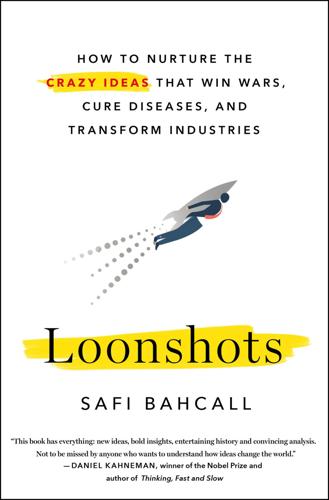
Loonshots: How to Nurture the Crazy Ideas That Win Wars, Cure Diseases, and Transform Industries
by
Safi Bahcall
Published 19 Mar 2019
He “moved away from the rigid task allocation” of telephone operations and toward a similar loose-touch style. Both Bush and Vail understood intuitively decades ago what is repeatedly being rediscovered today. Efficiency systems such as Six Sigma or Total Quality Management might help franchise projects, but they will suffocate artists. When 3M, for example, inventor of Post-it Notes and Scotch Tape, brought in a high priest of Six Sigma as a new CEO in 2000, innovation plunged. It didn’t recover until well after he left and a new CEO dialed back the system. The new CEO described the efficiency system as a mistake: “You can’t say … well, I’m getting behind on invention, so I’m going to schedule myself for three good ideas on Wednesday and two on Friday.”
…
See also Endo, Akira Schure, Alex Science: The Endless Frontier (Bush report) scientific method as the mother of all loonshots path to, mirroring path to heliocentrism scientific revolution pan-European symphony as precursor to industrial reliance on Chinese technology, Islamic astronomy, Indian mathematics role of Kepler vs. others why England; why Western Europe, see world history (comparative) Sculley, John serendipity, role of Shen Kuo Tycho compared with Sikorsky, Igor (S-38, S-42) “simple, but not simplistic” models Sir Isaac Newton’s Philosophy Explain’d for the Use of the Ladies Six Degrees of Separation Six Sigma Slumdog Millionaire small-world networks Smith, Adam preference for work on ethics use of alliteration Smith, Alvy Smith, Joseph Soft equity definition of example at DARPA and Napoleon’s ribbon and open innovation solar eclipse, as natural experiment Song emperor, Song dynasty Sprat, Thomas SRT (spirit, relationships, time).
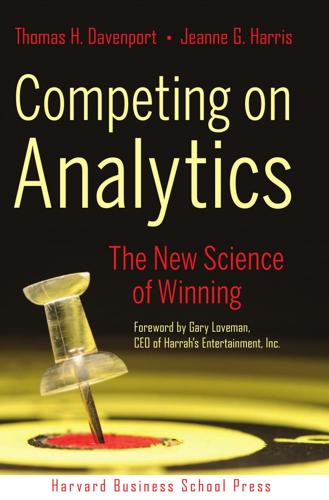
Competing on Analytics: The New Science of Winning
by
Thomas H. Davenport
and
Jeanne G. Harris
Published 6 Mar 2007
Similarly, CEMEX, the global cement company, uses analytics to quantify expected benefits from increased market share and improved profitability by enforcing its processes and systems on the takeover target. Manufacturing, Operations, and Quality Analytics One analytical domain that has long existed in companies is operations, especially manufacturing and quality. This was the original home, for example, of Total Quality Management and Six Sigma, which, when done seriously, involve detailed statistical analysis of process variations, defect rates, and sources of problems. Manufacturing and quality analytics have had an enormous impact on the global manufacturing industries, but their impact has been less revolutionary for service industries and nonmanufacturing functions within manufacturing companies.
…
For years, operations management specialists have created algorithms to help companies keep minimal levels of inventory on hand while preventing stock-outs—among other supply chain challenges. And manufacturing firms have long relied on sophisticated mathematical models to forecast demand, manage inventory, and optimize manufacturing processes. They also pursued quality-focused initiatives such as Six Sigma and kaizen, tools for which data analysis is an integral part of the methodology. Customer relationship management, however, seems less amenable to analytical intervention—at least, that might be the common perception. The traditional focus in sales has been on the personal skills of salespeople—their ability to form long-term relationships and to put skeptical potential customers at ease.
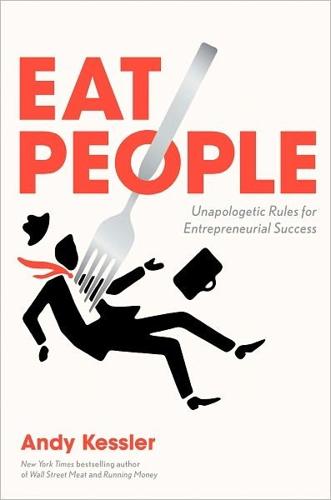
Eat People: And Other Unapologetic Rules for Game-Changing Entrepreneurs
by
Andy Kessler
Published 1 Feb 2011
The economic measure of productivity is output per worker hour. Economists use fancy terms like “capital stock,” which are just tools to augment workers to increase their output. Fishing net. An ox and plow. Or an assembly line. And, I don’t know, even robots, I guess. More output from fewer hours produces wealth. Companies spent millions on factory gurus, Six-Sigma-smoking consultants from the 1950s all the way through the 1970s to help them squeeze gains out of workers. That’s what drove the stock market and wealth creation for several decades. That’s all fine in an Industrial Age when you can actually measure worker output in the form of widgets per day, cars off the line per hour, and the like.
…
Roosevelt, Teddy Rosendahl, Carl Rowes, Jeff Rules for Free Radicals abundance versus scarcity application of edge of network, intelligence at exceptionalism, embracing horizontal integration humans, adapting technology to jobs, eliminating with technology market entrepreneur, being markets versus managers money/highest returns connection productivity and wealth scale, importance of scarcity, creating with virtual pipe zero marginal costs, use of Rules for Radicals (Alinsky) Rupert, Johann SAT (Scholastic Aptitude Test) Say, Jean-Baptiste Say’s law Scale elements of historical examples of lack of recognizing tech examples of Scarcity. See Abundance and scarcity, and ad sales Schmidt, Eric Schumpter, Joseph Self-actualization Servers types of Services, and Creators Shaw, George Bernard Shutterfly Siemens, Karl Wilhelm Six-Sigma Skype Slackers Sloppers Smith, Adam Social networking Facebook, building virtual pipe of Software, open-source Soviet Union collapse former, stock exchanges of Spangler, James Spencer, Percy L. Spoerl, Joseph S. Sponges Standard of living and economy and wealth Stanford, Leland Stevens, Ted Stock markets benefits of as decision mechanism efficiency of of former Soviet Union investors, listening to operation of peak and crashes price discovery by role in capitalist system Stroud, John M.
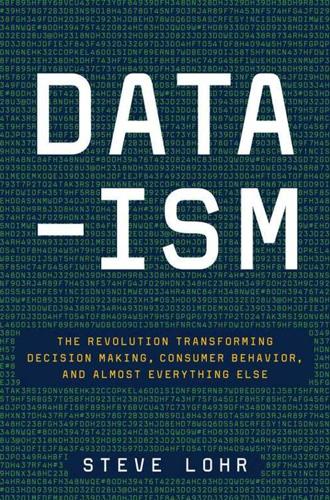
Data-Ism: The Revolution Transforming Decision Making, Consumer Behavior, and Almost Everything Else
by
Steve Lohr
Published 10 Mar 2015
But it soon became clear to the McKesson executives that the larger opportunity was being able to capture a “big picture” view of their business. In consultant circles, it is called the “end-to-end” view. It is instructive to explain why McKesson was a promising test bed. McKesson is not just any company. It is, Katircioglu observes, “a well-oiled machine,” efficient and focused. McKesson was early to embrace Six Sigma, a system of statistical measurement and methods for eliminating product defects and streamlining business operations. It invested heavily in scanning, sensor, and software technology. Starting in the 1990s, McKesson invested heavily in foundational information technology. First came the migration from paper to digital records and tracking, with the adoption of bar-code scanning and radio tags on products.
…
Gallo’s use of, 123–33 Predix, 136 PricewaterhouseCoopers, 44 Principles of Scientific Management, The (Taylor), 208 Privacy Act (1974), 185 privacy concerns, 183–206 balancing privacy and data collection, 202–6 big data and personally identifying information, 187–92 cameras and, 183–86 data correlation and, 113 discrimination by statistical inference, 192–95 early computers and, 185–87 marketing and use of data, 195–97 social network data collection and, 197–202 productivity paradox, of computers, 72–75 Profiles in Performance: Business Intelligence Journeys and the Roadmap for Change (Dresner), 76 psycholinguistics, used for studying tweets, 199 Pulleyblank, William, 45–46, 47–48, 49 quantitative-to-qualitative transformation, data and, 7–8 “reality mining,” 206 Reisman, David, 155 Richardson, Tara, 106–7 Riedl, Paul, 156 Rock Health, 16 Rogers, Matt, 144 romantic relationships, social network research and, 87–88 Rometty, Virginia Haydock and, 156 IBM’s big data strategy and, 9, 42–45, 46, 47, 53–56 Rosenn, Itamar, 89–90, 94 Rotenberg, Marc, 204–5 Rothschild, Jeff, 86, 91–92, 98 Rubinsteyn, Alex, 180 Ruh, William, 134, 135–36 Sabre (Semi-Automated Business Research Environment), 46 Sage Bionetworks, 101–2, 170–71 SAS Institute, 52 satellite imagery, precision agriculture and, 129–32 Schadt, Eric background, 172–73 at Mount Sinai, 171–72, 173–74, 175 Sage Bionetworks and, 102 Schrage, Michael, 197 Science, 108 scientific management (Taylorism), 207–8 Seay, Mike, 188–89 Second Machine Age, The (Brynjolfsson and McAfee), 119–20 Shah, Rachana. See Fischer, Rachana Shah Singapore, traffic management in, 47–48 Singer, Natasha, 190 “six degrees of separation,” 87 Six Sigma system, 62 Sloan School of Management, at MIT, 71 “slow” thinking, 66–67 Smarr, Larry, 134, 214, 215 Smarter Planet campaign, of IBM, 48–53, 62, 128 smartphone cameras, privacy concerns and, 186 Smeall, Andrew, 26 Snow, C. P., 5–6 Snyder, Steven, 165–67, 170 social networks, research using human behavior and, 86–94 retail use, 153–62 spread of information and, 73–74 Twitter posts and, 197–202 see also privacy concerns Social Security numbers, data used to predict person’s, 187–88 software, origin of term, 96 Solow, Robert, 72 Speakeasy programming language, 160 Spee (Harvard club), 28–30 Spohrer, Jim, 25 Stanford University, 211–12 Starbucks, 157 Stockholm, rush-hour pricing in, 47 storytelling, computer algorithms and, 120–21, 149, 165–66, 205, 214 structural racism, in big data racial profiling, 194–95 Structure of Scientific Revolutions, The (Kuhn), 175 Sweeney, Latanya, 193–95 System S, at IBM, 40 Tarbell, Ida, 208 Taylor, Frederick Winslow, 207–8 Tecco, Halle, 16, 25, 28, 168–69 Tetlock, Philip, 67–68 thermostats, learning by, 143–45, 147–53 Thinking, Fast and Slow (Kahneman), 66–67 toggling, 84 Truth in Lending Act (1968), 185 T-shaped people, 25 Tukey, John, 96–97 Turing, Alan, 178–79 Tversky, Amos, 66 Twitter, 85 posts studied for personal information, 197–202 “Two Cultures, The” (Snow), 5–6 “universal machine” (Turing’s theoretical computer), 179 universities, data science and, 15–16, 97–98, 211–12 Unlocking the Value of Personal Data: From Collection to Usage (World Economic Forum), 203 “Unreasonable Effectiveness of Data, The” (Norvig), 116 use-only restrictions, on data, 203 Uttamchandani, Menka, 77–78, 80, 212 VALS (Values, Attitudes, and Lifestyles), 155 Van Alstyne, Marshall, 74 Vance, Ashlee, 85 Vargas, Veronica, 159–60 Varma, Anil, 136–37 Veritas, 91 vineyards, data used for precision agriculture in, 123–33, 212 Vivero, David, 29 Vladeck, David, 203, 204 von Neumann, John, 54 Von Neumann architecture, 54 Walker, Donald, 2, 63, 212 Walmart, 104, 154 Watson, Thomas Jr., 49 Watson technology, of IBM, 45, 66–67, 120, 205 as cloud service, 9, 54 Jeopardy and, 7, 40, 111, 114 medical diagnoses and, 69–70, 109 Watts, Duncan J., 86 weather analysis, with big data, 129–32 Weitzner, Daniel, 184 “Why ask Why?”

The Future of Technology
by
Tom Standage
Published 31 Aug 2005
In both industries, the influence in India of ge, which has applied the “six sigma” method of quality improvements to its industrial businesses for years, is pervasive. Mr Roy used to run gecis, which was then ge’s bpo captive but is now being sold. It had become “too fat and happy”, according to one Indian competitor. One of the founding investors in Mr Talwar’s company is Gary Wendt, the former head of ge’s financial businesses. Wipro’s chairman, Azim Premji, has introduced so many of ge’s techniques to his company that the firm is known as India’s “baby ge”. Certainly, “Wiproites” seem to share the intensity of ge’s employees. Six-sigma “black belts” hurtle about Wipro’s 100-acre technology campus in Bangalore, improving everything from software coding to the way the company cleans its toilets.
…
O’Neil, David 73 O’Neil, John 28, 30 OneSaf 197 online banks 37 online shopping viii, 37 open standards 7, 10, 22–7, 31, 38, 43, 85–7, 115, 118–19, 152 operating systems 9, 10, 23–5, 31, 38, 85, 101, 109 operators, mobile phones 157–61, 162–9 Opsware 8, 15 optical-character recognition 121 Oracle 5, 20–2, 33, 38, 39–40, 46, 56, 62, 86, 243 Orange 157–8 organic IT 13–16, 88 original design manufacturers (ODMs), mobile phones 156–7 O’Roarke, Brian 192 O’Roarke, John 96 Orr, Scott 187 orthogonal frequency-division multiplexing (OFDM) 212–13, 215–17 INDEX Otellini, Paul 11, 95 outshored developments, software 38, 115, 138–9 outsourcing viii, 9, 19–20, 22, 38, 68–9, 71, 72, 88–92, 112–46, 158–60 see also globalisation barriers 121–2, 143 concepts 112–46 costs 112–24, 131–5, 140–3 cultural issues 122, 142 Europe 140–6 historical background 119–20, 125–6, 133 India 38, 109, 112–15, 119–22, 125–35, 137–8, 140–6 legal agreements 121–4 mobile phones 155–6, 158–60 opportunities 144–6 protectionists 140–6 reasons 123–4, 143 services 113–30 social outsourcing 143 “overshoot” stage, industries 9, 10–11, 109 overview vii–x, 6–7 Ovi, Alessandro 275–6 Oxford GlycoSciences 243 P Pacific Cycle 140 Page, Larry 9 Pait, Rob 207 Palladium 74, 76 Palm Pilot 150 Palmisano, Samuel 22 Paltrow, Gwyneth 173 Panasonic 156 Papadopoulos, Greg 14, 78–9, 83–4, 91 Papadopoulos, Stelios 237 Parker, Andrew 143 Parks Associates 96, 203 Parr, Doug 319 particulate filters 296–7 passwords 53, 58–61, 67, 96–7 patents, nanotechnology 321–6, 329 Patriot Act, America 35 PCs 9–16, 78–81, 82–110, 151, 171–3, 202–18 see also digital homes; hardware commoditisation issues 9–16, 132–5, 203 complexity issues 78–81, 82–110 screen sizes 100–1 UWB 214–18 Wi-Fi 209–18 PDAs see personal digital assistants Peck, Art 203 PentaSafe Security 60 Pentium chips 199–200 PeopleSoft 39, 86, 119, 126, 132 Perez, Carlota 5–6, 134 performance issues see also processing power; returns cars 291–8 Cell chips 198–200 cost links 29–30 Perlegen 244 personal digital assistants (PDAs) 151, 277, 279 see also handheld computers personal video recorders (PVRs) 203, 205–6 perverse incentives, security issues 61–2 Pescatore, John 55 Pfizer 69, 240, 247, 312, 315 pharmaceutical companies 239–40, 241–50, 312 PHAs 260 Philippines 130 Philips 120, 217 “phishing” 76, 89 phonograph 82, 84 photo-voltaic cells 280 photos ix, 78, 95, 101, 179–83 Physiome 248 Picardi, Tony 79 Pick, Adam 156 Pink Floyd 225 Piper, H. 292 Pittsburgh convention centre 304 Pivotal 187 plasma screens 230–2 plastics 238–9, 259–64 PlayStation 191–2, 199–200, 206–7 plug-and-play devices 78 plug-in hybrid cars 295–6 Poland 120 police involvement, security breaches 72 polio 265 politics 32–5 see also governments Pollard, John 157 pollution 275, 296–7, 299–304, 319 Pop Idol (TV show) 225 Pope, Alexander 267 Porsche 292 “post-technology” period, IT industry vii, 5–7 Powell, Michael 98, 206 power grids 233, 285–90 PowerPoint presentations 4–5, 107 Predictive Networks 337 Presley, Elvis 225 prices, downward trends viii, 4–7 PricewaterhouseCoopers 38 printers 78, 96 privacy issues 27, 34, 42–8, 179–83 see also security... mobile phones 179–83 processing power see also computer chips 353 THE FUTURE OF TECHNOLOGY exponential growth 4–7, 8–14 Proctor, Donald 106 Prodi, Romano 274–5 profits, future prospects 7, 17–18, 37–40 proprietary technology 24, 26, 80, 86 protectionists, outsourcing 140–6 proteins, biotechnology 241–64 protocols, complexity issues 86 Proxim 210 Prozac 315 PSA Peugeot Citroën 293, 296–7 PSP, Sony 191–3 public accounts 44 Pullin, Graham 177–8 PVRs see personal video recorders Q Qualcomm 164 quantum dots 312, 317, 322, 325 R radiation fears, mobile phones 176 radio 34–5, 36, 39, 94–5, 108, 155–61, 164, 209–18, 223 see also wireless... chips 155–61, 164 “garbage bands” 209–10, 215 music industry 223 spectrum 34–5, 94–5, 209–18 UWB 96–7, 214–19 Radjou, Navi 333–4 railway age vii, 5, 7, 23, 36, 39, 134 Raleigh, Greg 211 RAND 195 rationalisation exercises 31 RCA 108–9, 206, 208, 220, 315 real-world skills, gaming comparisons 194–7 RealNetworks 203 rechargeable batteries 280–4 Recourse Technologies 62–3 Reed, Philip 177 regulations 35, 44, 209–10, 326–9 see also legal issues relational databases 101–2 reliability needs viii, 42–8 religion 19 renewable energy 275–6, 286, 289, 300, 310, 315 ReplayTV 205 Research in Motion (RIM) 152–3 resistance problems, employees 31 return on investment (ROI) 30–1 returns 20, 29–31, 329 see also performance issues risk 20, 30, 329 revenue streams biotechnology 237–8, 241–2 354 gaming 189–90, 191 GM 251–2 mobile phones 151, 154–5, 157, 162–3, 165–6, 174 nanotechnology 321–6 revolutionary ideas vii–viii, 5–7, 13–14, 36–40, 80–4, 107–10, 116, 134, 151–3, 198–200, 236–40, 326–9 RFID radio tags 39, 94–5 Rhapsody 203 Ricardo 296–7 Riley, James, Lieutenant-Colonel 195–7 RIM see Research in Motion ringtones 165–6 RISC chips 200 risk assessments 70–4, 76 attitudes 18 handling methods 71 insurance policies 71–3 management 70–4 mitigation 71–3 outsourced risk 71, 72, 88–92 returns 20, 30, 329 security issues 42–8, 49–69, 70–4 RNA molecules 241–2, 249–50, 265 Robinson, Shane 15–16 robotics x, 233, 316, 332–5 Roco, Mihail 309 Rodgers, T.J. 32 Rofheart, Martin 216–17 Rogers, Richard 300 ROI see return on investment Rolls, Steve 121 Romm, Joseph 298 Roomba 332, 334–5 “root kit” software 51 Rose, John 226 Roslin Institute 256 Roy, Raman 125–8 Russia 115, 130, 140, 142, 145, 319 Ryan, John 312 S S700 mobile phone 171 Saffo, Paul 83–4, 103, 182 Salesforce.com 19, 20, 84, 91–2, 109 Samsung 158–60, 181, 208, 217, 231, 277 Santa Fe Institute 39 SAP 22, 38, 86, 119, 126, 132 satellite television 205 Saudi Arabia 180 scandals 28 scanning tunnelling microscope (STM) 306 SCC see Sustainable Computing Consortium Schadler, Ted 95, 97 Schainker, Robert 285, 289 INDEX Scherf, Kurt 96–7 Schmelzer, Robert 91 Schmidt, Eric 9, 35, 36–8 Schmidt, Nathan 66 Schneider National 29–31 Schneier, Bruce 43, 58, 61–2, 65, 70, 73–4 schools, surveillance technology 181 Schwartz, John 46 Schwinn 140, 143 Scott, Tony 43, 68–9 screen sizes 100–1 screws 23–4 Seagate Technology 207 seamless computing 96–7 Sears, Roebuck & Co 36 Securities and Exchange Commission 321 security issues viii, 25–7, 32–5, 42–8, 49–74, 86–7 see also privacy... airport approach 68–9 anti-virus software 50–1, 60, 67–8 biometric systems 60, 64–5, 71, 74 breaches 43–4, 46, 49–52, 62, 72–3 civil liberties 74 concepts 42–74, 86–7 costs 45–6, 50–1, 62, 70–4 employees 58–63, 69 encryption 53–4 firewalls 51–3, 58, 60, 62, 66–8, 71, 86–7 hackers 4, 43, 47, 49, 51–3, 58–63 handheld computers 67–8 honeypot decoys 62–3 human factors 57–63, 69 identity management 69 IDSs 51, 53–4, 62, 87 impact assessments 70–1, 76 insider attacks 62–3 insurance policies 71–3 internet 35, 42–8, 49–57, 61–2, 66, 66–7, 71, 73–6, 179–83 job vacancies 46 joint ventures 67 major threats 35, 42, 43, 47, 49–63, 66–9 management approaches 60–3, 69 Microsoft 54–6, 72, 74, 76 misconceptions 46–8 networks 42–8, 49–65, 66–9 passwords 53, 58–61, 67, 96–7 patches 56–7, 76 perverse incentives 61–2 police involvement 72 risk assessments 70–4, 76 standards 71–3 terrorism 35, 42, 43, 50, 65, 74, 75–6, 265–6 tools 49–63, 86–7 viruses 45, 47, 49–56, 59–60, 67–8, 74, 86, 89 Wi-Fi 66–7, 93 sedimentation factors 8–9, 84 segmentation issues, mobile phones 167–9 self-configuration concepts 88–9 Sellers, William 23 Seminis 254 Sendo 160 Senegal 182 September 11th 2001 terrorist attacks 35, 42, 43, 50, 65, 75 servers 9–16, 37–8, 62–3, 85–7, 132–3, 203 services industry 14, 17–22, 25–7, 31, 36–40, 80, 88–92, 109, 113–35, 203 see also web services outsourcing 113–46 session initiation protocol (SIP) 104–6 sewing machines 82, 84 SG Cowen 237 shapes, mobile phones 170–6 Shapiro, Carl 24 Sharp 156, 231, 326 shelfware phenomenon 20 Shelley, Mary 267, 269 shipping costs 121 sick building syndrome 302 Siebel 86 Siemens 120, 130, 142, 156, 159, 170, 172, 174 SightSpeed 84, 98, 103 SilentRunner 62 Silicon Valley 9, 32–40, 45–6, 54, 69, 79, 96, 98, 101, 103, 152, 313–14, 321 silk 263, 269 Simon, Herbert 336 simplicity needs 78–81, 84, 87, 88–92, 98–110 SIP see session initiation protocol Sircam virus 45, 49 Sirkin, Hal 120, 140 “six sigma” methods 128 SK 169 Skidmore, Owings & Merrill 302 Sky 205 Skype 103–4, 110 Sloan School of Management, MIT 30 Slovakia 120 small screens 100 Smalley, Richard 311 smallpox 265–6 smart power grids 233, 285–90 smartcards 64, 69 smartphones 150–3, 157–61 see also mobile phones SMES devices 289 Smith Barney 37 Smith, George 307–8 Smith, Lamar 75 Smith, Vernon 17 SNP 243–4 SOAP 25–7 355 THE FUTURE OF TECHNOLOGY social issues mobile phones 177–8, 182–3 music players 220–1 social outsourcing 143 software see also information technology ASPs 19–20, 91–2, 109 bugs 20–1, 54–6 Cell chips 198–200 commoditisation issues 10–16, 25, 132–5, 159, 203 complexity issues 14–15, 78–81, 82–110, 117–22 firewalls 52–3, 58, 86–7 hackers 51–3, 58–63 Java programming language 21–2, 25, 86 management software 13–16, 21–2, 88, 117–18 mobile phones 158–9 natural-language search software 339–40 operating systems 9, 10, 23–5, 31, 38, 85, 101, 109 outsourcing 38, 115, 138–9 patches 56–7, 76 premature releases 20–1 shelfware phenomenon 20 viruses 45, 47, 49–56, 59–60, 67, 74, 89 solar power 275–6, 286, 289, 301–2, 310, 315, 325 Solectron 112–13, 119 solid-state storage media 204, 207, 219 SOMO... project, mobile phones 177–8 Sony 95, 108, 156, 191–3, 198–200, 203, 206–7, 217, 228, 231, 282–4, 332, 334, 338 Sony Ericsson 156, 158, 159–60, 171 Sony/BMG 222–3, 227, 229 Sood, Rahul 38 Sorrent 187 South Africa 309, 319, 334 South Korea 156, 158, 163–5, 167–9, 170–1, 181, 319 soyabean crops 252–4 spam 76, 89, 118 Spar, Debora 32–3 speculation vii speech recognition 102, 121, 336 SPH-V5400 mobile phone 208 Spider-Man 189–90 Spinks, David 60–1, 63 Spitzer, Eliot 223 Sprint 167–8, 180–1 SQL 53 @Stake 54 Standage, Ella 316 standards green buildings 300–4 open standards 7, 10, 22–7, 31, 38, 43, 85–7, 115, 118–19, 152 356 security issues 71–3 W-CDMA standard 163–4, 168 web services 90–1 Wi-Fi 210–13 Stanford University 82, 137 Star Wars (movie) 186 steam power ix, 5, 134 steel industry 134 steering committees 31 stem cells 268–9 Steven Winter Associates 302 Stewart, Martha 249 STM see scanning tunnelling microscope stop-start hybrid cars 293–4 storage problems, electricity 275–6, 289–90 StorageTek 85 strategy 30 stress-resistance, biotechnology 254 Studio Daniel Libeskind 302 Sturiale, Nick 45 Sun Microsystems 9, 13–15, 21–2, 25, 27, 37–8, 43, 56, 58, 78–9, 83, 85, 87, 91, 102 supercomputers 199–200 Superdome machines 21 supply chains 8, 37–40, 155 surveillance technology 35, 74, 179–83, 309 Sussex University 5, 220, 310 Sustainable Computing Consortium (SCC) 27 Sweden 109 Swiss Army-knife design, mobile phones 171–2 Swiss Re Tower, 30 St Mary Axe 299, 301–2, 304 swivel design, mobile phones 171 Symantec 39, 46, 50, 62–3, 67 Symbian 158 Symbol 210 synthetic materials 258–64, 317 systems analysts 137 T T-Mobile 167–8 Taiwan 156–7, 160 Talwar, Vikram 144 Taylor, Andy 226 Taylor, Carson 287 TCP/IP 25 TCS 132–5, 145–6 Teague, Clayton 314 TechNet 33 techniques, technology 17–18 techno-jewellery design, mobile phones 172–4 technology see also individual technologies concepts vii–x, 4–7, 17–18, 23–7, 32–3, 82–4, 134, 326–9 cultural issues 93–4, 142 INDEX geekiness problems 83–4 government links 7, 18, 27, 31–5, 43–8, 123–4, 179–83, 209–10 Luddites 327 surveillance technology 35, 74, 179–83, 309 Tehrani, Rich 105 telecommunications viii, 23, 26, 103–6, 134, 164–5 telegraph 32–3, 108 telephone systems 84, 103–6, 109–10, 212–13, 214 Telia 109 terrorism 35, 42, 43, 50, 65, 74, 75–6, 265–6 Tesco 168 Tetris 12 Texas Energy Centre 287 Texas Instruments 125–6, 217 text-messaging facilities 165, 167 Thelands, Mike 164 therapeutic antibodies 249–50, 256–7 Thiercy, Max 339–40 thin clients 102 third-generation mobile phone networks (3G) 151, 162–9, 212 Thomas, Jim 318 Thomson, Ken 59 Thornley, Tony 164 3G networks see third-generation mobile phone networks TIA see Total Information Awareness TiVo 203, 205–6 Tomb Raider (game/movie) 187–8 Toshiba 156, 198–200, 203 Total Information Awareness (TIA) 35 toxicity issues, nanotechnology 316–17, 319, 328–9 Toyota 291–5, 297, 300–1, 334 toys see also gaming robotics 334 transatlantic cable 36, 39 transistors 4–7, 8–12, 85–7, 109 see also computer chips Transmeta 313 Treat, Brad 84, 98 Tredennick, Nick 10–11 Treo 150, 153 “Trojan horse” software 51–2 True Crime (game) 187 TruSecure 52, 60, 63 TTPCom 155–6 Tuch, Bruce 210 TVs see also video recorders flat-panel displays ix, 94, 147, 202–3, 230–2, 311 hard disks 204–8 screens 202–3, 230–2 set-top boxes 203, 205–6 UWB 214–18 Wi-Fi 212–18 U UBS Warburg 31, 45, 80–1, 89, 170, 174 UDDI 25–7 ultrawideband (UWB) 96–7, 214–19 UMTS see W-CDMA standard “undershoot” stage, industries 9, 109 UNECE 332–4 Ungerman, Jerry 52 Unimate 332–3 United Airlines 27 Universal Music 222–3, 226–7 Unix 9, 25, 85, 108 USB ports 78 usernames 59 USGBC 300–2 utility companies, cyber-terrorism threats 75–6 utility factors 7, 16, 17, 19–22, 42–8 UWB see ultrawideband V V500 mobile phone 157 vaccines 265–6 Vadasz, Les 33 Vail, Tim 290 value added 5–7, 37–40, 133, 138–9 value transistors 11 van Nee, Richard 211 Varian, Hal 24 VC see venture capital Veeco Instruments 324 vendors complexity issues 84–110 consumer needs 94–7 Venter, Craig 262–3, 271 venture capital (VC) 12, 31, 45, 79, 92, 107, 126–7, 238, 308, 321–6 Verdia 254–5, 261 Veritas 39, 85 Vertex 247 vertical integration, mobile phones 156–61 Vertu brand 173–4 Viacom 224 video phone calls 84, 103–6, 164–5, 167–8 video recorders see also TVs DVRs 205–6 handheld video players 206 hard disks 204–8 PVRs 203, 205–6 Wi-Fi 212–13 video searches, Google 11 357 THE FUTURE OF TECHNOLOGY Video Voyeurism Prevention Act, America 180 video-game consoles see gaming Virgin 95, 160, 167–8 Virgin Mobile 160, 167–8 virtual private networks (VPNs) 54, 68, 86–7 virtual tissue, biotechnology 248 virtualisation concepts 15–16, 88–92 viruses 45, 47, 49–56, 59–60, 67–8, 74, 86, 89 anti-virus software 50–1, 60, 67–8 concepts 49–56, 59–60, 74 costs 50–1 double-clicking dangers 59–60 Vista Research 46, 62, 67 Vodafone 164–5 voice conversations internet 103–6 mobile phones 165–9, 171 voice mail 104–6 voice-over-internet protocol (VOIP) 103–6, 167 Vonage 104, 110 VPNs see virtual private networks W W3C see World Wide Web Consortium W-CDMA standard 163–4, 168 Waksal, Sam 249 Wal-Mart 95, 114–15, 131–2, 140, 224, 228 Walkman 192 warfare AI 338 biotechnology 265–6 gaming comparisons 195–7, 339 nanotechnology 319 Warner Music 222–3, 226–7 Watson, James 236, 247, 271 web services 21–2, 25–7, 31, 80, 88–92, 109, 203 see also internet; services... complexity issues 88–92, 109 standards 90–1 Webster, Mark 211 WECA see Wireless Ethernet Compatibility Alliance Weill, Peter 30 Welland, Mark 318 Western Union 33, 108 Westinghouse Electric 332 wheat 253 white page 99–100 Wi-Fi 34–5, 66–7, 93, 95–7, 153, 203, 209–18 concepts 209–18 forecasts 209, 212–13 historical background 209–13 hotspots 211–12 mobile phones 212 standards 210–13 358 threats 212–13 UWB 214–18 Wilkerson, John 237 Williams, Robbie 222, 226 Wilsdon, James 318 WiMax 212–13 WiMedia 213 Wimmer, Eckard 265 wind power 275–6, 286, 289–90, 302 Windows 15, 24–5, 55–6, 96, 101, 108, 152, 203 Windows Media Center 203 WinFS 101 Wipro 112, 115, 120–1, 125–9, 131–5, 138, 145–6 Wireless Ethernet Compatibility Alliance (WECA) 211 wireless technology ix, 11, 34–5, 39, 66–7, 93, 95–7, 109–10, 147, 150–3, 167, 168–9, 171–3, 203, 209–13, 334 see also Wi-Fi Bluetooth wireless links 171–2, 173, 214–15, 218 concepts 209–13, 334 historical background 209–13 Wladawsky-Berger, Irving vii, 5, 19, 22, 25, 38–9 Wolfe, Josh 323 Wong, Leonard 195 Wood, Ben 156–7, 160, 174 Woodcock, Steven 338–9 Word 84, 107 work-life balance 80–1, 94 see also employees World Wide Web Consortium (W3C) 25 worm viruses 49–50, 59, 86, 89 Wright, Myles 118 “ws splat” 90–1 WSDL 25–7 X x-ray crystallography 247–8 Xbox 189, 206–7 Xelibri mobile phones 170, 172, 174 Xerox 108–9 XML see extensible markup language XtremeSpectrum 216 Y Y2K crisis 76, 126, 128 Yagan, Sam 229 Yanagi, Soetsu 84 Yurek, Greg 288 Z ZapThink 91

Extreme Money: Masters of the Universe and the Cult of Risk
by
Satyajit Das
Published 14 Oct 2011
Sales of noncore assets, savage cost cutting, and reduction in employee numbers pleased investors even more. Welch came up with a succession of other big ideas, introducing management controls and planning tools that focused on allocating capital to businesses, suspiciously similar to those of Alfred Chandler from the 1960s. To improve product quality and reduce costs, Welch introduced six sigma, based on statistical tools for process and production control, originally developed by Allied Signal, Motorola, and the Japanese. Welch was not beyond naked opportunism, creating www.DestroyYourBusiness.com during the Internet boom, promoting digital technology to improve productivity. GE managers, trained at the firm’s Crotonville facilities (dubbed cretinville by sceptics), celebrated its integrated diversity, as well as its silo-less, boundary-less, and learning organization.
…
See also options profits, 121 risk, 124 intellectual property rights, securitization of, 168 interest rates cutting of, 340-341 lowering of, 348 International Accounting Standards Board, 289 International Grain Council, 334 International Institute of Finance (IIF), 289 International Monetary Fund (IMF), 96 international reply coupons (IRCs), 33 Internet bubble (1990s), 54 stocks, 58 InterNorth, 55 interviews on financial TV shows, 94 invention of money, 24-25 investment banks, 57, 309 leveraged buyouts (LBOs), 147-148 percentage of jobs in, 313 separation from commercial banks, 66 investments alternative, 252 exotic products, 73-74 hedge funds Amaranth, 250-252 clientele, 247-250 fees, 245 Hedgestock, 252 markets, 241 returns, 243-244 Sharpe ratios, 246-247 strategies, 241-243 incentives, 348 IO (interest only) bonds, 178 Ireland, 83, 344 Irish Times, The, 356 Iron Chef, The, 168 Irving, John, 29 Ising model, 204 It’s A Wonderful Life, 65, 180 Italy, derivatives, 215-216 ITT Corporation, 60 J Jackson, Marjorie, 156 Jackson, Michael, 21 Jackson, Tony, 363 James, Oliver, 274 Japan debt, 357 financialization, 38-39 housewife traders, 40-41 lost decades, 357 retirement, 49-50 six sigma, 60 Jefferson County, Alabama, 211-214 Jefferson, Thomas, 91 Jenkins, Simon, 302 Jenson, Michael, 120, 138-141 Jiabao, Wen, 86-87 Jian, Ma, 295 Jintao, Hu, 363 jobbers, 53 jobs certifications, 309-310 finance, 307-308 Jobs, Steve, 164 John F. Kennedy Profiles in Courage Award, 301 Johnson, Lyndon, 30, 129 Johnson, Samuel, 352 Johnson, Simon, 96, 294 Joint Economic Committee, 203 Jonas, Adam, 259 Jones, Alfred Winslow, 240 Jones, Norah, 157 Jones, Paul Tudor, 256 Jong, Erica, 73 Jorgenson, Andrew, 64 Joseph, Fred, 146 JP Morgan, 191, 272, 280, 283, 337, 360 jumbo loans, 182 Jünger, Ernst, 233 junk bonds, 143 leveraged buyouts (LBOs), 145-146 JWM Partners LLC, 257 K Kadlec, Charles W., 97 Kahn, Herman, 35 Kahneman, Daniel, 126 Kaltwasser, Pablo Rovira, 126 Kapur, Ajay, 41 Karinthy, Frigyes, 269 Kasouf, Sheen, 121 Katainen, Jyrki, 356 Kaufman, Henry, 292 Kaupthing Bank, 275, 288, 345 Kazakhstan, 72 keiretsu, 139 Kell, Kevin, 99 Keller, Marianne, 64 Kelly, Don, 141 Kennedy, Robert, 359 Kennedy, John F., 81, 364 Kerkorian, Kirk, 137 Kerviel, Jerome, 226-230 Kessler, Andy, 316 ketchup economics, 116 Keynes, John Maynard, 25-29, 33, 77, 100, 303, 347, 362-364 China’s use of philosophy, 87 diversification, 123 Great Depression, 103 risk, 127 uncertainty, 366 warnings about speculation, 88 Kierkegaard, Søren, 130, 179 Kim, Dow, 315 Kimberly-Clark, 92 kimono traders, 40 King Kullen, 208 King’s College, 29, 123 King, Mervyn, 195, 342 KISS, 327 kiwis (New Zealand dollars), 21 KKR (Kohlberg, Kravis, and Roberts), 135, 137 Klein, Naomi, 342 Klempere, Otto, 157 Kluge, John, 149 Knebworth House, 262 Knight, Frank, 128 knock-ins, 211, 217 knock-outs, 211, 217-219 Kogan, Valery, purchases of, 322 Kohn, Donald, 270, 301 Koppel, Ted, 90 Kotov, Alexander, 252 Kravis, Henry, 162 Krawcheck, Salli, 316 kronas (Iceland), 275 Krug Grande Cuvée champagne, 304 Kübler-Ross, Elizabeth, 329 Kubrick, Stanley, 35 Kuhn, Thomas, 273 Kuwati dinars, 21 Kwak, James, 294 kwatcha, 21 Kynikos Associates, 161 L L’engrenage, Mémoires d’un trader, 229 La Défense, 227 LA Galaxy, 339 LaBelle, Patti, 164 Ladies’ Home Journal, 97 Laffer Curve, 65, 110 Lahde, Andrew, 256, 330 Lamont, Thomas, 337 Last Chronicle of Barset, 173 Laurence J.
…
See also municipal bonds shadow banking system, 192, 195 Shakes, Ronnie, 43 Shakespeare, William, 36, 117 Shang Kong, 82 Sharpe ratios, hedge funds, 246-247 Sharpe, William, 117 Shaw, George Bernard, 30, 42 Shearer, Tony, 275, 288 Shearson Lehman Hutton, 149 shell games, 293 shift of assets, 288 Shin, Hyun Song, 273 Shiva, 339 ShockGen, 229 shopping after September 11, 2001, 44 A Short History of Financial Euphoria, 77 Short, Martin, 164 shorting of credit risk, 176 Sigur Ros, 345 silver, 58 Silver State Mortgage, 185 Simmel, Georg, 36, 328 Simmon, Gene, 327 Simon, David, 333 Simon, William, 135 Sinatra, Frank, 157 Sinclair, Upton, 305 Singapore as a financial center, 78, 82 Singer & Friedlander, 275, 288 single premium deferred annuity (SPDA), 145 SIVA (stated income verified assets) loans, 182 SIVs (structured investment vehicles), 190 Six Degrees of Separation, 269 six sigma, 60 Skeel, David, 206 Skilling, Jeffrey, 55-56, 288, 307, 313, 328 Skinner, B.F., 274 Skull and Bones, 148 Sloan School of Management at MIT, 96 slowness movements, 364 Slutsky, Eugene, 128 small-firm effect, 126 Smith, Adam, 23, 102, 129, 252, 320, 361 paper money, 27 Snail House, 351 snuff movies, 335 Social Insurance and Allied Services, 47 social security, 48 Société Générale (SG or Soc-Gen), 29, 226-228, 349 solid forms of money, 25 Solomon, David, 145 solutions, global financial crisis, 352-354 Sons of Gwalia (SoG), 216 Soros, George, 240, 242, 302, 326-327, 341 Sosin, Howard, 230 Sotheby’s, 323 South African rands, 21 South Sea Company, 53 Southern District of New York, 150 sovereign debt, 236-238 Soviet Union, 30 special economic zones (SEZ), 85 special purpose entity rules (SPE), 57 Spectator ab Extra, 326 speculation, 311 bubble economies, 54 debt and, 274-275 economy, 52 speculators, 88 Spencer, Herbert, 281 spontaneous symmetry breaking, 204 spreads, 169 Square Mile, the (London), 79 Squawk Box, 94 stabilization funds, 354 of global trade, 349 Stadler, Robert, 302 stagflation, 138 stagnation, 357 Stamford, Connecticut, 80 Standard & Poor’s (S&P), 141, 282 Standard Oil of Ohio (Sohio), 57 standards accounting, 289 gold, 29-31.

Reinventing Capitalism in the Age of Big Data
by
Viktor Mayer-Schönberger
and
Thomas Ramge
Published 27 Feb 2018
They required considerable institutional support (such as appropriate laws, financial instruments, and the like), but improvements over time (including organizational changes) increased their efficiency by leaps and bounds, and they ultimately became indispensable in virtually all sectors. Similar efficiency gains were realized through the optimization of every process within a firm, whether it was called Taylorism, Six Sigma, or lean management. Whether a focus on efficiency is a suitable strategy largely depends on two factors. First, are there existing inefficiencies within an industry that can be eliminated? The traditional network airline business model, for example, was wasteful enough that more efficient, low-cost airlines could take over a substantial share of the air-travel market.
…
See automation/machine learning Mainichi Shimbun, 109 Malone, Thomas, 7 MAN, 182 market failure, reducing, 6 markets, 35–57 Amazon as, 87–88 chaotic, unplanned nature of, 160 choice limitations in, 13–14 communicative coordination and, 26–28, 30–33 comparison of firms and, 28, 111 competition between firms and, 30, 107 concentrated, 161–169, 171, 217 data-rich (see data-rich markets) decentralization in (see decentralization) feedback effects and, 160–175 fintechs and, 153 historical improvements in, 51–52 irrational decision-making in, 42–44 key difference between firms and, 32–33, 90 limitations of, 63 network effects and, 162–166 for noneconomic activities, 49–50 physical design of, 160–161 prediction, 50–51 resilience of, 39 scale effects and, 162–166 shift from firms to, 10–11, 30–32, 125–126 success of, 4, 49–50, 222 thick, 2, 82–83, 164, 213 Martin, Walt, 181–182 Marx, Karl, 143, 162 Mason, Vicki, 42 Massachusetts Institute of Technology (MIT), 7, 142, 159, 184, 195, 220 matching, 8–9, 11, 64, 66, 71–85, 212 algorithms for (see algorithms) centralized, 74 complexity of task, 43–44 in conventional vs. data-rich markets, 70–71 decentralized, 74, 127 fintechs and, 151–152 firms and, 127–129 nonmarket providers of, 75–76 variety of contexts for, 74–75 Max Planck Institute for Human Development, 105 McAfee, Andrew, 184 McDonald’s, 215 McGovern, George, 190 McNamara, Robert, 99–100 Medici, Cosimo de’ the Elder, 92, 93 Medici family, 91, 93 Mercedes-Benz, 110 Merrill, Douglas, 151 Merrill Lynch, 155 metadata, 66 Micro Ventures, 152–153 Microsoft, 165, 166, 169 Microsoft Imagine Cup, 75 Minyons club, 17–20 mobile phones iPhone, 136, 164 Kerala fishermen and, 36–37 payment business and, 147 Model T Ford, 29, 98, 162 money, 4, 45–57, 63, 64, 143–144, 212 advantages of using, 45–49 banks’ decreased use of, 136–137 data as a substitute for, 148–149 future role of, 5, 149 historical forms of currency, 47–48 importance of linked to utility, 45 informational function of, 48–49 intrinsic value not required for, 48 market efficiency improved by, 47–49 move from physical to virtual, 48 role of capital affected by demise of, 141 signaling with, 142 work unbundled from, 203–206, 218 See also capital; price monopolies, 30, 203 moon landing, 22, 159 Mosaic, 189 motorcycle manufacturing, 30–32, 33 Musk, Elon, 78, 189 My Years with General Motors (Sloan), 99 MySpace, 166 NASDAQ Composite Index, 196 National Aeronautics and Space Administration (NASA), 22 national champions, 30 National Oceanic and Atmospheric Administration, 133 negative income tax, 190 Netflix, 74, 75, 161, 196, 209 Netherlands, 191 network effects, 162–166 New York Central Railroad, 96 New York Times, 88–89, 208–209 Nixon, Richard, 190 Nobel Prize winners, 39, 74, 190 nominal tax rate, 198 Nordstrom, 211 Northwestern University, 83, 194 oligopolies, 30 Omidyar, Pierre, 1 ontology, 67–70, 81, 84, 136 defined, 67 firms and, 128 labor market and, 204 Organization for Economic Cooperation and Development (OECD) countries, 28 organized labor, 205 Orwell, George, 179 Otto, 181–183 Paine, Thomas, 190 Parthenon Group, 207 participatory policy measures, 186, 188–189, 190, 193, 200–202 patent system, 199 payment solutions businesses, 146–147, 149 PayPal, 135–136, 146, 189 Pearson, 69 Peep Trade, 76, 152 peer-to-peer lending, 152–153 Pentland, Sandy, 142 Peruzzi family, 91 Piketty, Thomas, 186 Pinterest, 210 poker, 59–62 populism, 13, 186 post-price retailers, 209 prediction markets, 50–51 preferences complexity of processing, 43–44 fintech extraction of, 151–152 improved means of capturing, 8, 64, 71–72, 76–81 standard language for comparing, 64 See also matching price, 7, 45–57 data-rich markets’ advantages over, 70–71, 72, 136–137 deemphasis on, 3, 122, 129, 136–137, 138, 212 detailed information lacking in, 4, 52–56 future role of, 5 information condensed by, 4, 46–47, 48–49, 63, 65 internal talent management and, 128 markets and, 36 volatility of, 36 PriceBlink, 52 PriceGrabber, 52 PriOS, 115 privacy issues, 145, 174 Procter & Gamble, 128 profits, 195–197 progressive consumption tax (PCT), 198 progressive data-sharing mandate, 12, 171, 199, 203 choice expanded by, 217 explained, 167–169 Prüfer, Jens, 167 punch-card tabulator, 96 Qin, Emperor, 24 Rack Habit, 207–208 Rawls, John, 223 regulatory measures for banks and financial institutions, 139–140 for feedback problems, 171–175 research and development, 196 resource scarcity, overcoming, 220–221 retail sector, 138, 207–212 retirement savings, 143–144, 195 returns on investments, 195 Robinhood Markets, 146 robo tax, 186–187 Rognlie, Matthew, 194 Ron, Lior, 182–183 Roth, Alvin, 74 Ryanair, 112 Saberr, 75 salary bands, 128, 129 salt (as currency), 47 Samsung, 196 Sandholm, Tuomas, 60, 62 SAP, 100 scale effects, 162–166 Scania, 182 Schottmüller, Christoph, 167 Schumpeter, Joseph, 120 scientific management, 96 Second Payment Service Directive (European Union), 140 Seedcamp, 75 self-employment, 185–186 Shapley, Lloyd, 74 Shepherd, Alistair, 75 shipping industry, 213 SigFig, 3, 151–152, 153, 156 silver standard, 48 Simon, Herbert, 104 Simon, Julian, 220 Siri, 79, 164 Six Sigma, 112 Sloan, Alfred P., 98–99, 101 Sloan School of Business, 220 Smith, Adam, 27, 143, 223 Snapchat, 166 Social Security, 192 SoFi, 150, 151 Soll, Jacob, 91 Solomon, Madi, 69–70 SOP. See standard operating procedure South Korea, 196 Soviet Union, 177 Spotify, 74, 75, 121–125, 196, 215 squadification, 123–125 St.
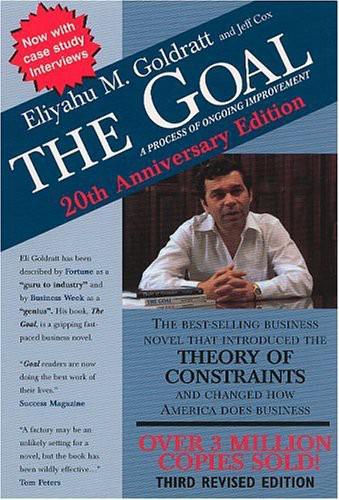
The Goal: A Process of Ongoing Improvement - 30th Anniversary Edition
by
Eliyahu M. Goldratt
Published 1 Jun 2012
I am convinced that if we hadn’t read and followed the methods in “The Goal” and “It’s Not Luck” the situation would be much different today. There is still much to do, as our business unit is the only one to really have embraced “The Goal.” I am hoping in my new role in Six Sigma that I can further share your tools and methods. Thank you for signing the book Dr. Sirias has forwarded to you on my behalf. I am honored. Sincerely, Robert (Rob) Kain P.E. Six Sigma Black Belt Dow Corning Corporation Life Sciences/Specialty Chemical Business DW: Impressive, but why is only one business unit of Dow Corning using TOC? What bothers me is that this person is talking about a span of over five years.
…
He puts his arm around my shoulder and says, "I’m proud to work for you.’’ AN INTERVIEW WITH ELI GOLDRATT AND OTHERS by David Whitford, Editor at Large, Fortune Small Business. DW: The Goal was published 20 years ago. Since then a lot has changed in operations. New, powerful methodologies to improve operations, such as LEAN and Six Sigma, are widespread. The emphasis on reducing lead time and improving due-date performance has become the norm. Even The Goal’s subtitle - a process of ongoing improvement - is a statement that is now taken for granted by every organization. So, my first question: Is The Goal still relevant? EG: How does a scientist go about judging the relevancy of a particular body of knowledge?

Lab Rats: How Silicon Valley Made Work Miserable for the Rest of Us
by
Dan Lyons
Published 22 Oct 2018
In the 1980s, two engineers at Motorola, the American consumer electronics giant, dreamed up a manufacturing system called Six Sigma, which big companies around the world spent the next two decades adopting. And so it goes. For the past hundred years, since the days of Frederick Taylor, companies have been latching on to new management fads, and each new fad runs its course, and then everyone leaps onto the next one, believing—like Charlie Brown running for the football in Lucy’s hands—that this time things will be different. Management Science Meets the Information Age Twentieth-century Taylorite methodologies like Six Sigma, Lean Manufacturing, and the Toyota Production System were developed for manufacturing physical things—cars, airplanes, lawn furniture, whatever.

Restarting the Future: How to Fix the Intangible Economy
by
Jonathan Haskel
and
Stian Westlake
Published 4 Apr 2022
But the value of this intangible asset lies not in knowledge but in the relationship—in the expectations that the parties have of one another, and in the way those expectations systematically affect their actions. The same applies within firms. One can write down a business’s operations or codify management practices such as Scrum or Six Sigma, but their implementation is about more than just knowledge. It is also about their instantiation in a set of relationships.39 Perhaps the reason the intangible economy is often described as the “knowledge economy” is that economists, being cerebral people, find the knowledge aspect of intangibles most salient.
…
But when we look at rich countries that have been able to maintain relatively large manufacturing sectors—Germany and Japan are prime examples—we find that their competitive advantage relies mostly on intangible assets: skills and training among their workforce, R&D and design abilities that allow them to stay at the cutting edge of product technology, and constant improvement in processes (such as Lean and Six Sigma) to mitigate high unit labour costs. A failing manufacturing sector, and the loss of the physical, politically desirable jobs that it provides, is the result of a failure to invest in intangibles. The importance of intangibles also helps explain the magic beans factor—the apparent abundance of businesses that look like high-variance bets.
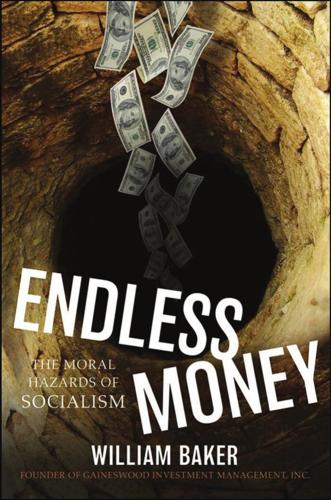
Endless Money: The Moral Hazards of Socialism
by
William Baker
and
Addison Wiggin
Published 2 Nov 2009
The assumptions of linearity and normally distributed outcomes are perhaps the most worrisome and limiting of thought, particularly because in the discipline of finance it has been almost unquestionably shown that six sigma events are happening with all too much regularity to be assumed random. (Two sigmas denote that in 95 percent of outcomes results will be within a stated boundary. A six sigma event is extremely rare; normally it would occur just 3.4 times in a million instances). The principals of Long-Term Capital Management, who had PhDs in economics, assumed away the possibility of rare outcomes with ruinous results for their investors.
…
See National Association of Securities Dealers Financial Missionaries to the World:The Politics and Culture of Dollar Diplomacy (Rosenberg), 279 412 Fisher, Irving, 94, 112–113, 114, 116, 131. See also Flat-Earth economics, debt inflation theory Fitzgerald, F. Scott, 165, 175 Flat-Earth economics: overview, 70–75 inflation targeting, 75–84 and the Great Depression, 84–94 debt inflation theory, 94–105 debt among nations, 105–115 and six sigma events, 111 Flower, Shawn, 295–296 Forbes, Steve, 203 Ford Foundation, 176–178 Ford, Henry, 177 Forecasting, 6–17 Foreclosure Act of 2008 (HR 3221), 142 Foster, Dean, 21 Foundations of Betrayal: How the Liberal Super Rich Undermine America (Kent), 175 Fox, Justin, 217 Frank, Barney, 139, 141, 186–187 Franklin, Benjamin, 42, 43, 44 Freddie Mac, 127, 139, 143, 149, 186, 190.

Capitalism Without Capital: The Rise of the Intangible Economy
by
Jonathan Haskel
and
Stian Westlake
Published 7 Nov 2017
It seems obvious that there are businesses with strong cultures of good management and high performance, that creating and maintaining these cultures takes investment (both of time and of money), and that these companies are more likely to succeed than ones with worse cultures: think, for example, of kaizen in Toyota, or Six Sigma in General Electric (GE). Further examples are discussed in chapter 8. We know that innovation often involves investing in organizational change, such as creating a new business unit to sell a new product line. And it’s also possible to think of examples of companies that have invested to create valuable organizational assets outside their own firms.
…
K., 131 rules and norms, 211–14 Sadun, Rafaella, 53, 82 Salter, Ammon, 197 Sampson, Rachelle, 168 Samsung, 73, 112 Sanders, Bernie, 223 Santa Fe Institute, 80 scalability, 9–10, 58, 60, 87, 101–2; definition of, 246n2; importance of, 67–68; income inequality and, 133–34; and increased investment, 110; and intangibles, 65–67; secular stagnation and, 103–5 Schreyer, Paul, 40 Schwarzenegger, Arnold, 16 Science: The Endless Frontier (Bush), 232 Second Machine Age, 30 secular stagnation, 91, 116; explanation for, 101–16; and intangibles investment, 102–3; profits and productivity differences and, 103–7; relationship of scalability and spillovers to, 109–16; symptoms of, 92–96 Shankar, Ravi, 61 Shi, Yuan, 168 Shih, Willy, 85 Shinoda, Yukio, 42 short-termism, 161, 168–69 Sichel, Dan, 4, 5, 39, 42, 43, 45 Siemens, 60–61, 204 single-factor productivity, 98–101 Six Sigma, 51 Skype, 217 Slack, 152, 217 smartphones, 72–73, 81 Smil, Vaclav, 146 Smith, Adam, 36, 188 social capital, 156, 236 soft infrastructure, 156 solar energy, 85 Solow, Robert, 39, 125 Song, Jae, 129, 131, 135 South Wales Institution of Engineers, 83 speculation, 249n1 spending, 46–47, 54; on assets, 20; rent-seeking, 113 Spenser, Percy, 80 spillovers, 9, 58, 61, 87, 102; contestedness and, 87; importance of, 77–79; and intangibles, 72–77, 109–16; Jacobs, 138; Marshall-Arrow-Romer, 62, 138; physical infrastructure and, 147–51; secular stagnation and, 103–4; slowing TFP growth and, 107–9; venture capital and, 178 Spotify, 18 Stack Overflow, 29 Stansted Airport, 1–2, 3–4 Starbucks, 34, 52, 65, 140, 183, 195, 197; scalability of, 67 start-up ecosystems, 222 Statute of Anne (1709), 76 stock markets, 167–68, 205–6; IPOs and, 171–72 stock of intangible assets, 56–57 Summers, Larry, 93 sunkenness, 8–9, 58, 60, 87, 246n5; as characteristic of intangibles, 68–70; importance of, 70–72; venture capital and, 175–76 sustained advantage, 250n2 Sutton, John, 67 symbolic analysis, 132–34 synergies, 10, 58, 61, 87–88, 213; and intangible assets, 80–83, 83–86; among investments, 110; maximizing the benefits of, 214–18; physical infrastructure and, 147–51; venture capital and, 176 System of National Accounts, 20, 43, 51 systems innovation, 198 tacit knowledge, 65 tangible investments, differences between intangible and, 7–10, 58 taxes, 139–40, 235; and financing, 166, 219 technology: and cost of intangible investment, 28; inequality as result of improvements in, 123–24, 126–27; and productivity of intangibles, 28–30; and spillovers, 151–52 Tesla Motors, 24, 111, 209 Thatcher, Margaret, 127 Theory of Moral Sentiments, The (Smith), 188 Thiel, Peter, 78, 175, 184–85, 187, 223 3M, 194 Toffler, Alvin, 4 Tonogi, Konomi, 42 total factor productivity (TFP), 96, 98, 102; poor performance of, 109–9, 114 Toyota, 29, 51 trade and inequality, 124 trademarks, 76 training and education, 51–52, 170, 228–30 Trajtenberg, Manuel, 106 Trump, Donald, 122, 141–42, 143 trust, 156 23andMe, 152 Twitter, 185, 187 Uber, 24, 28, 51; building of driver network by, 112–13; contestedness and, 115; legal travails of, 187; scalability of, 67, 101–2, 105; and synergies, 82; venture capital and, 174, 175 uncertainty, 87 Ure, Andrew, 126 Ur-Nammu, 75 US Federal Reserve, 4, 40, 41, 42, 165 US Food and Drug Administration, 154 Van Reenen, John, 82, 136, 173, 195 venture capital (VC) funding, 154–55, 161, 166, 174–75; problems with, 177–79; and intangibles, 175–77 Vlachos, Jonas, 131 Volcker, Paul, 165 von Mises, Ludwig, 38 von Wachter, Till, 129 Wallis, Gavin, 42, 223–24 Walmart, 81, 187 Warsh, David, 62 Wasmer, Etienne, 128 Watt, James, 78 wealth, 119–20, 121; housing and, 122, 128–29, 136–39; inequality of, 139–40; intangibles’ effects on, 129–40 Wealth of Nations, The (Smith), 36 Weightless World, The (Coyle), 4 Weitzman, Martin L., 195 Welch, Jack, 184 Whalley, Alexander, 224 “What Is the U.S.

Frugal Innovation: How to Do Better With Less
by
Jaideep Prabhu Navi Radjou
Published 15 Feb 2015
Meanwhile, frugal innovation seeks to reduce not just the financial cost of doing business but also its environmental cost. Frugal innovation also seeks to minimise time, especially important in such situations as bringing a promising new drug to market. Frugal innovation is not a management technique like Six Sigma and total quality management (TQM), which aim to reduce cost and waste. Rather, cost efficiency is a means to achieve the larger goal of greater customer value, as is manifest in $30 computers, $40 tablets, $800 electrocardiogram (ECG) machines and $6,000 cars. It is also possible for firms to be frugal in how they develop and market new products and services, while exercising discretion over whether or not they pass these savings on to consumers.
…
MacArthur Foundation 14 John Deere 67 John Lewis 195 Johnson & Johnson 100, 111 Johnson, Warren 98 Jones, Don 112 jugaad (frugal ingenuity) 199, 202 Jugaad Innovation (Radjou, Prabhu and Ahuja, 2012) xvii, 17 just-in-time design 33–4 K Kaeser, Joe 217 Kalanick, Travis 163 Kalundborg (Denmark) 160 kanju 201 Karkal, Shamir 124 Kaufman, Ben 50–1, 126 Kawai, Daisuke 29–30 Kelly, John 199–200 Kennedy, President John 138 Kenya 57, 200–1 key performance indicators see KPIs Khan Academy 16–17, 113–14, 164 Khan, Salman (Sal) 16–17, 113–14 Kickstarter 17, 48, 137, 138 KieranTimberlake 196 Kimberly-Clark 25, 145 Kingfisher 86–7, 91, 97, 157, 158–9, 185–6, 192–3, 208 KissKissBankBank 17, 137 Knox, Steve 145 Knudstorp, Jørgen Vig 37, 68, 69 Kobori, Michael 83, 100 KPIs (key performance indicators) 38–9, 67, 91–2, 185–6, 208 Kuhndt, Michael 194 Kurniawan, Arie 151–2 L La Chose 108 La Poste 92–3, 157 La Ruche qui dit Oui 137 “labs on a chip” 52 Lacheret, Yves 173–5 Lada 1 laser cutters 134, 166 Laskey, Alex 119 last-mile challenge 57, 146, 156 L’Atelier 168–9 Latin America 161 lattice organisation 63–4 Laury, Véronique 208 Laville, Elisabeth 91 Lawrence, Jamie 185, 192–3, 208 LCA (life-cycle assessment) 196–7 leaders 179, 203–5, 214, 217 lean manufacturing 192 leanness 33–4, 41, 42, 170, 192 Learnbox 114 learning by doing 173, 179 learning organisations 179 leasing 123 Lee, Deishin 159 Lego 51, 126 Lego Group 37, 68, 69, 144 Legrand 157 Lenovo 56 Leroy, Adolphe 127 Leroy Merlin 127–8 Leslie, Garthen 150–1 Lever, William Hesketh 96 Levi Strauss & Co 60, 82–4, 100, 122–3 Lewis, Dijuana 212 life cycle of buildings 196 see also product life cycle life-cycle assessment (LCA) 196–7 life-cycle costs 12, 24, 196 Lifebuoy soap 95, 97 lifespan of companies 154 lighting 32, 56, 123, 201 “lightweighting” 47 linear development cycles 21, 23 linear model of production 80–1 Link 131 littleBits 51 Livi, Daniele 88 Livi, Vittorio 88 local communities 52, 57, 146, 206–7 local markets 183–4 Local Motors 52, 129, 152 local solutions 188, 201–2 local sourcing 51–2, 56, 137, 174, 181 localisation 56, 137 Locavesting (Cortese, 2011) 138 Logan car 2–3, 12, 179, 198–9 logistics 46, 57–8, 161, 191, 207 longevity 121, 124 Lopez, Maribel 65–6 Lopez Research 65–6 L’Oréal 174 Los Alamos National Laboratory 170 low-cost airlines 60, 121 low-cost innovation 11 low-income markets 12–13, 161, 203, 207 Lowry, Adam 81–2 M m-health 109, 111–12 M-KOPA 201 M-Pesa 57, 201 M3D 48, 132 McDonough Braungart Design Chemistry (MBDC) 84 McDonough, William 82 McGregor, Douglas 63 MacGyvers 17–18, 130, 134, 167 McKelvey, Jim 135 McKinsey & Company 81, 87, 209 mainstream, frugal products in 216 maintenance 66, 75, 76, 124, 187 costs 48–9, 66 Mainwaring, Simon 8 Maistre, Christophe de 187–8, 216 Maker Faire 18, 133–4 Maker platform 70 makers 18, 133–4, 145 manufacturing 20th-century model 46, 55, 80–1 additive 47–9 continuous 44–5 costs 47, 48, 52 decentralised 9, 44, 51–2 frugal 44–54 integration with logistics 57–8 new approaches 50–4 social 50–1 subtractive method 48 tools for 47, 47–50 Margarine Unie 96 market 15, 28, 38, 64, 186, 189, 192 R&D and 21, 26, 33, 34 market research 25, 61, 139, 141 market share 100 marketing 21–2, 24, 36, 61–3, 91, 116–20, 131, 139 and R&D 34, 37, 37–8 marketing teams 143, 150 markets 12–13, 42, 62, 215 see also emerging markets Marks & Spencer (M&S) 97, 215 Plan A 90, 156, 179–81, 183–4, 186–7, 214 Marriott 140 Mars 57, 158–9, 161 Martin Marietta 159 Martin, Tod 154 mass customisation 9, 46, 47, 48, 57–8 mass market 189 mass marketing 21–2 mass production 9, 46, 57, 58, 74, 129, 196 Massachusetts Institute of Technology see MIT massive open online courses see MOOCs materials 3, 47, 48, 73, 92, 161 costs 153, 161, 190 recyclable 74, 81, 196 recycled 77, 81–2, 83, 86, 89, 183, 193 renewable 77, 86 repurposing 93 see also C2C; reuse Mayhew, Stephen 35, 36 Mazoyer, Eric 90 Mazzella, Frédéric 163 MBDC (McDonough Braungart Design Chemistry) 84 MDI 16 measurable goals 185–6 Mechanical Engineer Laboratory (MEL) 52 “MEcosystems” 154–5, 156–8 Medicare 110 medication 111–12 Medicity 211 MedStartr 17 MEL (Mechanical Engineer Laboratory) 52 mental models 2, 193–203, 206, 216 Mercure 173 Merlin, Rose 127 Mestrallet, Gérard 53, 54 method (company) 81–2 Mexico 38, 56 Michelin 160 micro-factories 51–2, 52, 66, 129, 152 micro-robots 52 Microsoft 38 Microsoft Kinect 130 Microsoft Word 24 middle classes 197–8, 216 Migicovsky, Eric 137–8 Mikkiche, Karim 199 millennials 7, 14, 17, 131–2, 137, 141, 142 MindCET 165 miniaturisation 52, 53–4 Mint.com 125 MIT (Massachusetts Institute of Technology) 44–5, 107, 130, 134, 202 mobile health see m-health mobile phones 24, 32, 61, 129–30, 130, 168, 174 emerging market use 198 infrastructure 56, 198 see also smartphones mobile production units 66–7 mobile technologies 16, 17, 103, 133, 174, 200–1, 207 Mocana 151 Mochon, Daniel 132 modular design 67, 90 modular production units 66–7 Modularer Querbaukasten see MQB “mompreneurs” 145 Mondelez 158–9 Money Dashboard 125 Moneythink 162 monitoring 65–6, 106, 131 Monopoly 144 MOOCs (massive open online courses) 60, 61, 112, 113, 114, 164 Morieux, Yves 64 Morocco 207 Morris, Robert 199–200 motivation, employees 178, 180, 186, 192, 205–8 motivational approaches to shaping consumer behaviour 105–6 Motorola 56 MQB (Modularer Querbaukasten) 44, 45–6 Mulally, Alan 70, 166 Mulcahy, Simon 157 Mulliez family 126–7 Mulliez, Vianney 13, 126 multi-nodal innovation 202–3 Munari, Bruno 93 Murray, Mike 48–9 Musk, Elon 172 N Nano car 119, 156 National Geographic 102 natural capital, loss of 158–9 Natural Capital Leaders Platform 158–9 natural resources 45, 86 depletion 7, 72, 105, 153, 158–9 see also resources NCR 55–6 near-shoring 55 Nelson, Simon 113 Nemo, Sophie-Noëlle 93 Nest Labs 98–100, 103 Nestlé 31, 44, 68, 78, 94, 158–9, 194, 195 NetPositive plan 86, 208 networking 152–3, 153 new materials 47, 92 New Matter 132 new technologies 21, 27 Newtopia 32 next-generation customers 121–2 next-generation manufacturing techniques 44–6, 46–7 see also frugal manufacturing Nigeria 152, 197–8 Nike 84 NineSigma 151 Nissan 4, 4–5, 44, 199 see also Renault-Nissan non-governmental organisations 167 non-profit organisations 161, 162, 202 Nooyi, Indra 217 Norman, Donald 120 Norris, Greg 196 North American companies 216–17 North American market 22 Northrup Grumman 68 Norton, Michael 132 Norway 103 Novartis 44–5, 215 Novotel 173, 174 nudging 100, 108, 111, 117, 162 Nussbaum, Bruce 140 O O2 147 Obama, President Barack 6, 8, 13, 134, 138, 208 obsolescence, planned 24, 121 offshoring 55 Oh, Amy 145 Ohayon, Elie 71–2 Oliver Wyman 22 Olocco, Gregory 206 O’Marah, Kevin 58 on-demand services 39, 124 online communities 31, 50, 61, 134 online marketing 143 online retailing 60, 132 onshoring 55 Opel 4 open innovation 104, 151, 152, 153, 154 open-source approach 48, 129, 134, 135, 172 open-source hardware 51, 52, 89, 130, 135, 139 open-source software 48, 130, 132, 144–5, 167 OpenIDEO 142 operating costs 45, 215 Opower 103, 109, 119 Orange 157 Orbitz 173 organisational change 36–7, 90–1, 176, 177–90, 203–8, 213–14, 216 business models 190–3 mental models 193–203 organisational culture 36–7, 170, 176, 177–9, 213–14, 217 efficacy focus 181–3 entrepreneurial 76, 173 see also organisational change organisational structure 63–5, 69 outsourcing 59, 143, 146 over-engineering 27, 42, 170 Overby, Christine 25 ownership 9 Oxylane Group 127 P P&G (Procter & Gamble) 19, 31, 58, 94, 117, 123, 145, 195 packaging 57, 96, 195 Page, Larry 63 “pain points” 29, 30, 31 Palmer, Michael 212 Palo Alto Junior League 20 ParkatmyHouse 17, 63, 85 Parker, Philip 61 participation, customers 128–9 partner ecosystems 153, 154, 200 partners 65, 72, 148, 153, 156–8 sharing data with 59–60 see also distributors; hyper-collaboration; suppliers Partners in Care Foundation 202 partnerships 41, 42, 152–3, 156–7, 171–2, 174, 191 with SMBs 173, 174, 175 with start-ups 20, 164–5, 175 with suppliers 192–3 see also hyper-collaboration patents 171–2 Payne, Alex 124 PE International 196 Pearson 164–5, 167, 181–3, 186, 215 Pebble 137–8 peer-to-peer economic model 10 peer-to-peer lending 10 peer-to-peer sales 60 peer-to-peer sharing 136–7 Pélisson, Gérard 172–3 PepsiCo 38, 40, 179, 190, 194, 215 performance 47, 73, 77, 80, 95 of employees 69 Pernod Ricard 157 personalisation 9, 45, 46, 48, 62, 129–30, 132, 149 Peters, Tom 21 pharmaceutical industry 13, 22, 23, 33, 58, 171, 181 continuous manufacturing 44–6 see also GSK Philippines 191 Philips 56, 84, 100, 123 Philips Lighting 32 Picaud, Philippe 122 Piggy Mojo 119 piggybacking 57 Piketty, Thomas 6 Plan A (M&S) 90, 156, 179–81, 183–4, 186–7, 214 Planet 21 (Accor) 174–5 planned obsolescence 24, 121 Plastyc 17 Plumridge, Rupert 18 point-of-sale data 58 Poland 103 pollution 74, 78, 87, 116, 187, 200 Polman, Paul 11, 72, 77, 94, 203–5, 217 portfolio management tools 27, 33 Portugal 55, 103 postponement 57–8 Potočnik, Janez 8, 79 Prabhu, Arun 25 Prahalad, C.K. 12 predictive analytics 32–3 predictive maintenance 66, 67–8 Priceline 173 pricing 81, 117 processes digitising 65–6 entrenched 14–16 re-engineering 74 simplifying 169, 173 Procter & Gamble see P&G procurement priorities 67–8 product life cycle 21, 75, 92, 186 costs 12, 24, 196 sustainability 73–5 product-sharing initiatives 87 production costs 9, 83 productivity 49, 59, 65, 79–80, 153 staff 14 profit 14, 105 Progressive 100, 116 Project Ara 130 promotion 61–3 Propeller Health 111 prosumers xix–xx, 17–18, 125, 126–33, 136–7, 148, 154 empowering and engaging 139–46 see also horizontal economy Protomax 159 prototypes 31–2, 50, 144, 152 prototyping 42, 52, 65, 152, 167, 192, 206 public 50–1, 215 public sector, working with 161–2 publishers 17, 61 Pullman 173 Puma 194 purchasing power 5–6, 216 pyramidal model of production 51 pyramidal organisations 69 Q Qarnot Computing 89 Qualcomm 84 Qualcomm Life 112 quality 3, 11–12, 15, 24, 45, 49, 82, 206, 216 high 1, 9, 93, 198, 216 measure of 105 versus quantity 8, 23 quality of life 8, 204 Quicken 19–21 Quirky 50–1, 126, 150–1, 152 R R&D 35, 67, 92, 151 big-ticket programmes 35–6 and business development 37–8 China 40, 188, 206 customer focus 27, 39, 43 frugal approach 12, 26–33, 82 global networks 39–40 incentives 38–9 industrial model 2, 21–6, 33, 36, 42 market-focused, agile model 26–33 and marketing 34, 37, 37–8 recommendations for managers 34–41 speed 23, 27, 34, 149 spending 15, 22, 23, 28, 141, 149, 152, 171, 187 technology culture 14–15, 38–9 see also Air Liquide; Ford; GSK; IBM; immersion; Renault; SNCF; Tarkett; Unilever R&D labs 9, 21–6, 70, 149, 218 in emerging markets 40, 188, 200 R&D teams 26, 34, 38–9, 65, 127, 150, 194–5 hackers as 142 innovation brokering 168 shaping customer behaviour 120–2 Raspberry Pi 135–6, 164 Ratti, Carlo 107 raw materials see materials real-time demand signals 58, 59 Rebours, Christophe 157–8 recession 5–6, 6, 46, 131, 180 Reckitt Benckiser 102 recommendations for managers flexing assets 65–71 R&D 34–41 shaping consumer behaviour 116–24 sustainability 90–3 recruiting 70–1 recyclable materials 74, 81, 196 recyclable products 3, 73, 159, 195–6 recycled materials 77, 81–2, 83, 86, 89, 183, 193 recycling 8, 9, 87, 93, 142, 159 e-waste 87–8 electronic and electrical goods (EU) 8, 79 by Tarkett 73–7 water 83, 175 see also C2C; circular economy Recy’Go 92–3 regional champions 182 regulation 7–8, 13, 78–9, 103, 216 Reich, Joshua 124 RelayRides 17 Renault 1–5, 12, 117, 156–7, 179 Renault-Nissan 4–5, 40, 198–9, 215 renewable energy 8, 53, 74, 86, 91, 136, 142, 196 renewable materials 77, 86 Replicator 132 repurposing 93 Requardt, Hermann 189 reshoring 55–6 resource constraints 4–5, 217 resource efficiency 7–8, 46, 47–9, 79, 190 Resource Revolution (Heck, Rogers and Carroll, 2014) 87–8 resources 40, 42, 73, 86, 197, 199 consumption 9, 26, 73–7, 101–2 costs 78, 203 depletion 7, 72, 105, 153, 158–9 reducing use 45, 52, 65, 73–7, 104, 199, 203 saving 72, 77, 200 scarcity 22, 46, 72, 73, 77–8, 80, 158–9, 190, 203 sharing 56–7, 159–61, 167 substitution 92 wasting 169–70 retailers 56, 129, 214 “big-box” 9, 18, 137 Rethink Robotics 49 return on investment 22, 197 reuse 9, 73, 76–7, 81, 84–5, 92–3, 200 see also C2C revenues, generating 77, 167, 180 reverse innovation 202–3 rewards 37, 178, 208 Riboud, Franck 66, 184, 217 Rifkin, Jeremy 9–10 robots 47, 49–50, 70, 144–5, 150 Rock Health 151 Rogers, Jay 129 Rogers, Matt 87–8 Romania 2–3, 103 rookie mindset 164, 168 Rose, Stuart 179–80, 180 Roulin, Anne 195 Ryan, Eric 81–2 Ryanair 60 S S-Oil 106 SaaS (software as a service) 60 Saatchi & Saatchi 70–1 Saatchi & Saatchi + Duke 71–2, 143 sales function 15, 21, 25–6, 36, 116–18, 146 Salesforce.com 157 Santi, Paolo 108 SAP 59, 186 Saunders, Charles 211 savings 115 Sawa Orchards 29–31 Scandinavian countries 6–7 see also Norway Schmidt, Eric 136 Schneider Electric 150 Schulman, Dan 161–2 Schumacher, E.F. 104–5, 105 Schweitzer, Louis 1, 2, 3, 4, 179 SCM (supply chain management) systems 59 SCOR (supply chain operations reference) model 67 Seattle 107 SEB 157 self-sufficiency 8 selling less 123–4 senior managers 122–4, 199 see also CEOs; organisational change sensors 65–6, 106, 118, 135, 201 services 9, 41–3, 67–8, 124, 149 frugal 60–3, 216 value-added 62–3, 76, 150, 206, 209 Shapeways 51, 132 shareholders 14, 15, 76, 123–4, 180, 204–5 sharing 9–10, 193 assets 159–61, 167 customers 156–8 ideas 63–4 intellectual assets 171–2 knowledge 153 peer-to-peer 136–9 resources 56–7, 159–61, 167 sharing economy 9–10, 17, 57, 77, 80, 84–7, 108, 124 peer-to-peer sharing 136–9 sharing between companies 159–60 shipping costs 55, 59 shopping experience 121–2 SIEH hotel group 172–3 Siemens 117–18, 150, 187–9, 215, 216 Sigismondi, Pier Luigi 100 Silicon Valley 42, 98, 109, 150, 151, 162, 175 silos, breaking out of 36–7 Simple Bank 124–5 simplicity 8, 41, 64–5, 170, 194 Singapore 175 Six Sigma 11 Skillshare 85 SkyPlus 62 Small is Beautiful (Schumacher, 1973) 104–5 “small is beautiful” values 8 small and medium-sized businesses see SMBs Smart + Connected Communities 29 SMART car 119–20 SMART strategy (Siemens) 188–9 smartphones 17, 100, 106, 118, 130, 131, 135, 198 in health care 110, 111 see also apps SmartScan 29 SMBs (small and medium-sized businesses) 173, 174, 175, 176 SMS-based systems 42–3 SnapShot 116 SNCF 41–3, 156–7, 167 SoapBox 28–9 social business model 206–7 social comparison 109 social development 14 social goals 94 social learning 113 social manufacturing 47, 50–1 social media 16, 71, 85, 106, 108, 168, 174 for marketing 61, 62, 143 mining 29, 58 social pressure of 119 tools 109, 141 and transaction costs 133 see also Facebook; social networks; Twitter social networks 29, 71, 72, 132–3, 145, 146 see also Facebook; Twitter social pressure 119 social problems 82, 101–2, 141, 142, 153, 161–2, 204 social responsibility 7, 10, 14, 141, 142, 197, 204 corporate 77, 82, 94, 161 social sector, working with 161–2 “social tinkerers” 134–5 socialising education 112–14 Sofitel 173 software 72 software as a service (SaaS) 60 solar power 136, 201 sourcing, local 51–2, 56 Southwest Airlines 60 Spain 5, 6, 103 Spark 48 speed dating 175, 176 spending, on R&D 15, 22, 23, 28, 141, 149, 152, 171, 187 spiral economy 77, 87–90 SRI International 49, 52 staff see employees Stampanato, Gary 55 standards 78, 196 Starbucks 7, 140 start-ups 16–17, 40–1, 61, 89, 110, 145, 148, 150, 169, 216 investing in 137–8, 157 as partners 42, 72, 153, 175, 191, 206 see also Nest Labs; Silicon Valley Statoil 160 Steelcase 142 Stem 151 Stepner, Diana 165 Stewart, Emma 196–7 Stewart, Osamuyimen 201–2 Sto Corp 84 Stora Enso 195 storytelling 112, 113 Strategy& see Booz & Company Subramanian, Prabhu 114 substitution of resources 92 subtractive manufacturing 48 Sun Tzu 158 suppliers 67–8, 83, 148, 153, 167, 176, 192–3 collaboration with 76, 155–6 sharing with 59–60, 91 visibility 59–60 supply chain management see SCM supply chain operations reference (SCOR) model 67 supply chains 34, 36, 54, 65, 107, 137, 192–3 carbon footprint 156 costs 58, 84 decentralisation 66–7 frugal 54–60 integrating 161 small-circuit 137 sustainability 137 visibility 34, 59–60 support 135, 152 sustainability xix, 9, 12, 72, 77–80, 82, 97, 186 certification 84 as competitive advantage 80 consumers and 95, 97, 101–4 core design principle 82–4, 93, 195–6 and growth 76, 80, 104–5 perceptions of 15–16, 80, 91 recommendations for managers 90–3 regulatory demand for 78–9, 216 standard bearers of 80, 97, 215 see also Accor; circular economy; Kingfisher; Marks & Spencer; Tarkett; Unilever sustainable design 82–4 see also C2C sustainable distribution 57, 161 sustainable growth 72, 76–7 sustainable lifestyles 107–8 Sustainable Living Plan (Unilever) 94–7, 179, 203–4 sustainable manufacturing 9, 52 T “T-shaped” employees 70–1 take-back programmes 9, 75, 77, 78 Tally 196–7 Tarkett 73–7, 80, 84 TaskRabbit 85 Tata Motors 16, 119 Taylor, Frederick 71 technical design 37–8 technical support, by customers 146 technology 2, 14–15, 21–2, 26, 27 TechShop 9, 70, 134–5, 152, 166–7 telecoms sector 53, 56 Telefónica 147 telematic monitoring 116 Ternois, Laurence 42 Tesco 102 Tesla Motors 92, 172 testing 28, 42, 141, 170, 192 Texas Industries 159 Textoris, Vincent 127 TGV Lab 42–3 thermostats 98–100 thinking, entrenched 14–16 Thompson, Gav 147 Timberland 90 time 4, 7, 11, 41, 72, 129, 170, 200 constraints 36, 42 see also development cycle tinkerers 17–18, 133–5, 144, 150, 152, 153, 165–7, 168 TiVo 62 Tohamy, Noha 59–60 top-down change 177–8 top-down management 69 Total 157 total quality management (TQM) 11 total volatile organic compounds see TVOC Toyota 44, 100 Toyota Sweden 106–7 TQM (total quality management) 11 traffic 108, 116, 201 training 76, 93, 152, 167, 170, 189 transaction costs 133 transparency 178, 185 transport 46, 57, 96, 156–7 Transport for London 195 TrashTrack 107 Travelocity 174 trial and error 173, 179 Trout, Bernhardt 45 trust 7, 37, 143 TVOC (total volatile organic compounds) 74, 77 Twitter 29, 62, 135, 143, 147 U Uber 136, 163 Ubuntu 202 Uchiyama, Shunichi 50 UCLA Health 202–3 Udacity 61, 112 UK 194 budget cuts 6 consumer empowerment 103 industrial symbiosis 160 savings 115 sharing 85, 138 “un-management” 63–4, 64 Unboundary 154 Unilever 11, 31, 57, 97, 100, 142, 203–5, 215 and sustainability 94–7, 104, 179, 203–4 University of Cambridge Engineering Design Centre (EDC) 194–5 Inclusive Design team 31 Institute for Sustainability Leadership (CISL) 158–9 upcycling 77, 88–9, 93, 159 upselling 189 Upton, Eben 135–6 US 8, 38, 44, 87, 115, 133, 188 access to financial services 13, 17, 161–2 ageing population 194 ageing workforce 13 commuting 131 consumer spending 5, 6, 103 crowdfunding 137–8, 138 economic pressures 5, 6 energy use 103, 119, 196 environmental awareness 7, 102 frugal innovation in 215–16, 218 health care 13, 110, 208–13, 213 intellectual property 171 onshoring 55 regulation 8, 78, 216 sharing 85, 138–9 shifting production from China to 55, 56 tinkering culture 18, 133–4 user communities 62, 89 user interfaces 98, 99 user-friendliness 194 Utopies 91 V validators 144 value 11, 132, 177, 186, 189–90 aspirational 88–9 to customers 6–7, 21, 77, 87, 131, 203 from employees 217 shareholder value 14 value chains 9, 80, 128–9, 143, 159–60, 190, 215 value engineering 192 “value gap” 54–5 value-added services 62–3, 76, 150, 206, 209 values 6–7, 14, 178, 205 Vandebroek, Sophie 169 Vasanthakumar, Vaithegi 182–3 Vats, Tanmaya 190, 192 vehicle fleets, sharing 57, 161 Verbaken, Joop 118 vertical integration 133, 154 virtual prototyping 65 virtuous cycle 212–13 visibility 34, 59–60 visible learning 112–13 visioning sessions 193–4 visualisation 106–8 Vitality 111 Volac 158–9 Volkswagen 4, 44, 45–6, 129, 144 Volvo 62 W wage costs 48 wages, in emerging markets 55 Waitrose, local suppliers 56 Walker, James 87 walking the walk 122–3 Waller, Sam 195 Walmart 9, 18, 56, 162, 216 Walton, Sam 9 Wan Jia 144 Washington DC 123 waste 24, 87–9, 107, 159–60, 175, 192, 196 beautifying 88–9, 93 e-waste 24, 79, 87–8, 121 of energy 119 post-consumer 9, 75, 77, 78, 83 reducing 47, 74, 85, 96, 180, 209 of resources 169–70 in US health-care system 209 see also C2C; recycling; reuse water 78, 83, 104, 106, 158, 175, 188, 206 water consumption 79, 82–3, 100, 196 reducing 74, 75, 79, 104, 122–3, 174, 183 wealth 105, 218 Wear It Share It (Wishi) 85 Weijmarshausen, Peter 51 well-being 104–5 Wham-O 56 Whirlpool 36 “wicked” problems 153 wireless technologies 65–6 Wiseman, Liz 164 Wishi (Wear It Share It) 85 Witty, Andrew 35, 35–6, 37, 39, 217 W.L.
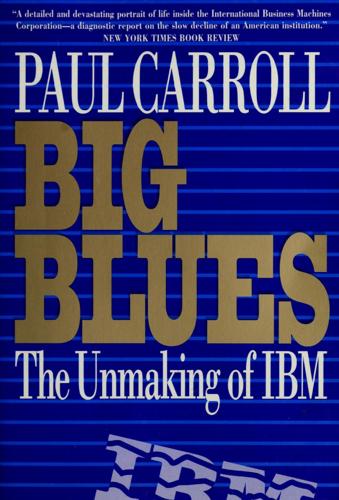
Big Blues: The Unmaking of IBM
by
Paul Carroll
Published 19 Sep 1994
“Now people are w andering around thinking about how to conduct their business perfectly. It’s astonishing. It’s the best thing to ever happen to us.” 1 But the heavy-handed approach gave the troops mixed feelings at best about Quality— known at IBM as M arket-Driven Quality, or, given the need for an acronym, M D Q — and its obsession with the Six Sigma m easurem ent. “Six Sigma Equals Heil H itler,” one person wrote on a form requesting anonymous feedback on the Quality program. Another BIG BLUES 245 employee com plained about how IBM was continuing to cut back on its num ber of employees and wrote that M DQ really stood for “Move, Die or Q uit.” An underground employee newsletter stated that M DQ must mean “M anagem ent-Driven Quest (for bigger bonuses).”
…
Besides pushing on the OEM front, Akers also decided to begin a Quality program, joining a host of American companies adopting Japa nese ideas about the need for measurable results in all business pro cesses and for constant im provem ent in those results. The eventual aim was to reach a nirvanalike state called Six Sigma, in which a company would be making fewer than 3.4 mistakes p er million products made, calls answered, and so on. Akers started out with the best of intentions. He had someone calculate that IBM spent $2.4 billion a year fixing problems with products; had those problems never occurred, that $2.4 billion would have dropped right down into IBM ’s profits.
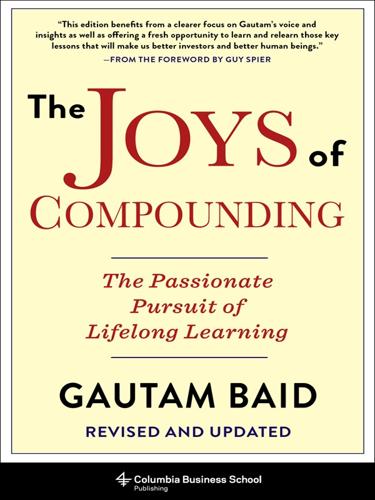
The Joys of Compounding: The Passionate Pursuit of Lifelong Learning, Revised and Updated
by
Gautam Baid
Published 1 Jun 2020
There will be fewer accidents but when they happen, they will be fatal [emphasis added]. —Warren Buffett During his LTCM speech at the University of Florida, Buffett highlighted how reliance on only the “documented” past leads to blind spots and neglect of “total exposure”: It’s produced by an over-reliance…on things…those guys would tell me…a six sigma event wouldn’t touch us…but they were wrong…history does not tell you the probabilities of future financial things happening…. The same thing in a different way could happen to any of us…where we really have a blind spot about something that’s crucial because we know a whole lot about something else….
…
The inaugural edition of Security Analysis had as a frontispiece a quote from Horace’s Ars Poetica that best sums up the essence of market cycles and sector leaders and laggards in bull and bear markets: “Many shall be restored that now are fallen, and many shall fall that now are in honor.”11 Risk is what’s left over after you’ve thought of everything possible, plausible, and probable. The human mind’s tendency to completely discount six sigma and other rare events from the realm of possibility is what Taleb warns about in his book The Black Swan. We need to avoid clamoring for precise single-point predictions and instead stress-test our portfolio under a wider and darker range of “what-if” scenarios and outcomes. When we humbly accept that it’s difficult to make predictions, especially about the future, we will be more inclined to build an investment strategy that is robust to a wide range of outcomes.
…
E., 40 Shleifer, Andrei, 348 short-term thinking, Keynes on, 108 sidecar investing, 313–315 Siegel, Jeremy, 171; on fear, 274 signal and noise, 295–296 Simon, Herbert, 14–15, 26, 328 simplicity, 68, 152; Buffett on, 72; Einstein on, 73; focus and, 74; Munger on, 72–73; Prabai on, 70; steps for, 73–76; as way of life, 76–77 Sinclair, Upton, 78 Sinegal, Jim, 124 Singleton, Henry, 287 Singularity Is Near, The (Kurzweil), 318 six sigma, 261 Skinner, B. F., 146 SKS Microfinance, 342 S&L crisis. See savings and loan crisis “Slow Dance” (Weatherford), 375–376 Smith, Adam, 10, 13, 93, 278 Smith, Edgar Lawrence, 215 Smith, Terry, 175 Snowball, The, 5–6 social media, 14, 105 Socrates, 38 software as a service (SaaS), 311 Solin, Dan, 271 “Solitude and Leadership” (Deresiewicz), 30 Son, Masayoshi, 314 Soros, George, 190, 247, 285, 319 South Sea Bubble, 282, 339 S&P 500, 167, 255, 270, 279–280; constituents of, 336; largest companies in, 231 specialists, Munger on, 27 special situations, Graham on, 199–200 Spier, Guy, 46, 48, 87, 137, 370 spinoffs: Greenblatt on, 202–203; Klarman on, 201; long-term potential of, 205; Lynch on, 204; performance of, 202, 204; returns from, 200; in United States, 204; Wall Street on, 204–205 Srivastava, Anup, 312–313 stalwarts, Lynch on, 231–232 Stanley, Thomas, 79 status quo bias, 135 staying power, 266 stereotyping, 240; Kahneman on, 238–239 stock market: luck in, 331; as pari-mutuel system, 297 stocks: anchoring and, 337–338; blue-chip, 230–231; bonds and, 121–122; Buffett on, 121; certainty and, 212; commodity, 191–192; comparison of returns, 220; Graphite India, 188; HEG, 188, 195; high-quality, 234; Loeb on, 216; Lynch on, 236; maturity of, 121; par value of, 121; penny, 313; performance of, 299; time frame and, 185; total real returns on, 274 strangers, kindness of, 264–265 stress-influence tendency, 342–343 Subex, 334–335 subtractive epistemology, Taleb on, 21 success: Buffett on, 209, 327; core test of, 209 sum of parts valuation, 311 Sunstein, Cass, 345 Sun Tzu, 142 super-cat insurance, 313 Superforecasting (Tetlock & Gardner), 292 supply deficits, 194 Surat Diamond Bourse, 198 surfing, Munger on, 315 Surowiecki, James, 241 Swensen, David, 247 switching costs: in business models, 211; ROIC and, 223 syntopical reading, 17 Tagore, Rabindranath, 76 Taleb, Nassim Nicholas, 15, 145, 253, 259, 261, 266, 319; on life, 321; on Lindy effect, 16; on subtractive epistemology, 21 Talent is Overrated (Colvin), 42 tangible equity, pretax return on, 132 target prices, 122 taxes, 130; profit before, 132 tax-free municipal bonds, 88–89 tech bubble, 282 Techno-Funda, 185–186 technology: Munger on, 289; proprietary, 211 Templeton, John, 236; on bull markets, 233; on investment, 299 Teresa (Mother), 66, 370 Tetlock, Philip, 294–295; on Bayesian methods, 292–293 Thailand, 326 Thaler, Richard, 345 Theory of Moral Sentiments, The (Smith, A.), 93 Thiel, Peter, 319 thinking: calculation and, 309–313; Darwin on, 296; fine-tuning, 305–306; first principles, 19–21; flexibility of, 300; Franklin on, 297; golden rule of, 296; Griffin on, 29–30; happiness and, 352; about market conditions, 232–240; mental models and, 29–30; Munger on, 158–159; opportunity costs and, 305–306; positive, 351–356; second-level, 306; time management and, 11–13 Thinking, Fast and Slow (Kahneman), 292 Thorndike, William, 227 Thorp, Ed, 249, 259 three-bucket framework, 28 thumb-sucking, Munger on, 300 Tide, 222 time: Buffett on, 216; nonrenewability of, 11–12; stocks and, 185; wealth and, 78–79 timelessness, of wisdom, 16 time management, 6; learning and, 11–13; reading and, 11–13; thinking and, 11–13 Toffler, Alvin, 284 Tolle, Eckhart, 351 Tolstoy, Leo, 12 Torrent Pharmaceuticals, 197–198 total debt, 131 total real returns, 274 trade-offs, 40–41 Treasury bonds, 255 Treasury rate, 58 Truman, Harry, 281 trust: building, 49; earning, 49–50; Munger on, 49; Welch on, 49 truths, absolute, 55–56 turnarounds, Buffett on, 294 Tversky, Amos, 141, 344 twaddle tendency, 335 Twain, Mark, 16, 39, 187, 264, 346 Twitter, market conditions and, 236 Tzu, Lao, 285 Uber, 225, 286 uncertainty: certainty and, 54–55; Feynman on, 55; risk and, 240, 314 underspending, 79 understanding, 31 Undervalued Corporation, 217 unforced errors, 219 United States (US): equity markets in, 280; GDP of, 278; spinoffs in, 204 United Technologies, 39–40 Upanishads, 33 US.
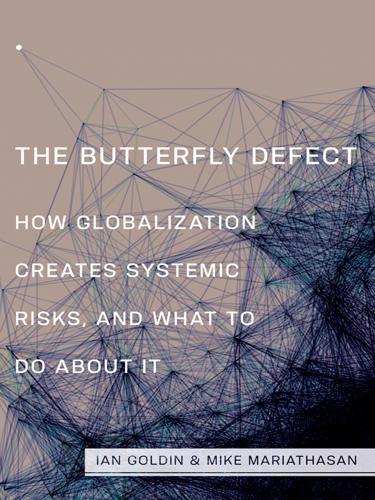
The Butterfly Defect: How Globalization Creates Systemic Risks, and What to Do About It
by
Ian Goldin
and
Mike Mariathasan
Published 15 Mar 2014
Taiichi Ohno, 1988, Toyota Production System: Beyond Large-Scale Production (Portland, OR: Productivity Press). 18. Goldin, 2011, 30–31; see also David Magee, 2008, How Toyota Became #1: Leadership Lessons from the World’s Greatest Car Company (New York: Portfolio). 19. For a more detailed discussion of Toyota’s economic system, see Michael L. George, David T. Rowlands, and Bill Kastle, 2003, What Is Lean Six Sigma? (New York: McGraw-Hill Professional); Jeffrey Liker, 2004, The Toyota Way: 14 Management Principles from the World’s Greatest Manufacturer (New York: McGraw-Hill Professional); Magee, 2008; or Goldin, 2011, among others. 20. Markillie, 2006. 21. One estimate puts the total economic losses attributed to the floods by 1 December 2011 at US$45.7 billion and the damage to manufacturing at US$32 billion.
…
“Systemic Risk in a Network Model of Interbank Markets with Central Bank Activity.” Jena Economic Research Paper 2010-33. Friedrich Schiller University and the Max Planck Institute of Economics, Jena, Germany. Accessed 1 February 2013. http://pubdb.wiwi.uni-jena.de/pdf/wp_2010_033.pdf. George, Michael L., David T. Rowlands, and Bill Kastle. 2003. What Is Lean Six Sigma? New York: McGraw-Hill Professional. Giddens, Anthony. 1991. The Consequences of Modernity. Stanford, CA: Stanford University Press. Gigerenzer, Gerd. 2010. Rationality for Mortals: How People Cope with Uncertainty. New York: Oxford University Press. Gigerenzer, Gerd, Ralph Hertwig, and Thorsten Pachur, eds. 2011.

Only Humans Need Apply: Winners and Losers in the Age of Smart Machines
by
Thomas H. Davenport
and
Julia Kirby
Published 23 May 2016
A study of process automation at Telefónica’s O2—the second-largest mobile carrier in the United Kingdom—found that as of April 2015, the company had automated more than 160 process areas involving between 400,000 and 500,000 transactions.9 Each of the process areas employed software “robots” from vendor Blue Prism. The overall ROI of this technology was between 650 and 800 percent. That’s a better payoff than most companies achieved from other approaches to process improvement, including reengineering and Six Sigma. There is certainly organizational and behavioral change involved with this form of technology, and it may eventually lead to layoffs. But most of the companies we’ve observed have redeployed workers to other roles. Human employees’ initial mistrust of automation tools gives way to relief that boring work is being done by a machine.
…
Of course, different emphases in an organization’s automation or augmentation programs require different types of people. At Xchanging, the highly process-oriented nature of the work means that the head of “Robotic Automation,” Paul Donaldson (he has since moved to a similar job in a different company), needed a strong process focus. Fortunately, he’s a Six Sigma Black Belt. Donaldson says that his key responsibilities included directing the overall operation of robotic process automation, deciding which processes to apply it to, education, coordinating with IT, and setting the direction for where to go with the technology. He also worked closely with a systems manager in Xchanging’s IT organization who handles the technical aspects of the system and the interfaces with other systems.
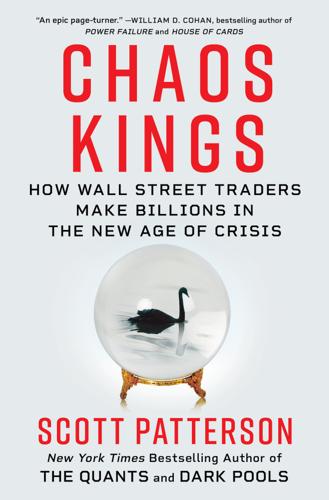
Chaos Kings: How Wall Street Traders Make Billions in the New Age of Crisis
by
Scott Patterson
Published 5 Jun 2023
Despite a few ominous wobbles in previous weeks, the bull market seemed unstoppable. Few expected that would change anytime soon—making Taleb’s bets dirt cheap. No one else wanted them. In the middle of the day, a trader, pale white and clearly suffering, approached him. “Don’t they know that six sigma events only happen once in a lifetime?” he said in an eerily quiet voice. (A six sigma event is roughly two in a billion in a normal distribution; in reality they are far more common in the financial world, which doesn’t obey the laws of a normal distribution—it has fat tails and Black Swans.) “The market doesn’t know,” Taleb replied. Some people stood shell-shocked in the middle of the trading room quietly crying.
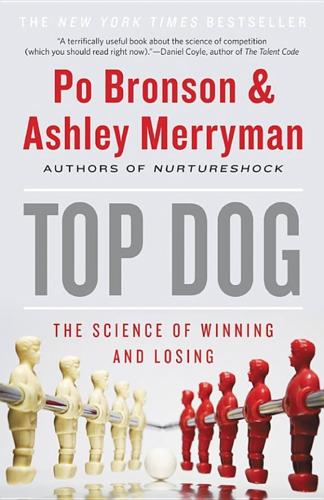
Top Dog: The Science of Winning and Losing
by
Po Bronson
and
Ashley Merryman
Published 19 Feb 2013
But in the long run, employees need to have gain-orientation to sustain growth. In the mid-2000s, Westinghouse Electric’s nuclear plant division realized it had a deep-seated culture problem. Their engineers had spent years absorbing a management strategy called Six Sigma, which has as its goal the eradication of errors from industrial processes. A Six Sigma process is one in which 99.99966% of the products manufactured are statistically expected to be free of defects. With this strategy firmly in place, Westinghouse had never bid on jobs unless its engineers already knew exactly what they’d be doing: they had to have proven, mistake-free expertise before even considering a new contract.
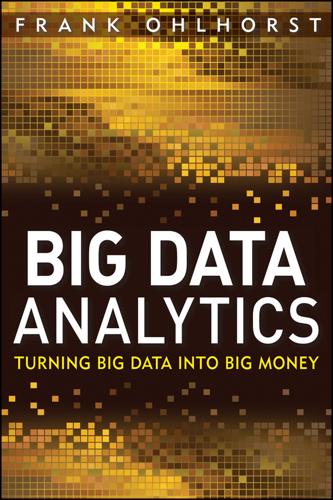
Big Data Analytics: Turning Big Data Into Big Money
by
Frank J. Ohlhorst
Published 28 Nov 2012
Miller, and Allan Russell Manufacturing Best Practices: Optimizing Productivity and Product Quality by Bobby Hull Marketing Automation: Practical Steps to More Effective Direct Marketing by Jeff LeSueur Mastering Organizational Knowledge Flow: How to Make Knowledge Sharing Work by Frank Leistner The New Know: Innovation Powered by Analytics by Thornton May Performance Management: Integrating Strategy Execution, Methodologies, Risk, and Analytics by Gary Cokins Retail Analytics: The Secret Weapon by Emmett Cox Social Network Analysis in Telecommunications by Carlos Andre Reis Pinheiro Statistical Thinking: Improving Business Performance, Second Edition by Roger W. Hoerl and Ronald D. Snee Taming the Big Data Tidal Wave: Finding Opportunities in Huge Data Streams with Advanced Analytics by Bill Franks The Value of Business Analytics: Identifying the Path to Profitability by Evan Stubbs Visual Six Sigma: Making Data Analysis Lean by Ian Cox, Marie A. Gaudard, Philip J. Ramsey, Mia L. Stephens, and Leo Wright For more information on any of the above titles, please visit www.wiley.com. Cover image: @liangpv/iStockphoto Cover design: Michael Rutkowski Copyright © 2013 by John Wiley & Sons, Inc.
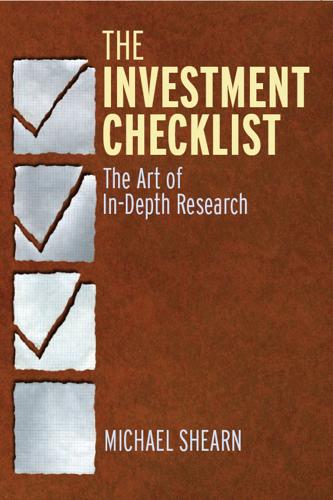
The Investment Checklist: The Art of In-Depth Research
by
Michael Shearn
Published 8 Nov 2011
The GE Way is taught at GE’s management school: It involves rotating managers through many jobs, teaches them how to grow a business through acquisitions, and teaches productivity and quality-control tools such as Six Sigma. When Jim McNerney was passed over as CEO of GE, he was immediately recruited by 3M to be CEO (in 2001). Once he was CEO of 3M, he immediately began to look for acquisitions to make, and he instituted money-saving Six Sigma process-management systems companywide.16 By reading about the GE Way, you would have had a great insight into how McNerney would likely manage 3M. 37. How are senior managers compensated, and how did they gain their ownership interest?
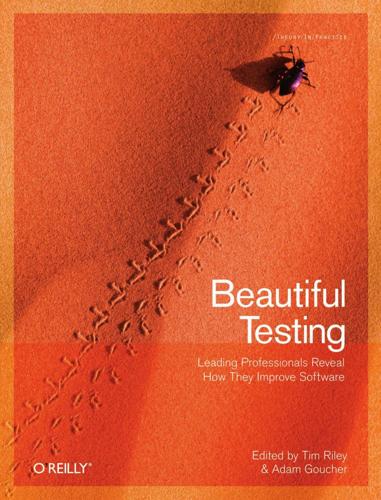
Beautiful Testing: Leading Professionals Reveal How They Improve Software (Theory in Practice)
by
Adam Goucher
and
Tim Riley
Published 13 Oct 2009
But I’m grateful that in this imperfect world, people do their best to create products that matter. And each of those products needs people who can test. 170 CHAPTER TWELVE CHAPTER THIRTEEN Software Development Is a Creative Process Chris McMahon OF THE WELL - KNOWN SOFTWARE DEVELOPMENT QUALITY PROCESSES come to us from the manufacturing industry. ISO9000, Six Sigma, and Lean all come from the assembly line, as does CMM to a certain extent. They are certainly all effective in the environments in which they were conceived. M OST And yet for every software business that succeeds in improving quality by these means, any number of others fail to get any benefit, regardless of how much they spend implementing the systems.
…
He lives in rural southwest Colorado, but contributes to a couple of magazines, several mailing lists, and is even a character in a book about software testing. M URALI N ANDIGAMA is a quality consultant and has more than 15 years of experience in various organizations, including TCS, Sun, Oracle, and Mozilla. Murali is a Certified Software Quality Analyst, Six Sigma lead, and senior member of IEEE. He has been awarded with multiple software patents in advanced software testing methodologies and has published in international journals and presented at many conferences. Murali holds a doctorate from the University of Hyderabad, India. B RIAN N ITZ has been a software engineer since 1988.
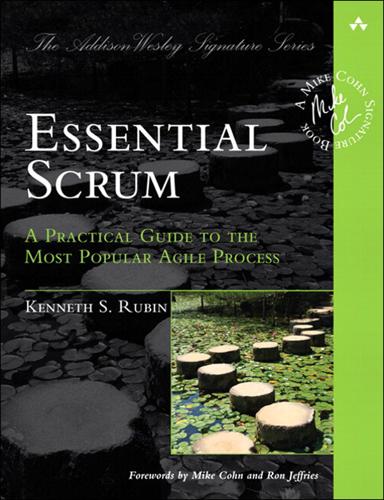
Essential Scrum: A Practical Guide to the Most Popular Agile Process
by
Kenneth S. Rubin
Published 19 Jul 2012
For example, a performance optimization effort that calls for adjusting parameters to find the best overall system performance would be better served by assembling experts and letting them assess the situation, investigate several options, and base their response on good practice. Much of day-to-day software maintenance (dealing with a flow of product support or defect issues) falls into this category. This is also where many of the tactical, quantitative approaches like Six Sigma are particularly well suited, although these tactical approaches can also apply with simple domains. Simple Domain When dealing with simple problems, everyone can see cause and effect. Often the right answer is obvious and undisputed. This is the domain of legitimate best practices. There are known solutions.
…
See Plan-driven development Servant leader defined, 416 ScrumMaster as servant leader of Scrum team, 186 Servicing technical debt Boy Scout rule for, 158–159 incrementally, 159 overview of, 155–156 paying high-interest debt first, 160 reasons for not repaying, 157–158 while performing customer-valuable work, 160–162 Shared context creating for sprint retrospective, 382–384 emotions seismograph as aid in creating, 384–385 event timeline as aid in creating, 384 mining for insights, 385 Shippable product. See Potentially shippable product increments (PSIs) Sign-offs, sprint review issues, 372 Silent grouping exercise for clustering insights, 386 defined, 416 Simple domain in Cynefin framework, 6–8 defined, 417 Single-piece flow, 48, 417 Six Sigma, 8 Size in cost evaluation related to product backlog, 20 estimates, 102–103 Skills inputs to sprint planning, 338 managers role in development of competence, 231–232 of product owner, 171–173 of ScrumMaster, 188–190 technical practices for task performance, 355–356 Small criteria, INVEST, 92 Small teams favored for Scrum development, 206 high-bandwidth communication and, 205 SMEs (Subject matter experts), 169 Software development, issues related to, 5 Solutions benefits of Scrum for, 4 defined, 417 faster and better, 201 innovative, 32 Specialists, on development team, 202 Specification by example, 85, 417 Spikes, knowledge-acquisition user stories, 93 Sprint backlog defined, 417 estimating, 122 as input to sprint review, 368–369 sprint planning and, 264 Sprint burndown chart, 357–359 Sprint burnup chart, 359–360 Sprint demo, 368, 370, 417 Sprint execution communicating progress of, 356 daily scrum and, 354 deciding which work to start, 352 determining which work needs to be done, 353–354 flow management and, 111–112, 349–350 organizing task work, 352–353 overview of, 23, 347 parallel work and swarming, 350–352 participants in, 348 performed by development team, 196–197 planning, 349 process of, 348–349 sprint burndown chart and, 357–359 sprint burnup chart and, 359–360 task board and, 356–357 technical practices for task performance, 355–356 timing of, 347 who does the work, 354 Sprint goal defined, 417 inputs to sprint planning, 338 inputs to sprint review, 368–369 maintaining despite changes, 69–73 refining, 346 selecting product backlog items that align with, 343–344 setting in planning process, 21 Sprint maps, in release planning, 310, 316–318 Sprint planning acquiring confidence, 344–346 a day in the life of product owner, 175 defined, 417 determining capacity in, 340–343 finalizing commitment, 346 managing economics of, 168 in multilevel planning, 263 one-part approach to, 339–340 overview of, 21–23, 335 participants in, 335–336 planning level details for, 258 process of, 336–338 product owner participating in, 169 refining sprint goal, 346 responsibilities of development team, 197 selecting product backlog items, 343–344 terminology choices for sprint planning outcomes, 17–18 timing of, 335 two-part approach to, 338–339 Sprint results.
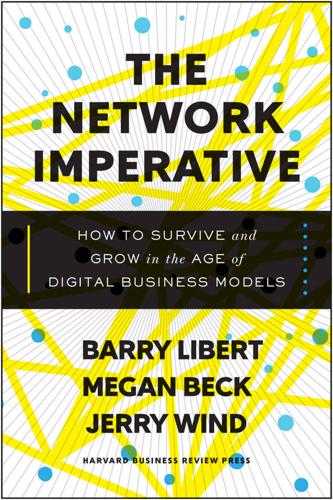
The Network Imperative: How to Survive and Grow in the Age of Digital Business Models
by
Barry Libert
and
Megan Beck
Published 6 Jun 2016
Thirty years ago, when essentially all assets were tangible, the best corporate leaders were those who could acquire and finance assets, manage a tight manufacturing process, hire and manage thousands of people, operate well, and grow their businesses to a competitive scale. In 1985, lean manufacturing and Six Sigma were the buzzwords, and Fortune’s most admired corporations were IBM, Coca-Cola, Dow Jones, 3M, and Hewlett-Packard. A lot has changed in thirty years, but two changes stand out clearly: the growth and ubiquity of digital technology, and the ongoing rapid, and exponentially increasing, pace and magnitude of change.
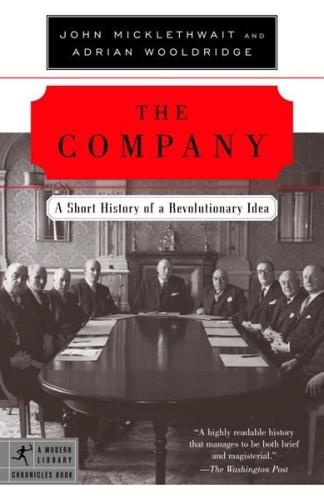
Company: A Short History of a Revolutionary Idea
by
John Micklethwait
and
Adrian Wooldridge
Published 4 Mar 2003
In the first five years of the 1990s, IBM, a company once so stable that it refused to sack people during the Depression, laid off 122,000 of its workers, roughly a quarter of the total. Jack Welch’s two-decade reign at General Electric began in the 1980s with a period of shocking corporate brutality. A series of quasi-Maoist revolutions followed, complete with slogans (Work Out, Six Sigma, Destroyyourbusiness.com) and methods (getting thousands of managers to measure each other’s “boundarylessness,” and sacking the underperformers). By the time Welch retired in 2002, GE, which had repeatedly been voted the world’s most admired company, had become at its heart a services conglomerate.
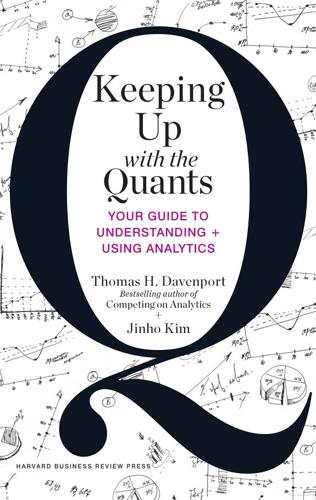
Keeping Up With the Quants: Your Guide to Understanding and Using Analytics
by
Thomas H. Davenport
and
Jinho Kim
Published 10 Jun 2013
At the end of each of the three chapters we’ll lay out two examples—generally one from business and one involving society in general or personal experience—that illustrate how all six steps were employed in an analysis, but again focus in particular on one stage of the analysis. Our three-stage, six-step process isn’t the only way to do analytics (for example, there is a Six Sigma methodology for analyzing variation in product quality yielding no more than 3.4 defects per million products produced), but we expect that most analytical experts would agree with it, and it’s broad enough to encompass a lot of different types of business problems and analyses. The Problem Recognition Step 1.
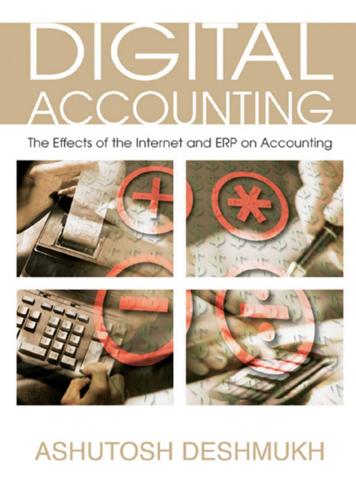
Digital Accounting: The Effects of the Internet and Erp on Accounting
by
Ashutosh Deshmukh
Published 13 Dec 2005
The cost accounting system provides data useful for evaluating production function, determining product costs and generating information for inventory valuation for external reporting purposes. The twin objectives of quality and cost reduction have been a holy grail for manufacturing organizations. The last few decades have seen a number of methodologies, such as material requirements planning (MRP), manufacturing resource planning (MRP II), Just in Time (JIT), Robotics and Six Sigma, which strived to achieve these objectives. The conversion cycle is most visible in manufacturing organizations; however, the service industry has also benefited from conversion cycle concepts and theories. The conver- Copyright © 2006, Idea Group Inc. Copying or distributing in print or electronic forms without written permission of Idea Group Inc. is prohibited.
…
These tools, as they become widely available, will be definitely used by accountants and required to be evaluated by auditors. Exhibit 19. TransactionVision functionalities Transactionvision Business activity monitoring End-to-end transaction tracking Sales and marketing analytics • Managing service levels • Six sigma initiatives • Operational risk management • Straight through processing • Audit logging and fraud detection • Improving service levels • Resolving problems • Optimizing transaction performance • Planning system capacity • Assuring quality • Key performance indicators • Post promotion evaluation • Category management Exhibit 20.
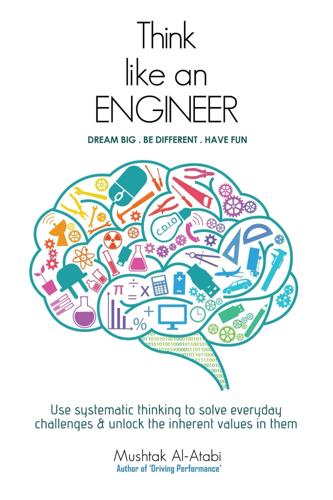
Think Like an Engineer: Use Systematic Thinking to Solve Everyday Challenges & Unlock the Inherent Values in Them
by
Mushtak Al-Atabi
Published 26 Aug 2014
For example, a project to address the gap in point 1 above can have the objective of improving satisfaction level of online customers (Specific customer segment) by 20% (Measurable) within 3 months (Time-bound). The Objective is Attainable and Realistic as well. The Scope of the project refers to the extent to which the project will go to achieve the objective(s). This can be, for example, “The project will focus on training the customer service staff” or “Implement a Six Sigma quality assurance programme to improve the quality of the products.” 6. What are the resources the project needs to succeed? 7. Who are the Stakeholders of the project? Stakeholders of a project are individuals, groups or entities that are affected or impacted by the project, and can affect or impact its successful completion.
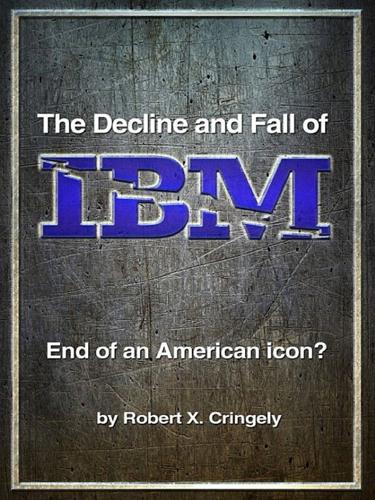
The Decline and Fall of IBM: End of an American Icon?
by
Robert X. Cringely
Published 1 Jun 2014
Any evaluation of a technical requirement, which almost always results in something else for the better, especially in the software world, is considered scope change by these morons and for which you have to go through some ridiculous change management process to implement, and to which they object because they just don’t get it. bob / August 8, 2013 / 5:22 pm Beatles’ songs spoof IBM I’m just disappointed that I spent nearly three decades honing my denial of what the people at the helm were really about. I bought into the “corporate values” and the rest of the rah rah (e.g. “six sigma quality”, “transformation”), all the while bucking inner suspicions that nothing of lasting quality could come of the endless stream of clueless personnel and technical decisions, or of career promotion being proportional to obedience, while inversely proportional to hard work and innovating first in one’s approach and methods, and then in the products themselves.
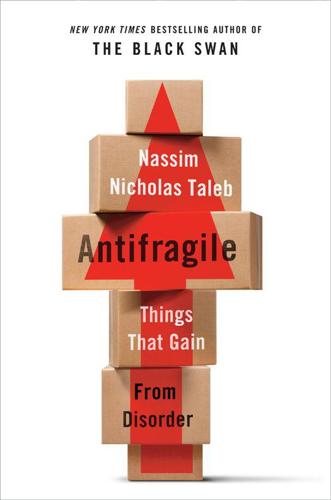
Antifragile: Things That Gain From Disorder
by
Nassim Nicholas Taleb
Published 27 Nov 2012
When, at Wharton, I discovered that I wanted to specialize in a profession linked to probability and rare events, a probability and randomness obsession took control of my mind. I also smelled some flaws with statistical stuff that the professor could not explain, brushing them away—it was what the professor was brushing away that had to be the meat. I realized that there was a fraud somewhere, that “six sigma” events (measures of very rare events) were grossly miscomputed and we had no basis for their computation, but I could not articulate my realization clearly, and was getting humiliated by people who started smoking me with complicated math. I saw the limits of probability in front of me, clear as crystal, but could not find the words to express the point.
…
For instance, for a deviation that is called “three sigma,” events that should take place no more than one in 740 observations, the probability rises by 60% if one moves the standard deviation up by 5%, and drops by 40% if we move the standard deviation down by 5%. So if your error is on average a tiny 5%, the underestimation from a naive model is about 20%. Great asymmetry, but nothing yet. It gets worse as one looks for more deviations, the “six sigma” ones (alas, chronically frequent in economics): a rise of five times more. The rarer the event (i.e., the higher the “sigma”), the worse the effect from small uncertainty about what to put in the equation. With events such as ten sigma, the difference is more than a billion times. We can use the argument to show how smaller and smaller probabilities require more precision in computation.
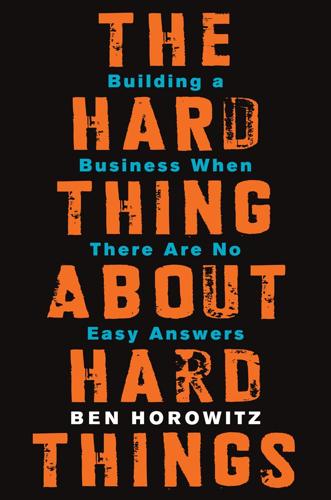
The Hard Thing About Hard Things: Building a Business When There Are No Easy Answers
by
Ben Horowitz
Published 4 Mar 2014
With four thousand people, communication becomes more difficult. Ad hoc, point-to-point communication no longer works. You need something more robust—a communication bus or, to use the conventional term for human communication buses, a process. A process is a formal, well-structured communication vehicle. It can be a heavily engineered Six Sigma process or it can be a well-structured regular meeting. The size of the process should be scaled up or down to meet the needs of the communication challenge that it facilitates. When communication in an organization spans across organizational boundaries, processes will help ensure that the communication happens and that it happens with quality.

The Year Without Pants: Wordpress.com and the Future of Work
by
Scott Berkun
Published 9 Sep 2013
In anthropology terms, this superficial mimicry is called a cargo cult, a reference to the misguided worship of abandoned airplane landing strips among tribes hoping for the goods that airplanes had delivered to return. Every year new trends in work become popular in spite of their futility for most organizations that try them. These trends are often touted as revolutions and frequently are identified with a high-profile company of the day. Concepts like casual Fridays, brainstorming sessions, Lean, Six Sigma, Agile, matrixed organizations, or even 20 percent time (Google's policy of supporting pet projects) are management ideas that became popular in huge waves, heralded as silver bullets for workplaces. The promise of a trend is grand, but the result never is. Rarely do the consultants championing, and profiting from, these ideas disclose how superficial the results will be unless they're placed in a culture healthy enough to support them.

Invisible Influence: The Hidden Forces that Shape Behavior
by
Jonah Berger
Published 13 Jun 2016
What once signaled cool starts to signal trying too hard. So teens abandon the phrase. And by the time Grandma starts saying she’s ready to dip out from Thanksgiving dinner, everyone has moved on to something else. Companies want to show they’re ahead of the curve, so they glom on to management styles like Six Sigma and total quality management. Big or successful companies breed imitators, so smaller firms start copying anything they see “innovative” firms doing. But once enough imitators have copied, these approaches lose their value as signals that the firm is a pioneer. So firms that want to stand out have to move on.

On Paradise Drive: How We Live Now (And Always Have) in the Future Tense
by
David Brooks
Published 2 Jun 2004
or machines to black boots, scour knives, pare apples, and do a hundred things that all other peoples have done with their ten fingers from time immemorial?” Maybe, maybe not. But it is true that in this land of two hundred iced-tea flavors and four hundred shower-head designs that people get ahead by finding their Fry! And it is not only gadgets. It is management procedures, consulting schemes, best practices notions, Six Sigma philosophies. Sales conferences across the land are filled with slightly deranged enthusiasts earnestly pushing their own conceptual breakthrough that will build teams, enhance customer loyalty, revolutionize corporate governance, ensure profitability, unify mankind, assure eternal peace and global understanding, and trim flabby thighs all in thirty days!
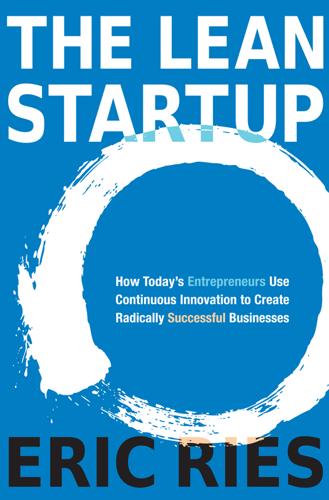
The Lean Startup: How Today’s Entrepreneurs Use Continuous Innovation to Create Radically Successful Businesses
by
Eric Ries
Published 13 Sep 2011
Variation in process yields products of varying quality in the eyes of the customer that at best require rework and at worst lead to a lost customer. Most modern business and engineering philosophies focus on producing high-quality experiences for customers as a primary principle; it is the foundation of Six Sigma, lean manufacturing, design thinking, extreme programming, and the software craftsmanship movement. These discussions of quality presuppose that the company already knows what attributes of the product the customer will perceive as worthwhile. In a startup, this is a risky assumption to make. Often we are not even sure who the customer is.

Nomadland: Surviving America in the Twenty-First Century
by
Jessica Bruder
Published 18 Sep 2017
Truck accidents: Sarah Volpenhein, “Amid Sugar Beet Truck Accidents, Some Question Minnesota, North Dakota Regulations for Ag Drivers,” The Grand Forks Herald, October 7, 2015, http://www.grandforksherald.com/news/business/3856308-amid-sugar-beet-truck-accidents-some-question-minnesota-north-dakota. 194. Definition of “takt”: https://ocw.mit.edu/courses/engineering-systems-division/esd-60-lean-six-sigma-processes-summer-2004/lecture-notes/8_1assembly_op.pdf. CHAPTER TEN 202. LaVonne on feeling homeless: http://www.completeflake.com/what-vandwelling-is-really-like. 203. LaVonne on untouchables: http://www.completeflake.com/second-chances. 204. Bob’s definition of homeless: Bob Wells, How to Live in a Car, Van or RV: And Get Out of Debt, Travel, & Find True Freedom, CreateSpace Independent Publishing Platform, 2014, pp. 6–7. 205.

How to Speak Money: What the Money People Say--And What It Really Means
by
John Lanchester
Published 5 Oct 2014
That’s 99.993 percent unlikely, meaning 1 in 15,788. It’s about the chance that you will die in a fall this year. With five sigma, we’re going way past the edges of the humanly probable: it’s 1 in 1.74 million. In terms of the chance that an event will happen on a given day, a five-sigma event is supposed to happen one day in every 13,932 years. Six sigma is even bigger; it’s one day in every 4,039,906 years, and seven sigma is one day in every 3,105,395,365 years. In recent years, the mathematical models used by banks repeatedly calculated events as being at these levels of probability, despite the fact that the events kept happening. The obvious lesson was that the models were wrong, but the banks went on using them anyway.

Brave New Work: Are You Ready to Reinvent Your Organization?
by
Aaron Dignan
Published 1 Feb 2019
It’s a piece of the puzzle, not the whole thing. It is necessary but not sufficient. It turns out agility isn’t an anomaly in this way. Many management innovations have emerged in the last half century, each promising to revolutionize work as we know it. Lean Manufacturing. Total Quality Management. ISO 9000. Six Sigma. Sociocracy. Holacracy. The Lean Startup. The list goes on and on. Each was, in its own way, a piece of an operating system. Some were misguided from the start. Others became perversions of themselves over time. And a few offered real wisdom that is yet to be fully realized. Thich Nhat Hanh wrote in Old Path White Clouds, “A finger pointing at the moon is not the moon.”
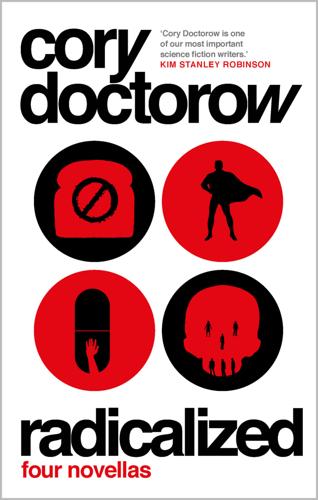
Radicalized
by
Cory Doctorow
Published 19 Mar 2019
If knowing a secret could make a stupid, unworthy person rich, then sooner or later, smart, superior people would find that secret out and clear out the misallocated wealth of all those dimbulbs. Markets were awesome at this. Back when everyone lived in shithole mud-street villages, the superior people had no choice but to breed with whoever was in the vicinity. Even a one-in-ten-million, six-sigma genius would end up hitched for life to some cow-eyed milkmaid, diluting the incredible genes he’d been handed by nature’s Powerball lotto. But little by little, humans got smarter, as the geniuses found smarter milkmaids, until they could build markets and then the information systems that markets thrived on, and then the information asymmetry started to collapse, slowly at first, then all at once, like a cliff that had been undermined by the inexorable tide of millions of human actions harnessed to the common goal of improving the species and its dominion over the earth.
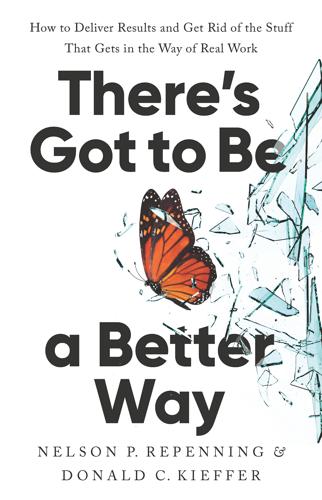
There's Got to Be a Better Way
by
Nelson P. Repenning
and
Donald C. Kieffer
Published 26 Aug 2025
THE POWER OF THE PROBLEM STATEMENT When we teach our dynamic work design course at MIT, many of the students are in the same place Don was before he met Mr. Oba. They have built their careers on solving big problems and getting things done. Most of them also have training in one or more structured problem-solving methods, such as Six Sigma’s DMAIC (Define, Measure, Analyze, Intervene, Control). But they are now focused on larger complex issues that impact their organizations in big ways. When we announce that the class is organized around a small problem-solving project and that they need to use a structured approach, they often protest that they are way past small problems and rote methods.
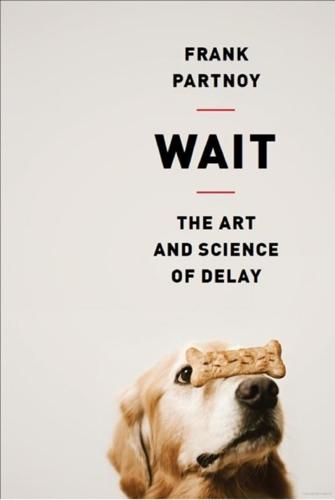
Wait: The Art and Science of Delay
by
Frank Partnoy
Published 15 Jan 2012
In 2001, in the aftermath of the collapse of Enron, Minnesota Mining hired as its new leader James McNerney, an executive at General Electric who had lost the competition to replace Jack Welch as GE’s CEO. McNerney was by all accounts an accomplished professional manager, but he was not a scientist. He was not a tinkerer. McNerney implemented the “six sigma” system of cutting costs and improving efficiency. During his first two years, Minnesota Mining cut nearly 10,000 jobs and closed a dozen plants. It changed its name to 3M. After two more years focused on efficiency, McNerney left to become CEO of Boeing. So much for Mother Mining. During his four years at the helm, the company’s culture became less patient.

The Second Machine Age: Work, Progress, and Prosperity in a Time of Brilliant Technologies
by
Erik Brynjolfsson
and
Andrew McAfee
Published 20 Jan 2014
Instead of putting the machines needing the most power closest to the power source, the layout was based on a simple and powerful new principle: the natural workflow of materials. Productivity didn’t merely inch upward on the resulting assembly lines; it doubled or even tripled. What’s more, for most of the subsequent century, additional complementary innovations, from lean manufacturing and steel minimills to Total Quality Management and Six Sigma principles, continued to boost manufacturing productivity. As with earlier GPTs, significant organizational innovation is required to capture the full benefit of second machine age technologies. Tim Berners-Lee’s invention of the World Wide Web in 1989, to take an obvious example, initially benefited only a small group of particle physicists.

Peers Inc: How People and Platforms Are Inventing the Collaborative Economy and Reinventing Capitalism
by
Robin Chase
Published 14 May 2015
The Peers Inc framework lets us apply that drive with more discretion. The industrial process taught us that tight control delivered the highest precision and quality (something we still want in the manufacturing of things such as smartphones, light bulbs, and refrigerators, and which can be achieved using tools such as Six Sigma). Managers sought to eradicate variation through this centralized control. The bigger the company, the greater the urge to centralize. I remember case studies from my business school strategy classes during the mid-1980s that encouraged an enlightened flexibility. If a centralized company was failing, then it should decentralize!

All Day Long: A Portrait of Britain at Work
by
Joanna Biggs
Published 8 Apr 2015
Men ‘just go to work and just expect meals to be cooked and kids to be fed, washed and watered. They think magic fairies exist! Because they don’t put a value on housework, they’re like what did you do with your day? So you have to find that worth yourself. I strongly believe in gender definition. It’s like the Six Sigma system of running a company in the sense that men and women have their own roles and contributions to make to the tranquility and efficiency of the home.’ In The Second Sex, Simone de Beauvoir saw cleaning the house as a way to hold away death but refuse life; Ann Oakley called housework ‘work directly opposed to the possibility of human self-actualisation’.
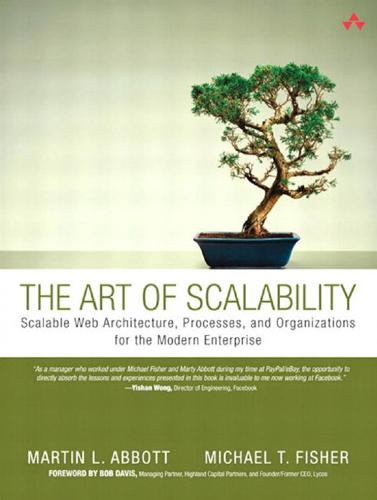
The Art of Scalability: Scalable Web Architecture, Processes, and Organizations for the Modern Enterprise
by
Martin L. Abbott
and
Michael T. Fisher
Published 1 Dec 2009
Prior to joining PayPal, Michael spent seven years at General Electric helping to develop the company’s technology strategy and processes. Michael has a B.S. in computer science from the United States Military Academy, an M.S. from Hawaii Pacific University, a Ph.D. in management information systems from Kennedy Western University, and an M.B.A. from Case Western Reserve University. Michael is a certified Six Sigma Master Black Belt and is pursuing a doctorate in management from Case Western Reserve University. xxv This page intentionally left blank Introduction This book is about the art of scale, scalability, and scaling of technology organizations, processes, and platforms. The information contained within has been carefully designed to be appropriate for any employee, manager, or executive of an organization or company that provides technology solutions.
…
Total = (9 × 5) + (1 × 4) + (9 × 3) + (−3 × 2) + (−3 × 1) Figure 19.4 Total Calculation 294 C HAPTER 19 F AST OR R IGHT ? Fast or Right Checklist • What does your gut tell you about the tradeoff? • What are the pros and cons of each alternative? • Is a more formal analysis required because of the risk or magnitude of the decision? • If a more formal analysis is required: What are the most important factors? In Six Sigma parlance, these are critical to quality indicators. How do these factors rank compared to each other—that is, what is the most important one of these factors? What are the actual tradeoffs being discussed? How do these tradeoffs affect the factors? • Would you feel comfortable standing in front of your board explaining your decision based on the information you have today?
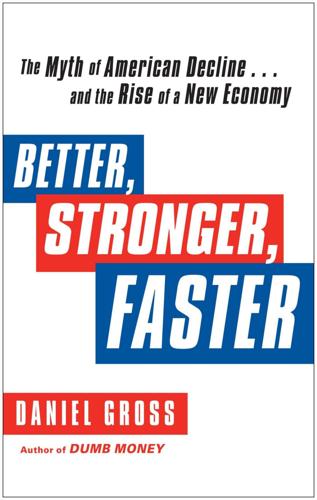
Better, Stronger, Faster: The Myth of American Decline . . . And the Rise of a New Economy
by
Daniel Gross
Published 7 May 2012
McKinsey’s armies of whip-smart technocrats roamed the globe, peddling expensive advice on how to rationalize operations. In the happy expansion of the 2000s, efficiency and internal resources were easily overlooked. Manufacturers realized they could save more money simply by relocating production to Shenzhen, China, than they could by dispatching Six Sigma ninjas to improve operations. With debt flowing like a mighty stream and prices and asset values rising to the sky, what was the point of worrying about operational efficiencies? The discipline of business engineering was subordinated to financial engineering, as elite business schools created degrees and concentrations in the dark art.
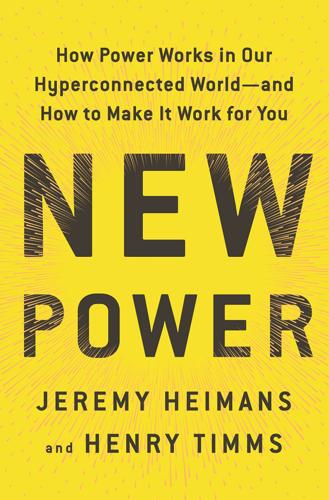
New Power: How Power Works in Our Hyperconnected World--And How to Make It Work for You
by
Jeremy Heimans
and
Henry Timms
Published 2 Apr 2018
The signal she is trying to send, therefore, is clear: I failed at this and I’m still here. It’s not just OK to engage the crowd and fail spectacularly at GE; it is expected and embraced. Consider how different a philosophy this is from that of the legendary GE leader Jack Welch, who made his reputation through elimination of error and failure with his Six Sigma management process, and through elimination of staff with ruthless and regular culls. It was the layoffs that earned him the nickname “Neutron Jack,” because he’d explode and empty a building of people while leaving the structure standing. Comstock leads very differently. In GE nickname terms, we could think of her as Electron Beth, defined not by how she blows things up, but by how she binds people together.
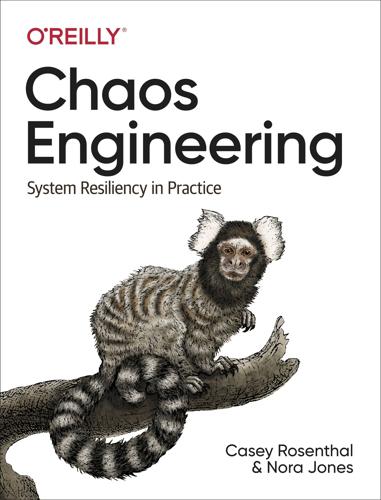
Chaos Engineering: System Resiliency in Practice
by
Casey Rosenthal
and
Nora Jones
Published 27 Apr 2020
Roughly this philosophy corresponds to the latest research and trends in Safety Science and Resilience Engineering since the early 2000s, including concepts like “Safety-II” and “Safety Differently” popularized in the academic and popular literature on the subject. See Sidney Dekker, “Reconstructing Human Contributions to Accidents” (Journal of Safety Research 33 (2002), pp. 371–385), for an early exposition of “new view” safety. 2 Think of process management and process improvement methods such as Lean, Six Sigma, knowledge management, training, and so on. In the software world, this would include XP, Agile, and DevOps, but the term HPT usually applies to manufacturing and is not commonly applied to software. Chapter 19. Chaos Engineering on a Database Liu Tang and Hao Weng Why Do We Need Chaos Engineering?
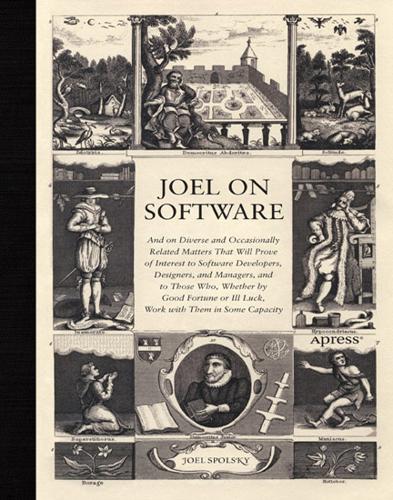
Joel on Software
by
Joel Spolsky
Published 1 Aug 2004
So I had sort of assumed that every software operation had testers. Many do. But a surprising number do not have testers. In fact, a lot of software teams don't even believe in testing. You would think that after all the quality mania of the '80s, with all kinds of meaningless international "quality" certifications like ISO-9000 and buzzwords like "six-sigma," managers today would understand that having high-quality products makes good business sense. In fact, they do. Most have managed to get this through their heads. But they still come up with lots of reasons not to have software testers, all of which are wrong. I hope I can explain to you why these ideas are wrong.
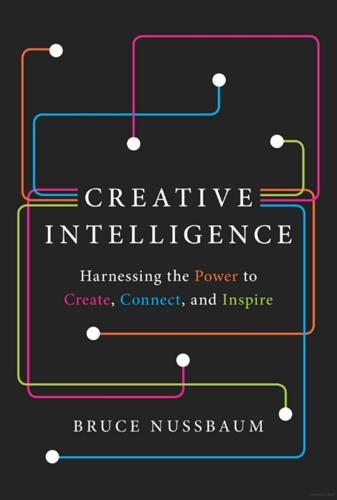
Creative Intelligence: Harnessing the Power to Create, Connect, and Inspire
by
Bruce Nussbaum
Published 5 Mar 2013
As I discovered from my investigation into the history of creativity research, the attempt to find quantitative measures of creativity hasn’t been very fruitful in the past. But what’s the alternative? We do, after all, tend to associate assessment with mathematical measurement. From the incessant testing that goes on in K–12 classes thanks to No Child Left Behind, to Six Sigma management in business, we constantly test by the numbers. But creativity doesn’t appear to lend itself to metric measurement at this point in time. Perhaps in the future, we might be able to come up with an algorithm that works. But for now, we need qualitative measures. So I set about talking to the most creative people I know about what to do, asking them, “How do we assess creativity?”
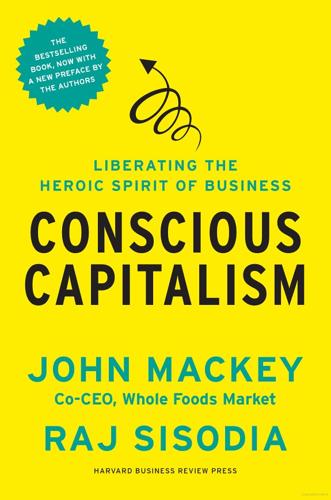
Conscious Capitalism, With a New Preface by the Authors: Liberating the Heroic Spirit of Business
by
John Mackey
,
Rajendra Sisodia
and
Bill George
Published 7 Jan 2014
A Journey Worth Taking Building a conscious business is a challenging but wonderfully rewarding and meaningful undertaking, whether such a business is created from scratch or is the outcome of a transformation. We recognize that many leaders have become weary of change. It seems there is a new set of buzzwords to deal with every few years—from total quality management to the reengineering of business processes to Six Sigma and numerous others. But Conscious Capitalism is no flavor-of-the-month fad. The ideas we have articulated result in a more robust business model than the profit-maximization model it competes against, because they acknowledge and tap into more powerful motivations than self-interest alone. Unlike many other types of changes, the move toward becoming a conscious business feels natural, because it is aligned with the natural human qualities of all stakeholders.
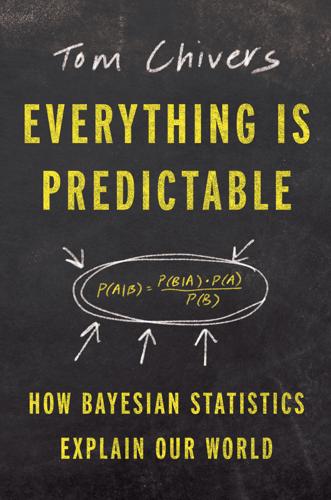
Everything Is Predictable: How Bayesian Statistics Explain Our World
by
Tom Chivers
Published 6 May 2024
Further investigation found that a fiber-optic cable in the clock system had not been screwed in properly—this meant that a laser signal within the clock was not picked up quite so quickly, speeding the apparent arrival of the neutrinos by about 75 nanoseconds—enough to make it seem as if they had got there before a beam of light could.24 Perhaps we should point out that, in a way, the frequentist-Bayesian argument doesn’t matter here, or at least it’s more complicated than I’ve made it seem. Whatever your Bayesian prior is, unless it’s something outrageous, then a six-sigma (standard deviation), p = 0.000000002 result would overwhelm it easily. I don’t think a reasonable Bayesian would be so confident as that: they’d need to think there’s only about a one-in-several-hundred-million chance that light speed could be broken. If you believed that the only explanation for the neutrinos’ apparent early arrival was that they had genuinely traveled that fast, then the result should have convinced you.
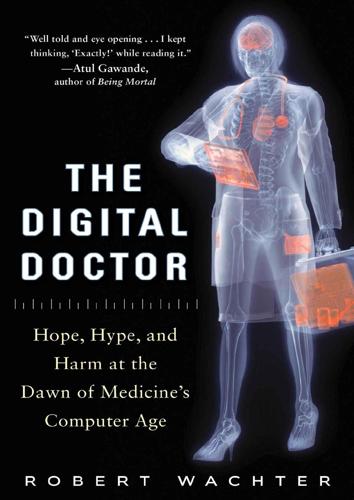
The Digital Doctor: Hope, Hype, and Harm at the Dawn of Medicine’s Computer Age
by
Robert Wachter
Published 7 Apr 2015
At that point, wrote Brynjolfsson and McAfee, “productivity didn’t merely inch upward on the resulting assembly lines; it doubled or even tripled. What’s more, for most of the subsequent century, additional complementary innovations, from lean manufacturing and steel mini-mills to Total Quality Management and Six Sigma principles, continued to boost manufacturing productivity.” This was a generational change—it took nearly 40 years for the productivity advantages of electric motors to be fully reflected in factory output statistics. Today as ever, changing the way that work is done often determines whether an organization will get its money’s worth from its IT investment.
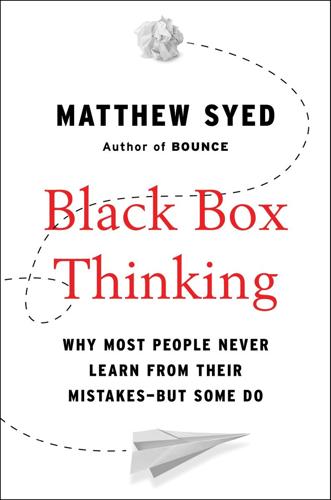
Black Box Thinking: Why Most People Never Learn From Their Mistakes--But Some Do
by
Matthew Syed
Published 3 Nov 2015
*Getting the manufacturing process running seamlessly is often about ironing out unwanted deviations. It is about using process controls and the like to reduce variation. Creative change is often about experimentation; in other words, increasing variation. For more on this distinction, and how to reconcile it, see: http://www.forbes.com/sites/ricksmith/2014/06/11/is-six-sigma-killing -your-companys-future/. *One issue that was never fully resolved with Libyan Arab Airlines Flight 114 is why, according to the pilot of one of the Israeli Phantoms, all the window shades were down. It seems almost certain that, with pressure high and time limited, the pilot did not notice that some of the shades were, in fact, up.

The Nature of Software Development: Keep It Simple, Make It Valuable, Build It Piece by Piece
by
Ron Jeffries
Published 14 Aug 2015
In 2016, Facebook announced that it has 1.13 billion daily active users.[3] An “application” now consists of dozens or hundreds of services, each running continuously while being redeployed continuously. Five nines of reliability for the overall application is nowhere near enough. It would result in thousands of disappointed users every day. Six Sigma quality on Facebook would create 768,000 angry users per day. (200 requests per page, 1.13 billion daily active users, 3.4 defects per million opportunities.) The breadth of our applications’ reach has exploded, too. Everything within the enterprise is interconnected, and then again as we integrate across enterprises.

Work Rules!: Insights From Inside Google That Will Transform How You Live and Lead
by
Laszlo Bock
Published 31 Mar 2015
Colleagues told me that the vaunted Session C process, a yearlong review of talent across the 300,000-person-strong company, had “lost its teeth” and “just wasn’t the same without Jack’s focus.”3 I didn’t have the benefit of having worked under both CEOs, but it dawned on me how deeply a CEO’s persona and focus can shape an institution. Most CEOs are very good at many things, but they become CEOs for being superbly distinctive at one or two, which tend to be matched to a company’s needs at that time. Even CEOs need to declare a major. Welch is best known for Six Sigma—a set of tools to improve quality and efficiency—and his focus on people. Immelt instead emphasized sales and marketing, most visibly through GE’s branded “ecomagination” efforts to make and be perceived as a maker of greener products. In 2006, after three years at GE, I was recruited to join Google as head of People Operations.
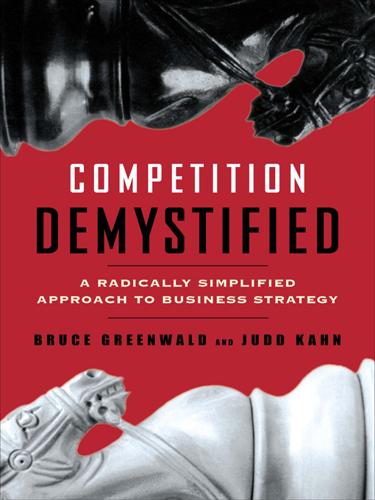
Competition Demystified
by
Bruce C. Greenwald
Published 31 Aug 2016
Prior to 1980, management education in the United States had concentrated more on finance and marketing than on operations. But starting in the late 1970s, almost certainly induced by the intensity of overseas competition, that emphasis began to change. Techniques and goals like benchmarking, reengineering, quality circles and total quality management, just-in-time production systems, and six sigma standards helped to focus management attention on operational performance. The improvement in manufacturing productivity has been sustained well past the point at which firms were threatened with extinction if they did not reform their operations. The rate of growth has accelerated without significant increases in the rate of capital investment, without measurable improvements in the quality of the labor force, and without a ballooning of spending on research and development.
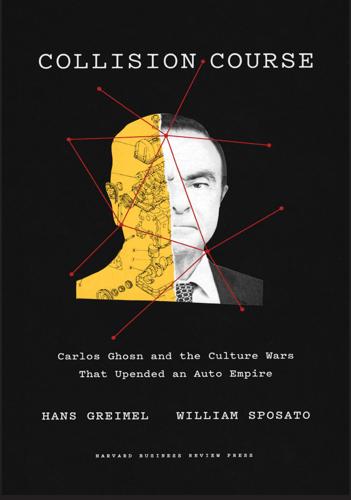
Collision Course: Carlos Ghosn and the Culture Wars That Upended an Auto Empire
by
Hans Gremeil
and
William Sposato
Published 15 Dec 2021
The former record holder, construction group Kongo Gumi of Osaka, was founded in 578, but was forced into liquidation in 2006 after taking on too much debt, a tribute to the old adage that past performance may not be indicative of future results. So, while many management gurus may look askance at Japan, these companies, and the major Japanese companies that followed, operated on a set of corporate values and principles that were created centuries before Six Sigma or Value Stream Mapping. In this world, owners and employees share a common vision that the company comes before the individual and that success comes from putting the needs of your customers first. This traditional Japanese corporate perspective was summed up in a late 1990s interview with a senior editor at the Asahi newspaper company.

Gnuplot in Action: Understanding Data With Graphs
by
Philipp Janert
Published 2 Jan 2010
I believe that graphical methods—which are accessible to anyone, regardless of mathematical or statistical training—are an excellent way to understand data and derive value from it (much better and more powerful than a five-day statistics class, and much more flexible and creative than a standard Six-Sigma program). And I believe that gnuplot is a very good tool to use for this purpose. Its learning curve is flat—you can pick up the basics in an hour. It requires no programming skills. It handles a variety of input formats. It’s fast and it’s interactive. It’s mature. It’s also free and open source.
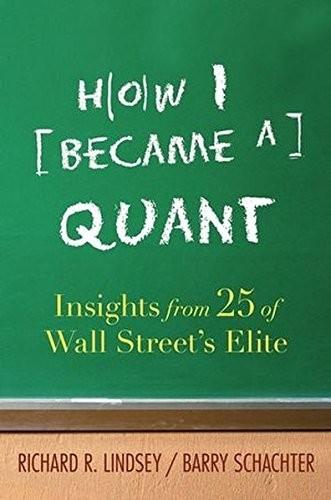
How I Became a Quant: Insights From 25 of Wall Street's Elite
by
Richard R. Lindsey
and
Barry Schachter
Published 30 Jun 2007
Berman 63 absurdity. There is a big difference between astronomy and astrology, but not everyone realizes that. And that’s what made me very good at this first job. While spending many a long lab night staring at printouts from spectrum analyzers and traces from particle detectors, I routinely observed hundreds of six-sigma events appearing and disappearing right in front of my eyes. In order to succeed in experimental physics, you had to build up a real intuition about what types of results were real, and what was nothing more than data-mining, curve-fitting, or just plain statistical anomaly. By the end of my second year of research at the fund, I had gone about as far as I could go; but fortunately so had one of the fund’s general partners with whom I happened (not accidentally) to have developed a very good working relationship.
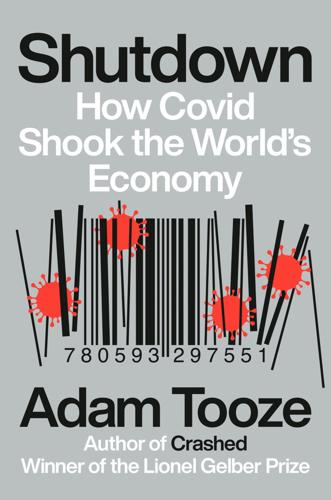
Shutdown: How COVID Shook the World's Economy
by
Adam Tooze
Published 15 Nov 2021
“FedEx Tries to Think Beyond the Pandemic,” Economist, July 2, 2020. 18. A. Wilkinson, “How the Coronavirus Outbreak Is Roiling the Film and Entertainment Industries,” VoxEU, September 23, 2020. A. Barker and A. Nicolaou, “The Unhinged Bet to Jump-Start the Movie Business,” Financial Times, June 16, 2020. A. Kaul, “The Six Sigma to Rescue 1 Million COVID-Affected Film Industry Workers,” Exchange4Media, May 2, 2020. A. Chopra, “How the Pandemic Hit Bollywood,” New York Times, May 15, 2020. A. Dhillon, “India’s Bollywood Cuts Kissing Scenes, Epic Dance Routines Under New Coronavirus Rules,” South China Morning Post, June 4, 2020. 19.

The Social Animal: The Hidden Sources of Love, Character, and Achievement
by
David Brooks
Published 8 Mar 2011
Maybe it was in B-School, maybe it was somewhere else, but the team of assholes had been trained in certain methodologies. They had been trained to turn management into a science. They didn’t really grow up steeped in the features of a specific product. They were trained to study organizations. Some did Dynamic Systems Theory, some did Six Sigma Analysis, or the Taguchi Method or Su-Field Analysis (structural-substance field analysis). There was TRIZ, a Russian-made model-based technology for producing creativity. There was Business Process Reengineering. Erica looked this one up on Wikipedia. According to one of the management books quoted on the site, BPR “escalates the efforts of JIT [Just In Time] and TQM [Total Quality Management] to make process orientation a strategic tool and a core competence of the organization.

Connectography: Mapping the Future of Global Civilization
by
Parag Khanna
Published 18 Apr 2016
Today’s complex global supply chains—hybrids of public and corporate actors—embody what the pioneering scholar James Rosenau called a “sphere of authority”: a trans-territorial, cross-jurisdiction entity that has low institutionalization, low visibility, multiple public and private operators and rule makers, and immense public relevance. 14. From the original Six Sigma manufacturing optimization process has grown a suite of tools such as electronic data interchange that leverage supplier and buyer data and market conditions to forecast volume and demand shifts, and sensor networks to track inventories, improve efficiency, and reduce waste. 15. Accenture’s Supply Chain Academy has managers from hundreds of Fortune 1000 companies enrolled in its thousands of online case study courses dedicated to achieving such business optimization. 16.
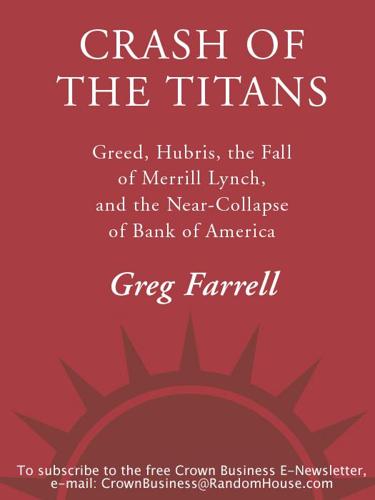
Crash of the Titans: Greed, Hubris, the Fall of Merrill Lynch, and the Near-Collapse of Bank of America
by
Greg Farrell
Published 2 Nov 2010
Meanwhile, BofA’s HR people spread out through Merrill Lynch’s headquarters to take the measure of the exotic creatures who would be joining their organization. At the executive level, BofA committed itself to various management trends popularized on business school campuses across the country. In recent years, the Charlotte bank had devoted its internal education programs to the “six-sigma” management program embraced by Jack Welch, the former CEO of General Electric who embarked on a new career as a management guru following his retirement. BofA executives put a lot of stock in psychological profiles and Myers-Briggs personality tests, which, among other things, purport to determine whether an individual is an introvert or an extrovert.
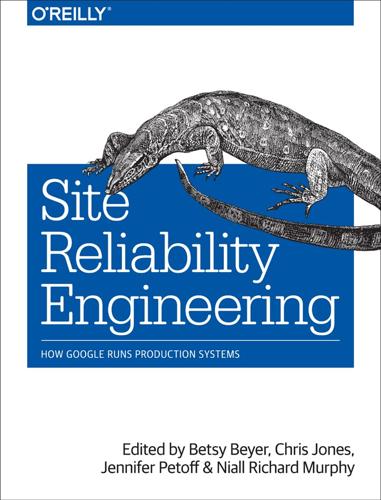
Site Reliability Engineering: How Google Runs Production Systems
by
Betsy Beyer
,
Chris Jones
,
Jennifer Petoff
and
Niall Richard Murphy
Published 15 Apr 2016
Reliability is critical in this space because impact of incidents ranges from multimillion-dollar loss of equipment to injuries and fatalities. Eddie Kennedy is a project manager for the Global Customer Experience team at Google and a mechanical engineer by training. Eddie spent six years working as a Six Sigma Black Belt process engineer in a manufacturing facility that makes synthetic diamonds. This industry is characterized by a relentless focus on safety, because the extremes of temperature and pressure demands of the process pose a high level of danger to workers on a daily basis. John Li is currently a Site Reliability Engineer at Google.
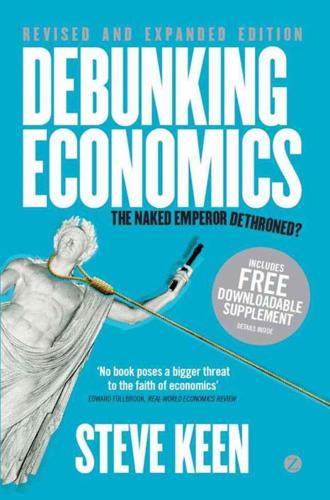
Debunking Economics - Revised, Expanded and Integrated Edition: The Naked Emperor Dethroned?
by
Steve Keen
Published 21 Sep 2011
However, an institutional investor – a pension fund, for example – with a weekly trading horizon, would probably consider that drop a buying opportunity because weekly returns over the past ten years have averaged 0.22 per cent with a standard deviation of 2.37 per cent. In addition, the technical drop has not changed the outlook of the weekly trader, who looks at either longer technical or fundamental information. Thus the day trader’s six-sigma [standard deviation] event is a 0.15-sigma event to the weekly trader, or no big deal. The weekly trader steps in, buys, and creates liquidity. This liquidity in turn stabilizes the market. (Peters 1994) The Fractal Markets Hypothesis thus explains the stability of the market by the realistic assumption that traders differ in their time horizons.

The Meritocracy Trap: How America's Foundational Myth Feeds Inequality, Dismantles the Middle Class, and Devours the Elite
by
Daniel Markovits
Published 14 Sep 2019
every assembly line: For a broad overview of modern supply chain management, see generally Martin Christopher, Logistics and Supply Chain Management, 5th ed. (Harlow: Pearson, 2016), 35 (discussing how “just-in-time” strategy results in minimal inventory), 194 (the use of event management software to manage inventory levels), 225–26 (discussing the merits of Six Sigma management techniques), 289 (a change-embracing corporate culture). For in-depth case studies of Walmart’s and Amazon’s supply chains, see Colby Ronald Chiles and Marguarette Thi Dau, “An Analysis of Current Supply Chain Best Practices in the Retail Industry with Case Studies of Wal-Mart and Amazon.com” (master’s thesis, Georgia Institute of Technology, 2005), 66, 70, 103–4 (discussing both companies’ culture of innovation, including Walmart’s “Everyday Low Prices” mentality and its managers’ autonomy and incentives to keep costs low).
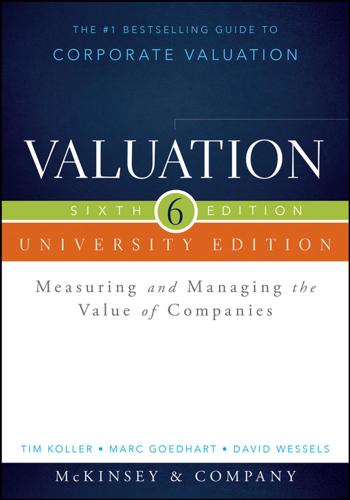
Valuation: Measuring and Managing the Value of Companies
by
Tim Koller
,
McKinsey
,
Company Inc.
,
Marc Goedhart
,
David Wessels
,
Barbara Schwimmer
and
Franziska Manoury
Published 16 Aug 2015
For a consumer electronics company, multiyear price trends for its individual products are an important indicator, as steadily declining prices often indicate lack of innovation compared with competitors. 2. Cost structure health metrics measure a company’s ability to manage its costs relative to competitors over three to five years. These metrics might include assessments of programs such as Six Sigma, a method made famous by General Electric and adopted by other companies to reduce CHOOSING THE RIGHT METRICS 585 costs continually and maintain a cost advantage relative to their competitors across most of their businesses. 3. Asset health measures how well a company maintains and develops its assets.